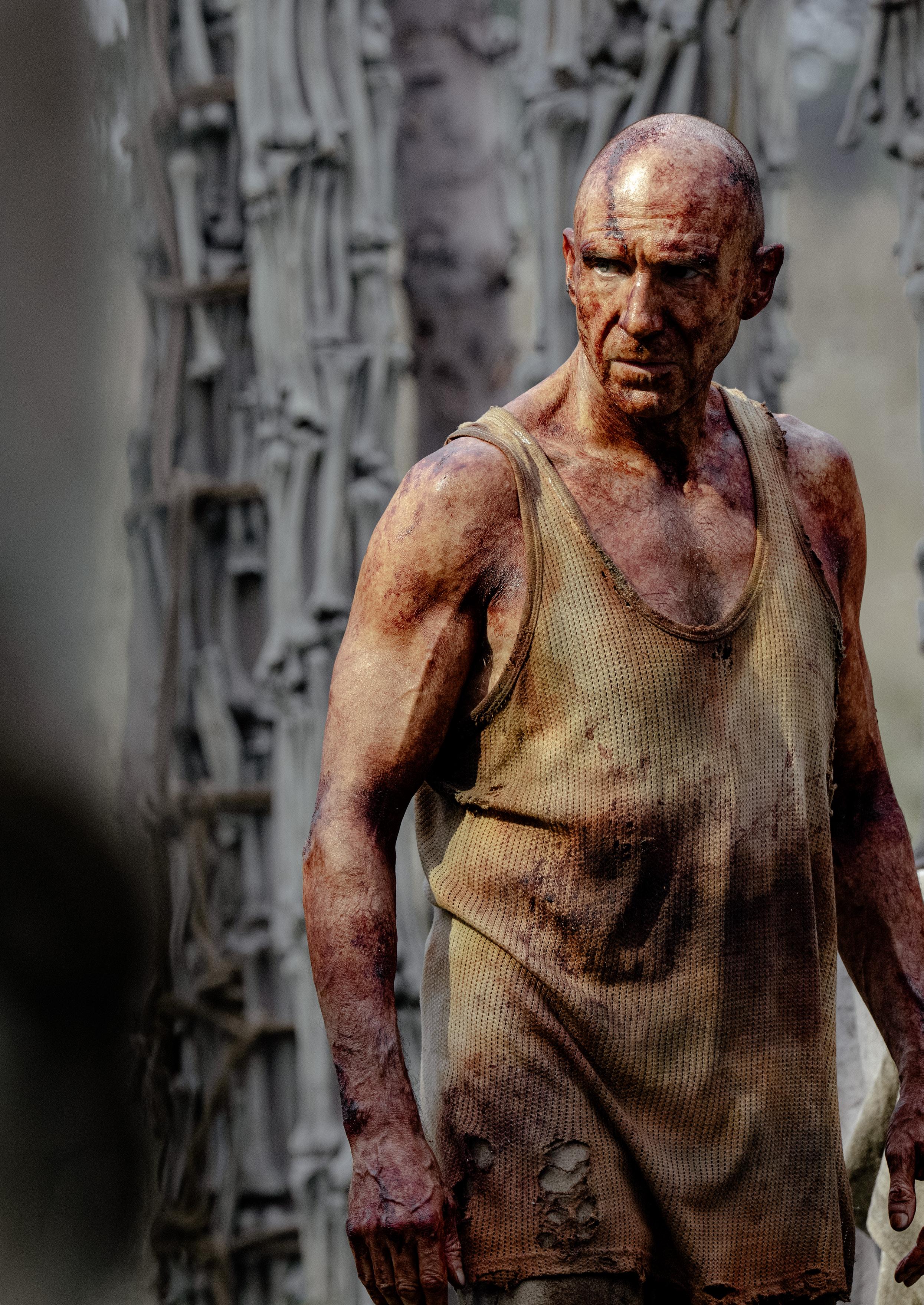




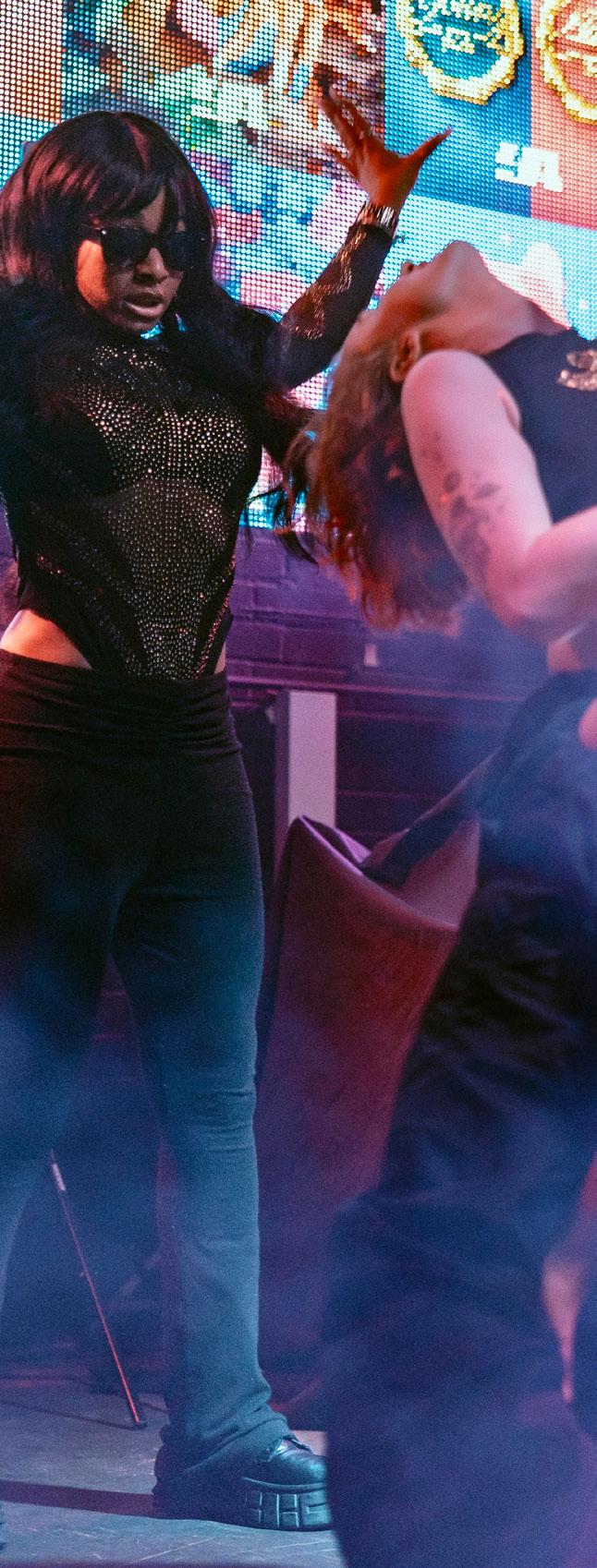
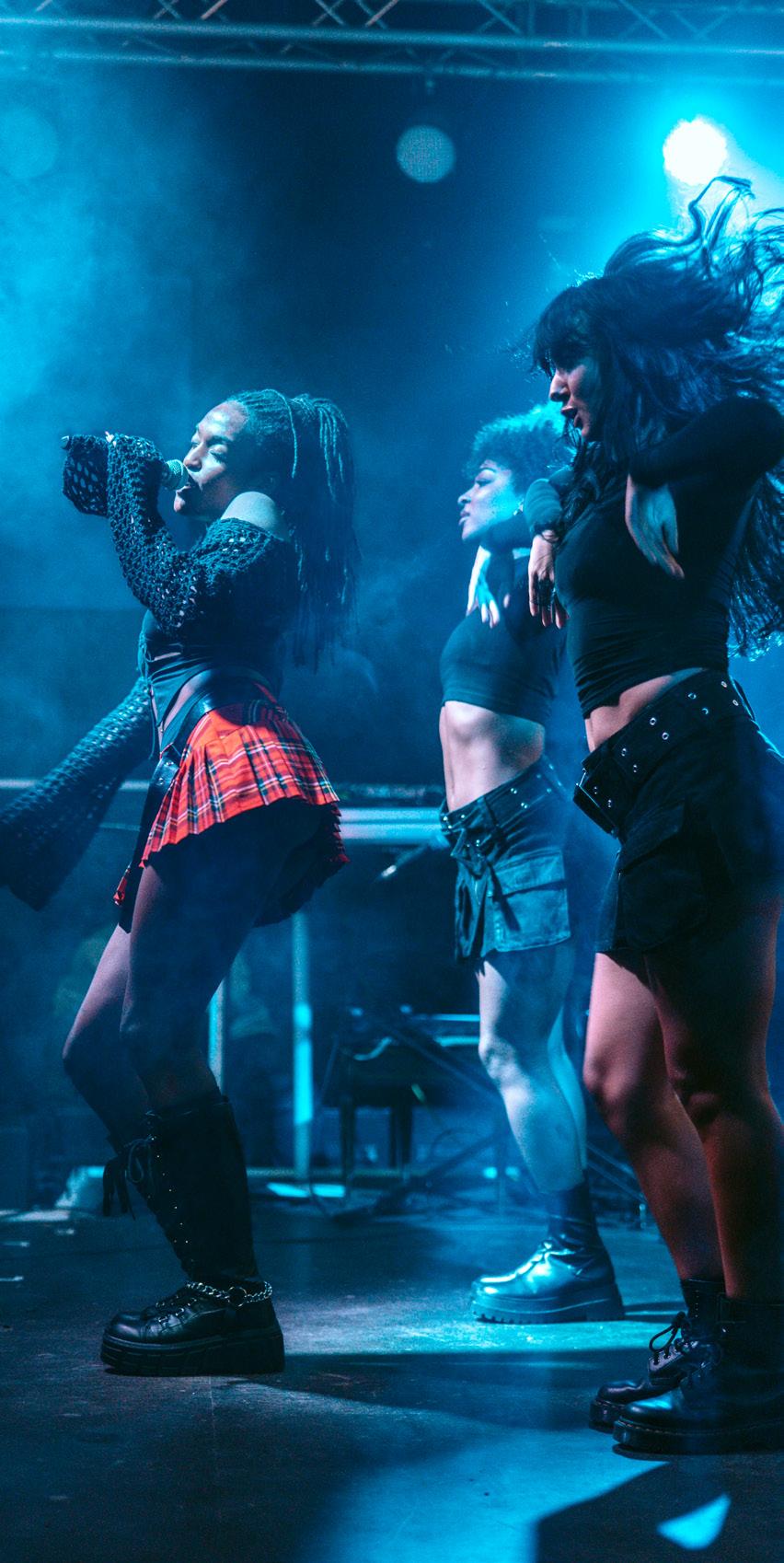


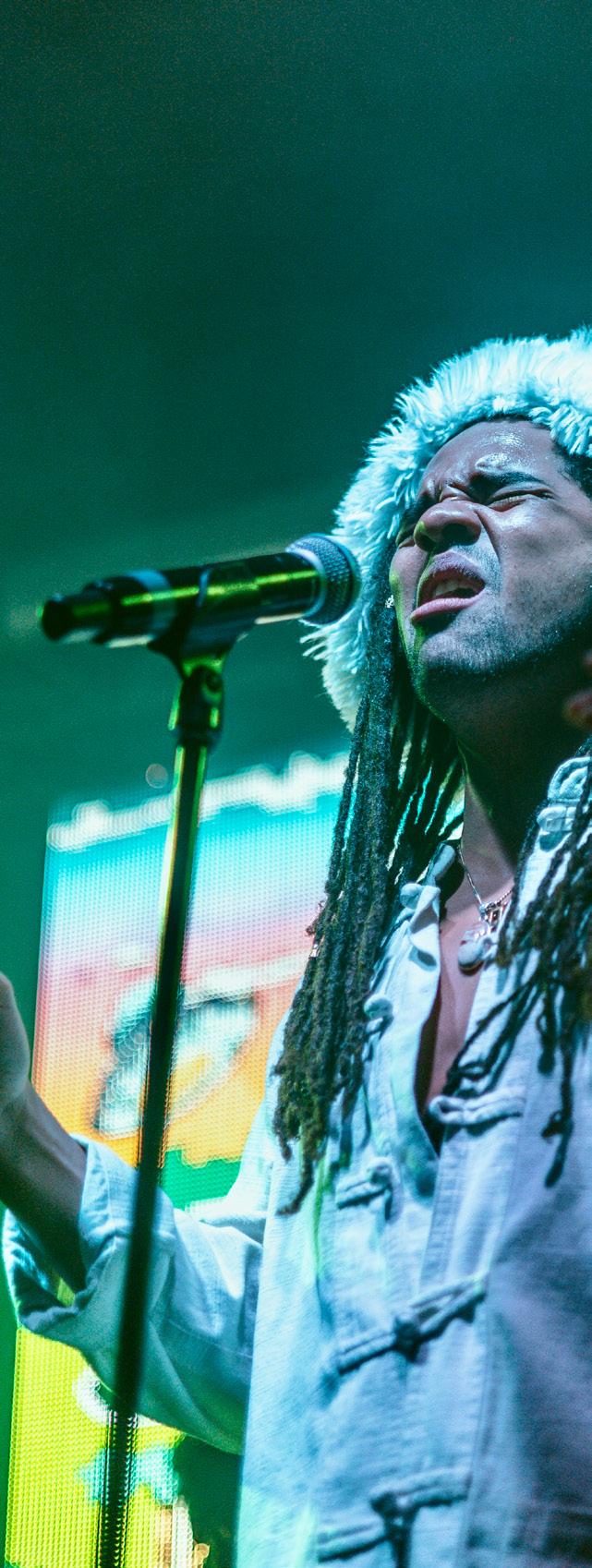

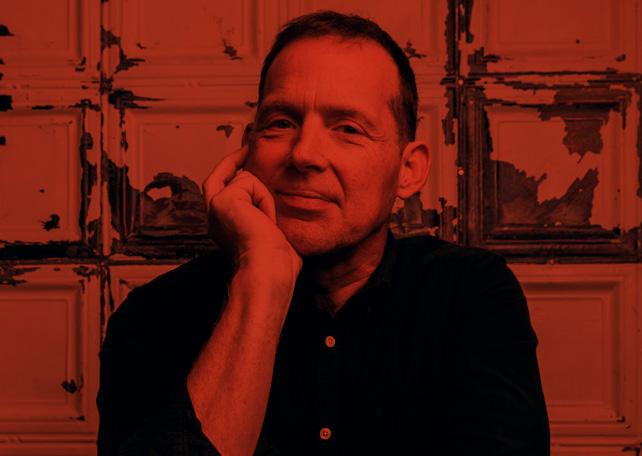
Paul Watson CEO
Keith Watson Chairman
Rian Zoll-Kahn COO
Alice Gustafson Editor-in-Chief
Adam Protz
Deputy Editor
Liz Wilkinson Content and Communications Manager
Rick Dickerson
Reviews Editor
Marc Henshall Head of Digital
Grace Mcguigan
Artist Relations Manager
Rae Gray Head of Design
Live music has the powerful ability to bring people together, but, as a certain tech company’s CEO and chief people officer recently found out, it can also tear people apart. Since the last issue of Headliner was published a month ago, the world found out that the chances of your marriages and careers being destroyed at a Coldplay concert are extremely low, but never zero.
Indeed, the internet works in mysterious ways. Another viral musical moment anyone with a smartphone can’t fail to escape of late is the baffling resurgence of an old Jet2 ad slogan, “Nothing beats a Jet2 holiday”, accompanied by Jess Glynne’s now slightly triggering, 2015 hit, Hold My Hand . Thanks to a TikTok trend, over 2 million videos have been posted on the platform using the viral slogan and song. Let’s hope Glynne and her fellow songwriters are getting a slice of the royalties off the back of the track’s newfound popularity…
From being transfixed by the latest must-see content on iPhone screens to those dominating your local AMC or Odeon, this issue of Headliner sees Oscar-winning sound designer Johnnie Burn grace the cover to discuss sinking his teeth into Danny Boyle’s 28 Days Later follow-up, 28 Years Later – one of the most anticipated movies of the summer. There will be blood. And pig squeals. And heavy metal vocals. And Teletubbies.
Also bringing together the worlds of film and prestige TV with the music and audio world is Game of Thrones star Iwan Rheon, who speaks to Headliner about going from playing one of TV’s most hated villains, Ramsay Bolton, to tackling billionaires and space travel on his second album, I Just Wish I’d Never Gone To Space
Meanwhile, Headliner catches up with singer-songwriter Jack Garratt, who, almost 10 years on from his BRITs Critics’ Choice award-winning debut album Phase, is back with his new record, Pillars. He reveals how he grew to resent his early success – going from wanting to quit music altogether to writing his best songs yet.
Another act doing things their way is electronic rock duo Wargasm, who reveal all about cutting ties with Universal to go independent, why they could never be an industry plant, and their latest singles, Vigilantes and Small World Syndrome
On the music industry front, Headliner jetted off to Ibiza to interview Spinnin’ Records’ Jorn Heringa, who discussed how artist discovery has changed, the fine balance between creative intuition and data-driven decisions, and why he believes AI and localised trends will define the next era of music.
And as live immersive audio transforms from an ambitious concept to reality in front of our very ears, Headliner brings you an exclusive interview with L-Acoustics’ directors of product management, who reveal how the brand’s latest offering, L-Acoustics DJ, is a game-changer for DJs of all technical backgrounds.
Plus, we bring you the latest from the worlds of studio, live sound, installations, sound production, and the most exciting emerging artists.
Enjoy, and be careful out there – who knows when the next kiss cam will claim its next viral concert victims.
Alice Gustafson Editor-in-Chief
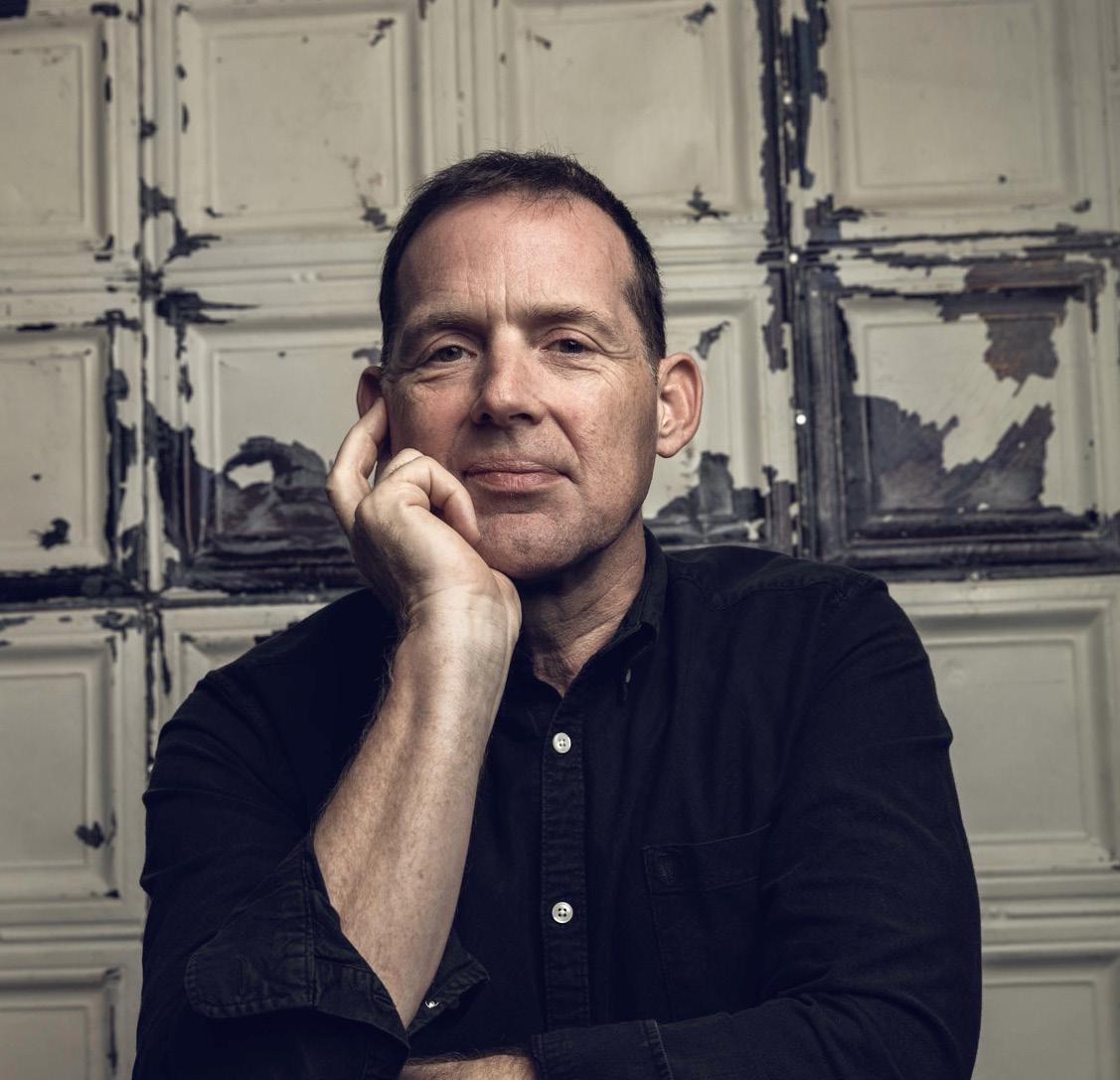

By Alice Gustafson
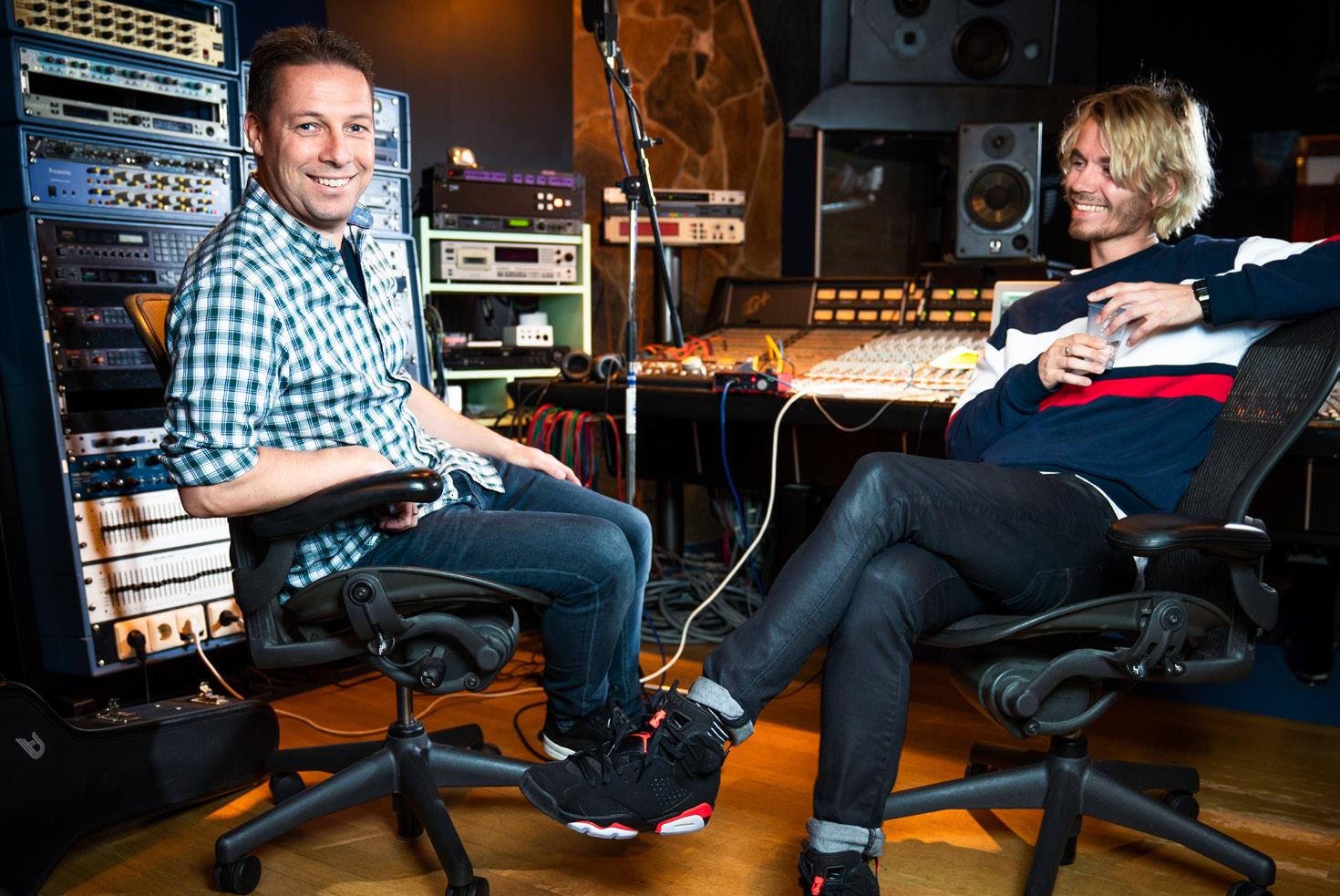
62 KING RECORDS’ AYATO KURASHIMA SHARES HIS STUDIO SECRETS
68 INSIDE TRIVIUM’S THE HANGAR STUDIO
70 EXCLUSIVE INTERVIEW: L-ACOUSTICS DJ Game-changing audio: Real-time stem separation meets immersive sound
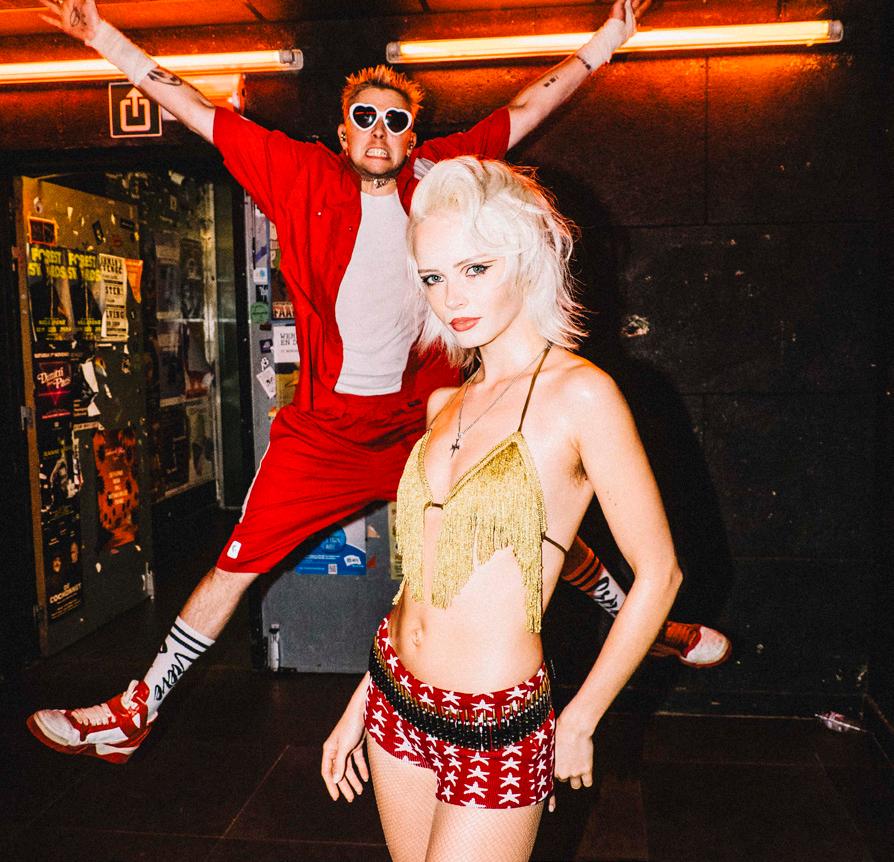
By Adam Protz
The
76 CODA AUDIO MAKES A SPLASH AT SONGKRAN FESTIVAL
80 LAWO CONSOLES DELIVER AUDIO TO MILLIONS AT CONCERT DE PARIS
84 ALL ABOARD THE PAUL MCCARTNEY AND WINGS TOUR BUS
88 FROM LAW SCHOOL TO SOUNDSCAPES: ERIC LEDET’S JOURNEY WITH LECTROSONICS
92 INDUSTRY INSIGHT WITH MIKE DIAS What executives can learn from live shows
s by ALICE GUSTAFSON
From a childhood shaped by adversity in the foster care system to releasing music that transforms pain into purpose, singer-songwriter Dylan Cartlidge is channeling his experiences into songs with a hopeful, uplifting spin. He tells Headliner about how his past has shaped him into the man he is today and reveals what to expect from his upcoming album, Lucky Shot.
Cartlidge’s journey into music hasn’t been easy. Raised in the care system, moving through 10 foster homes before the age of six, he’s known instability, heartbreak, and trauma firsthand. But he’s also known hope, and a persistent desire to find light in the dark.
“I grew up in foster care, and I think that context really shapes the music I make,” he shares. “Not in a way that’s supposed to be some kind of X Factor sob story,” he insists, “but for me, it’s about how my upbringing informs my work. By the time I was six years old, I’d already spent half my life in care. I had a really turbulent childhood. Pretty much everything the textbooks, psychologists, and social workers say can go wrong in a child’s life, I went through it. All the pain, trauma, instability. And while those experiences were very real, I also found a lot of beauty through it all.”
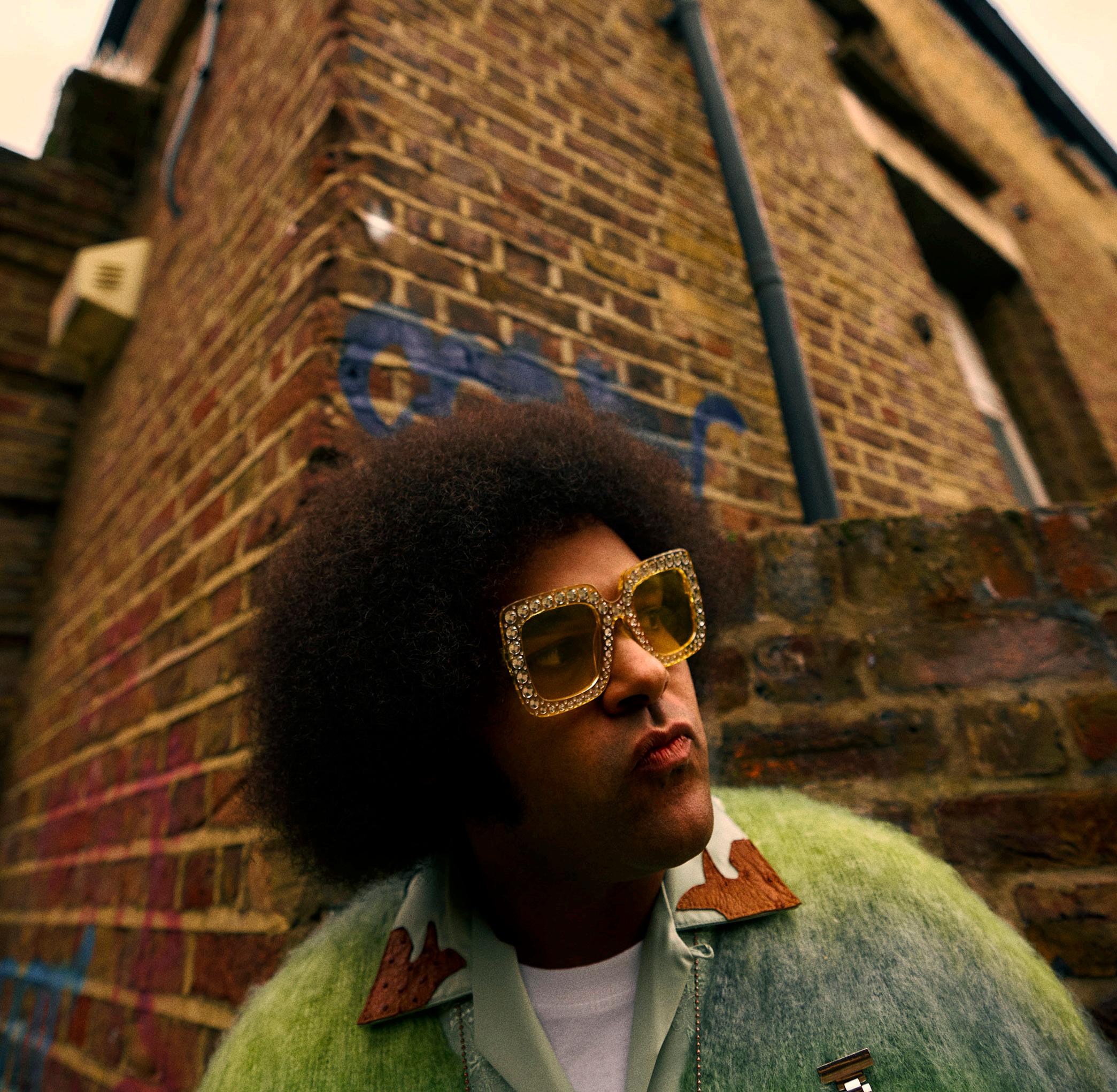
By the time he was eight, he had already assumed a protector role for his younger brother. “I just wanted to shield him from the kind of pain I’d experienced,” he recalls. “At that point, I didn’t really have much in the way of purpose or hope. All I’d ever known was hardship. But when my brother was born, it felt like something pure entered my life. He became a kind of guide, a reason to try and be better. I wanted to be a role model, to light the way somehow. Even though we’d been through horrific things, I wanted to show him that we didn’t have to be defined by our past.”
He speaks matter-of-factly and with humor, never veering into self-pity. “These were the cards we were dealt,” he shrugs, “but we were still people, we had humor, we had big personalities, we loved to laugh. That should be something positive. And I believed that if we worked hard, and with a bit of luck, we could be more than our circumstances. So from then on, I’ve
been on a journey of trying to discover myself, to shape an identity I could be proud of. And in many ways, I feel incredibly lucky. That ties directly into the theme of greatness, and even the album I’m working on now, Lucky Shot, which is coming out later this year.”
That resilience is the cornerstone of his music. Where others might pour pain into down-tempo confessionals, Cartlidge has a knack for putting a positive spin on things in his songs. “When I was really, really down, all I wanted to do was tell the world how sad I was,” he says. “But I started thinking, ‘What if I took those negative emotions and crafted them into something that offers a little bit of light at the end of the tunnel?’”
Cartlidge’s entry into music finally came at 13, not through theory or lessons, but survival. “I got into music through a mix of different avenues, really,” he reflects. “But I think the first time I truly connected with music was
when I started writing lyrics and raps –writing about my life and telling stories about people I knew.”
It was hip-hop that spoke to him first, and he found himself being especially drawn to Kid Cudi’s storytelling. “He felt like one of the first rappers in popular culture who brought something different,” he enthuses. “He talked about emotions. “It wasn’t just the typical club stuff, like Grey Goose or Hennessy or whatever. For the first time, it felt like it was okay to not be okay, which, yeah, I know sounds a bit cringe to say out loud,” he smiles, holding his hands up in acknowledgement, “but that’s the vibe it gave. Even though Kid Cudi could’ve easily just rapped about cars, fame, and success, he chose to talk about depression, mental health, and personal struggles. He didn’t act like he had it all figured out, and that struck a chord with me.”
Cartlidge credits that honesty with making him feel less alone, a feeling he pours into his music. “There was something powerful about it – it didn’t come across as self-deprecating or like he was trying to be a victim. It just felt honest, like he was sharing how he felt so that others wouldn’t feel alone.”
His musical influences range from the raw soul of Al Green, the gospel sheen of Aretha Franklin, to the highvoltage rock of The White Stripes or The Black Keys, and the glitchy chaos of hyperpop duo 100 gecs. “Sometimes when I talk to people about the music I’m into, I’ll go off on a bit of a random tangent and they’ll say, ‘Oh, I didn’t expect you to be into that.’ For example, some people are genuinely surprised when I mention how much I know about old soul or funk music. Which is kind of wild, because I’m this big Black guy with an afro that looks like I’ve just stepped off Soul Train!” he laughs. “So when I tell people I’m listening to Al Green, Billy Preston, Aretha Franklin, or even The Weather Girls, just proper oldschool soul and funk, sometimes that catches them off guard.”
Those influences, his experiences, and his positive outlook are sure to be at the heart of Lucky Shot. If his debut album, Hope Above Adversity, introduced the world to Cartlidge’s resilience, Lucky Shot is its evolution, he shares, adding that his new album will be his most vulnerable and artistically daring work yet. “Whether you’ve followed my music for a while or this is your first time hearing it, I think Lucky Shot shows a bit of growth,” Dylan considers. “With the first album, I think I held back in places. I was being lyrical but not always honest. Or I’d hint at the darkness but skip over the uncomfortable bits. I’ve let myself write the stuff that felt too vulnerable before. I’m saying what I mean. I’m owning my story, not just the inspiring bits, but the ugly ones too. There’s something powerful about extra-time stories, people who’ve gone through hell, lost everything, and are still trying. I see myself in those stories.”
At a first listen, Cartlidge’s sound, a vibrant blend of indie, hip-hop, soul, and funk, could be neatly boxed into the ‘uplifting’ category – his songs are often filled with vibrant melodies and messages of hope. “Something I’d like to do more is to take those negative emotions, those bad experiences, that pain or hardship, and craft it into something that still acknowledges it,” he says. “It still says, ‘Yeah, this hurt,’ or ‘This was hard,’ or ‘This is how I’m feeling,’ but then also adds a little spin – some sort of
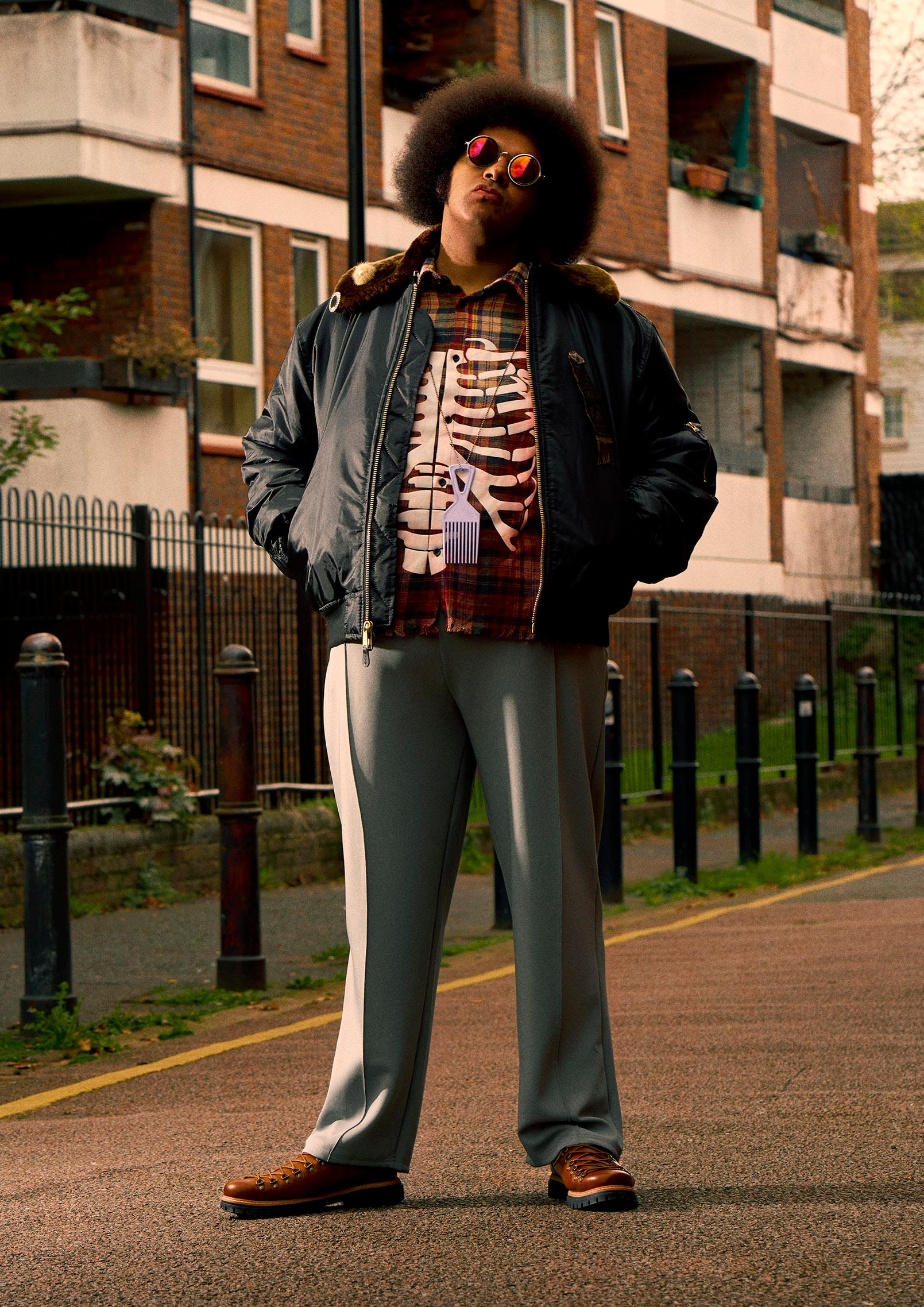
glimmer of hope, or a nudge towards You’ve Got a Friend in Me energy.
“In my experience, life’s about balance,” he furthers. “Very little is ever black and white, especially when it comes to emotions. When you’re deeply sad, there’s usually still room, eventually, for a little relief or a shift towards something lighter. It might take days, weeks, or even years, but it’s there. And the same goes for joy. I love telling stories. I love wordplay. But it’s not just for cleverness, it’s about connection. It’s like I’m saying, ‘Hey, I’ve been through some stuff, but maybe you have too. Let’s talk about it, but let’s also laugh a little.’”
His infectious new single, The Greatness, is a fizzy, joyful ode to individuality, co-written and produced by Eg White (Adele, Florence + The Machine), and is about embracing one’s individuality and finding your unique path to selfdiscovery. But behind the upbeat production and clever wordplay lies a deeper mission: to give pain a purpose, and to make hope feel earned.
“PEOPLE FROM MY BACKGROUND, KIDS WHO LOOK LIKE ME, WHO’VE BEEN THROUGH WHAT I’VE BEEN THROUGH, STATISTICALLY DON’T DO WELL.”
“If you look at different eras of music, like the soul era post-slavery, or civil rights, those artists often channelled struggle into something powerful, something defiant,” he points out. “You had songs like Strange Fruit or Respect They had energy. Even if they were born of pain, they became anthems of survival.”
For Cartlidge, it’s about striking that same balance, acknowledging the hardship, but not being consumed by it. “There’s a sort of campfire quality to music,” he considers. “We come together through it. Share stories. So, I guess my hope is that even if someone’s going through
it, they can find something in my music that lifts them a little. Makes them feel seen, but also a bit stronger.”
Given all he’s been through and the resilience found in his songs, he explains what the phrase ‘Play Out Loud’ means to him: “I think it’s about going for it. It’s that idea of: if you’ve got something to say, say it. If you’ve got something you want to do, do it. Don’t live with regret. Don’t be afraid to be yourself. Don’t be afraid to be bold or to be brave enough to give something a proper go. There are so many moments in life, both for myself and for people I know, where you get caught in that feeling of uncertainty, thinking, ‘I don’t know what I’m doing, or I’m not sure if it’ll work out.’ And there are a million and one reasons to play it safe, to hold back a bit, to not take the risk. And of course, safety isn’t a bad thing, far from it,” he points out.
“I’m not saying to throw caution to the wind completely. But for me, it’s about pushing through that hesitation. If there’s something you want to create or something you want to chase in your life that you haven’t gone for yet, don’t wait around. Tomorrow isn’t promised. And what’s the worst that can happen?”
As Cartlidge stands on the cusp of releasing Lucky Shot, he reflects on everything that’s led him here. “People from my background, kids who look like me, who’ve been through what I’ve been through, statistically don’t do well. You rarely hear from us. We’re not represented. The path that’s often laid out is bleak: drugs, prison, or worse. So, even though I’ve struggled and still struggle, I felt like, in a way, this is my bonus level. This was my DLC extra time,” he laughs, confessing that he’s a big gaming and anime nerd. “I survived things that could’ve broken me, and now I have this unexpected chance to live a full life. That perspective changed everything for me. I’m not saying it’s all sunshine and rainbows, but I’ve tried to approach life and my music with a sense of purpose and gratitude. Yes, I’ve endured hardship. But surviving it has given me a new beginning, even if it came later than I would have liked. I didn’t have the kind of support or privileges that others may have had growing up, but I have a chance now, and that means everything.”

LCT 240 PRO
• Easy-to-use XLR microphone
• For recording vocals and instruments at home
• Professional sound quality
• Cardioid polar pattern

The writing was on the wall, literally, in 2002’s seminal ‘zombie’ film 28 Days Later: The end was extremely fucking nigh. But what happens after the end is nigh? 28 Years Later sound designer, Johnnie Burn, delves into his sonic choices for the highly anticipated return of the living dead.
Picking up the post-apocalyptic story almost 30 years later, producer and director Danny Boyle and writer Alex Garland teamed up once more for 28 Years Later to explore how the UK is fairing almost three decades after a highly contagious and deadly rage virus spread rapidly from person to person, bringing out the worst base instincts in the infected and the uninfected alike, and causing a complete breakdown of society.
Regarded as one of the best zombie films of all time (although the infected are technically not zombies, Boyle has always maintained), 28 Days Later was a huge box office success and immediately revived the zombie genre – and evolved it. Gone were the lumbering, vacant-eyed reanimated corpses of horror past.
In their place came ‘the infected’: fast-moving, feral, and fueled by a
primal rage that spreads like wildfire through a single drop of blood.
And the sounds they made are hard to forget – all guttural chokes and spraying blood, set against frantic cuts and flailing limbs. The team knew the 2002 film would be a tough act to follow.
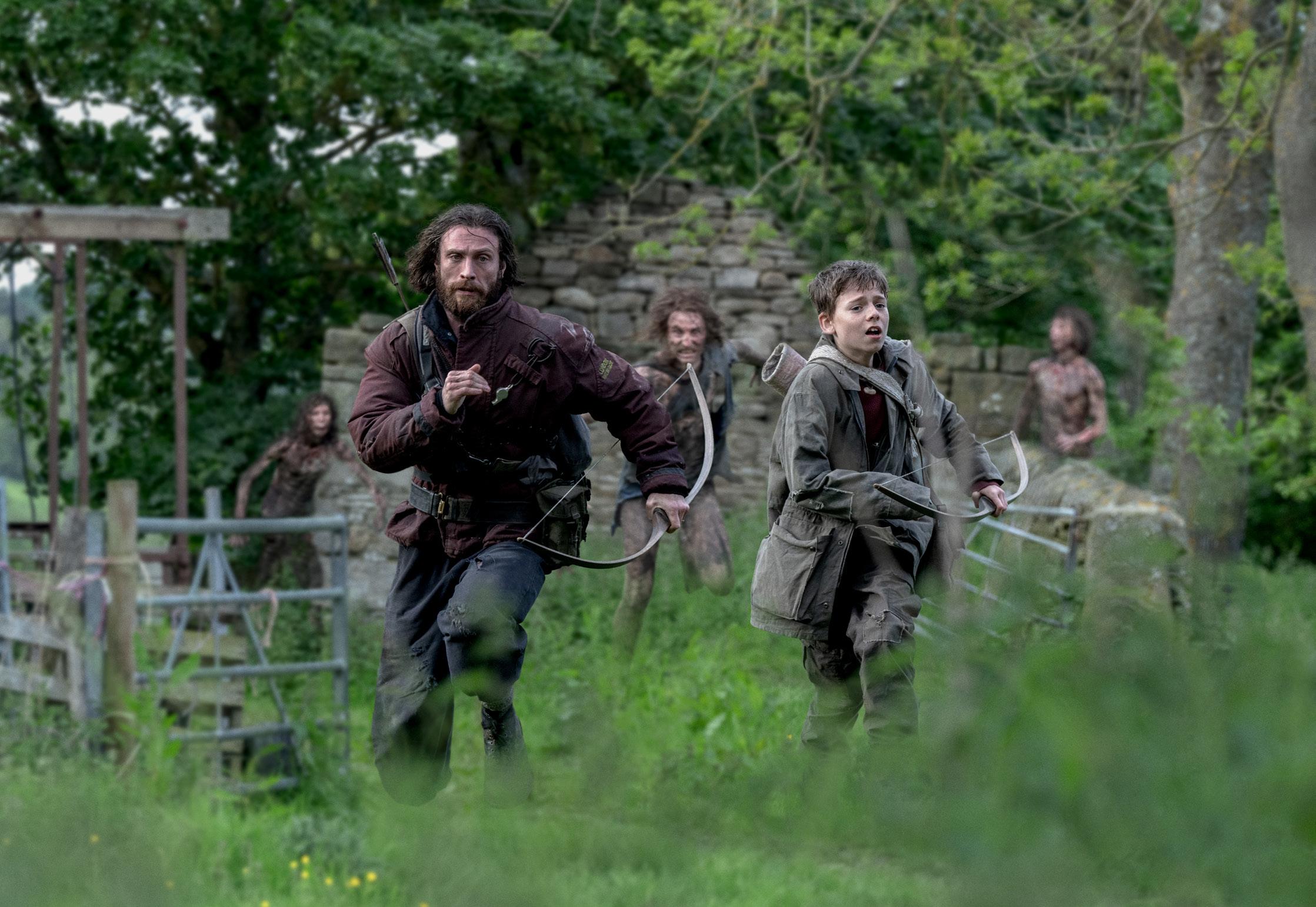
“I think 28 Days Later was the seminal zombie film, wasn’t it?” agrees Burn, speaking to Headliner from his studio. “I would wager that pretty much every horror film that’s come after it has links to that, and there was some truly horrific – in the right way – sound design within that.”
28 Years Later follows a group of survivors who live on a small island, separated from the UK mainland by a fortified causeway. Meanwhile, the infected have also survived, and in some cases, mutated. Some of the grossly bloated infected crawl laboriously on their bellies through the English countryside, while others – nimble packs led by Alphas – have evolved into variants who are larger, stronger, and, unfortunately for protagonists Jamie [Aaron TaylorJohnson], his unwell wife, Isla [Jodie Comer], and their 12-year-old son, Spike [Alfie Williams], more intelligent.
Boyle wanted the sonic landscape to feel different this time around, and was in a safe pair of hands in Burn’s when seeking a fresh take on the film’s highly anticipated follow up, having won an Oscar in 2024 for Best Sound for The Zone of Interest. “Danny’s incredibly open-minded and very forward thinking,” says Burn of their
initial discussions on the outline for the sound palette, almost 30 years on.
“We were all very aware of the love that people have for 28 Days Later and the responsibility to honor that and to deliver a commensurate follow-on. And what a creative mind Danny has! He was very clear that one was not to feel constrained in any way, and to read the script and come up with any ideas that may deviate from the legacy of the original. So we were thinking about what Britain had become 28 years later and working with that as a wholly new concept. Basically, Danny said, ‘Do what you like!’” he grins.
28 Years Later carries almost three decades’ worth of fictional history and trauma with it, while also answering the question: What if Jason Momoa got infected? Burn uses the intelligent and physically-enhanced Alphas as an example of a way of acknowledging the past, while moving the film sonically into the present day:
“The new breed of Alphas has reacted to the virus itself,” he explains. “It’s rearranged their DNA, so these are much stronger and are a different-
sounding beast to the original ones, but the performances from the cast playing the infected were very much related to the original film.”
Showing that, infected or not, life indeed finds a way, the Alphas are more imposing specimens when compared to the OG zombies.
Burn explains how he reflected those mutations in their vocalizations and the sound of their rapid movements by using a combination of human sounds, animals, and technology, with a little help from a heavy metal vocalist. “A lot of it is achieved simply by pitch,” he reveals, “because they are deeper and bigger physical specimens. So there’s more of a roar to the Alpha, and that’s a very interesting area because you react viscerally when you’re hearing someone screaming at 100 decibels in a theatre.
“The Alphas are somewhat more advanced cerebrally, so there’s more of a sense of communication from the more advanced infected. So we played around with getting to the point of almost words; almost like a language coming through.”

“The key Alpha roar when we first meet [main Alpha] Samson used my voice as a placeholder for a considerable period. When we were doing the final mix, the mix engineer revealed that he is a death metal vocalist, so we said, ‘Well, you can’t just land that on us without having a go!’ We got a microphone out, and his roar was so perfect that it’s the one we hear in the film predominantly when we see Samson. I hope that the metal community enjoys the knowledge that his skills are being put to good use.”
In another scene that demonstrates how the infected have adapted, Isla helps a pregnant infected woman give birth in a long-since-abandoned train carriage. The sound design for that involved a lot of pitch, modulation and vibrato manipulation of animal sounds: “We wanted to obscure the sound and make it more mysterious than specifically human,” Burn explains. “We went to some lengths to blend in animal sounds like pig squeals, lambs and other deeper, bellowing, guttural sounds to obfuscate the idea of what it is that you’re hearing. I think that the more mystery there is about it, the less you understand what you’re hearing, and the more unsettling it is.”
The first major zombie attack sees a pack of infected barreling downhill towards Jamie and Spike, who, lulled into a false sense of security by picking off a few slow-moving specimens as part of a coming-of-age hunting ritual, are set upon in a frenzied sequence. Burn explains how he constructed that moment sonically to convey not just their speed, but overwhelming force and unpredictability.
“First of all, you’re lulled in because Spike and Jamie come out of the woods, and they walk across a meadow,” he says.
“Nature is really in full swing. There’s an awful lot of birds in a huge density forming the soundscape.
“YOU CAN
UNWELL.”
“When they come out into the meadow, it all falls quite silent, which makes you lean in and listen. Suddenly, on the hill, a few 100 meters away, they hear the faint cry of an infected that isn’t too threatening at first, because it’s the deranged infected that are not particularly worrisome. All of a sudden, there’s an incredibly loud roar that hits you in the face.” Cue the death metal vocalist.
Here, Boyle had an idea for the sound design: running water. “As if it’s just a flood in full swing,” Burn recalls of Boyle’s note. “So that, plus the footsteps, the cries of the infected, and the score are all starting at the same time, which gives enormous impetus
to that moment. The complexities with this scene were because of the huge swinging camera movements, so we could choose to leave the surround sound imaging static, or try to go with it and make people feel a bit more like they’re on a roller coaster. Of course, we did that one,” he smiles.
“It was all about making sure that everything lived in its own sonic frequency and that the threedimensional position of the things we’re scared of felt right with where the camera was going. You can hear the screams coming from behind you, and hopefully that makes you feel pretty unwell.”
When the 28 Years Later trailer dropped, the audience was immediately transported back to the early 2000s with a grainy shot of Teletubbies on a boxy TV screen, while sonically, the teaser unlocked a new fear in its audience: a poem. The movie’s trailers expertly weave Taylor Holmes’ stirring 1915 spokenword recording of Rudyard Kipling’s poem, Boots amongst snippets of the horrors that will unfold throughout the film. It’s sublimely done, and Boyle was so impressed, he requested that the poem be incorporated into a key scene in the film, which sees father and son make the dangerous journey to the mainland across the causeway, towards certain danger.
“That poem is incredible,” nods Burn. “And what an incredible job they did with that trailer! Danny showed it to us at my place, and we all watched this thing, and my mouth was agape. We were like, ‘Holy cow! That’s incredible. What a really strong bit of filmmaking’. Danny said, ‘We’ve got to get that in the film somehow, because it speaks so much about what’s happening in that early part of the
film and what this community goes through’. John Harris [film editor] did a wonderful job of working Boots into that section of the film, to great effect. It’s one of those bits where the sum is greater than or equal to the parts of which it’s made. When they were mixing the trailer, they sent it over to Danny for approval, and I remember him saying, ‘What’s happened to the crackle? You’ve taken all the hiss out of it, and that’s what makes it more credible’. So when we integrated it into the film, that’s the original recording, unadulterated and without restoration. It brings such nostalgia with it when you hear that crackly old gramophone sound.”
The challenge was making sure that the voice was still heard amongst the vast amount of sound design involved in that sequence. “All the sound design in that part of the film was treated to sound like it belonged to the voice,” Burn points out. “That is a moment where you go back in time – there’s even footage from 28 Days Later in there – and all of that was high fidelity at the time, but degraded by the time we’d finished with it to make it fit.
That is a very complicated part of the mix.”
THE STUDIO: DOLBY ATMOS MIX
Burn is the founder and chief sound designer at Wave Studios. Founded in 1999, Wave Studios has grown from humble roots and two suites to become the leading light in global audio post-production, sound design, and mixing. “Much of my work I do in my home studio in Brighton, and that’s a 7.1.4 setup based on a Genelec monitoring system,” Burn says. “I love them because it’s a reliable standard. Most of the rooms that I have in London are Genelec as well, so it means that I know how that’s going to translate into a mix. They’re a nice, bright, and powerful speaker, which is pretty useful when you’re editing and mixing stuff. When you get into a film mixing room and you’re dealing with horn drivers instead of tweeters, it does give a different sound, but you’ve got rid of all the problems beforehand because of the brightness of what you’re listening to, which is where, often, some of the more annoying stuff sits.”
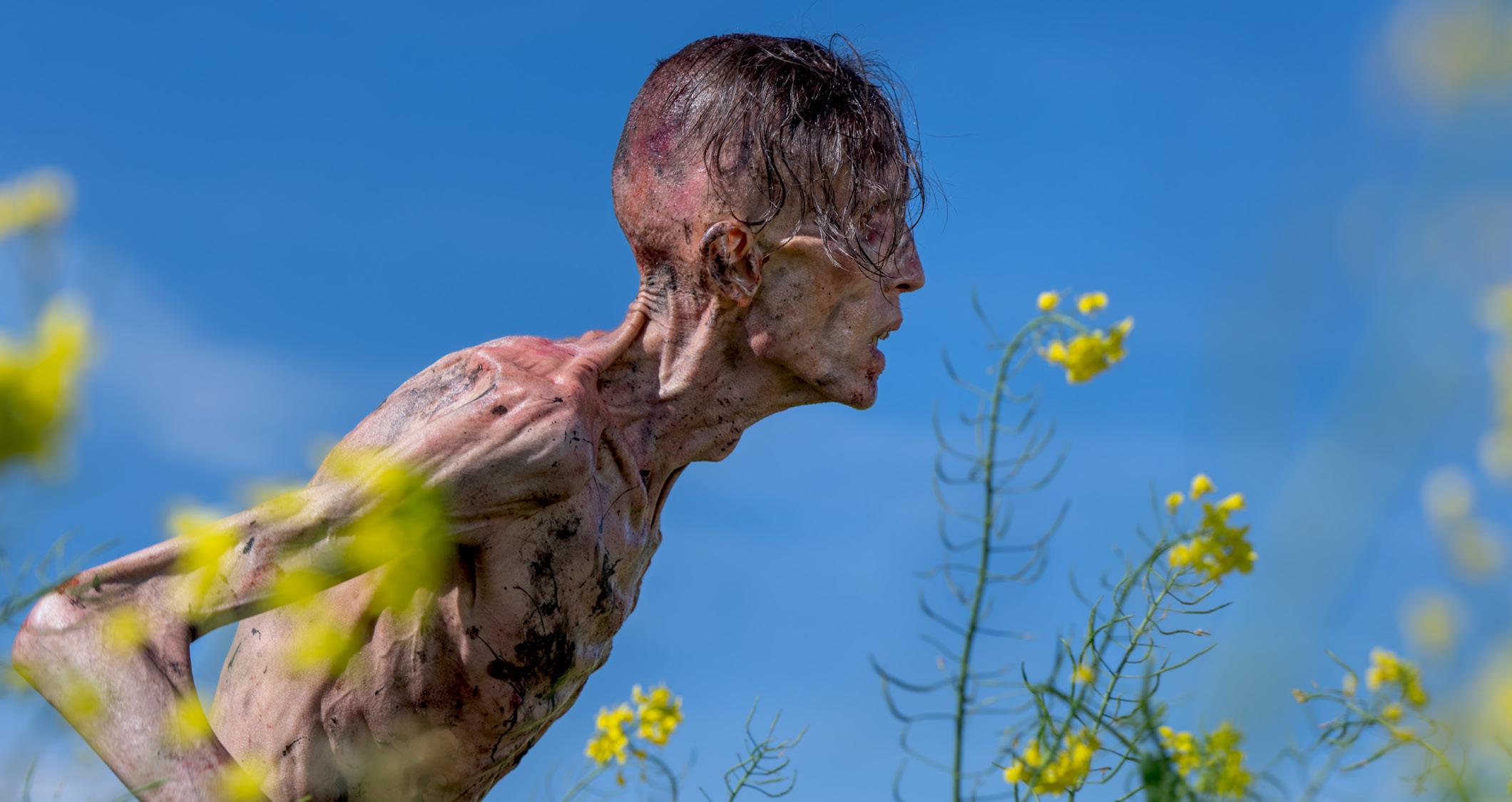
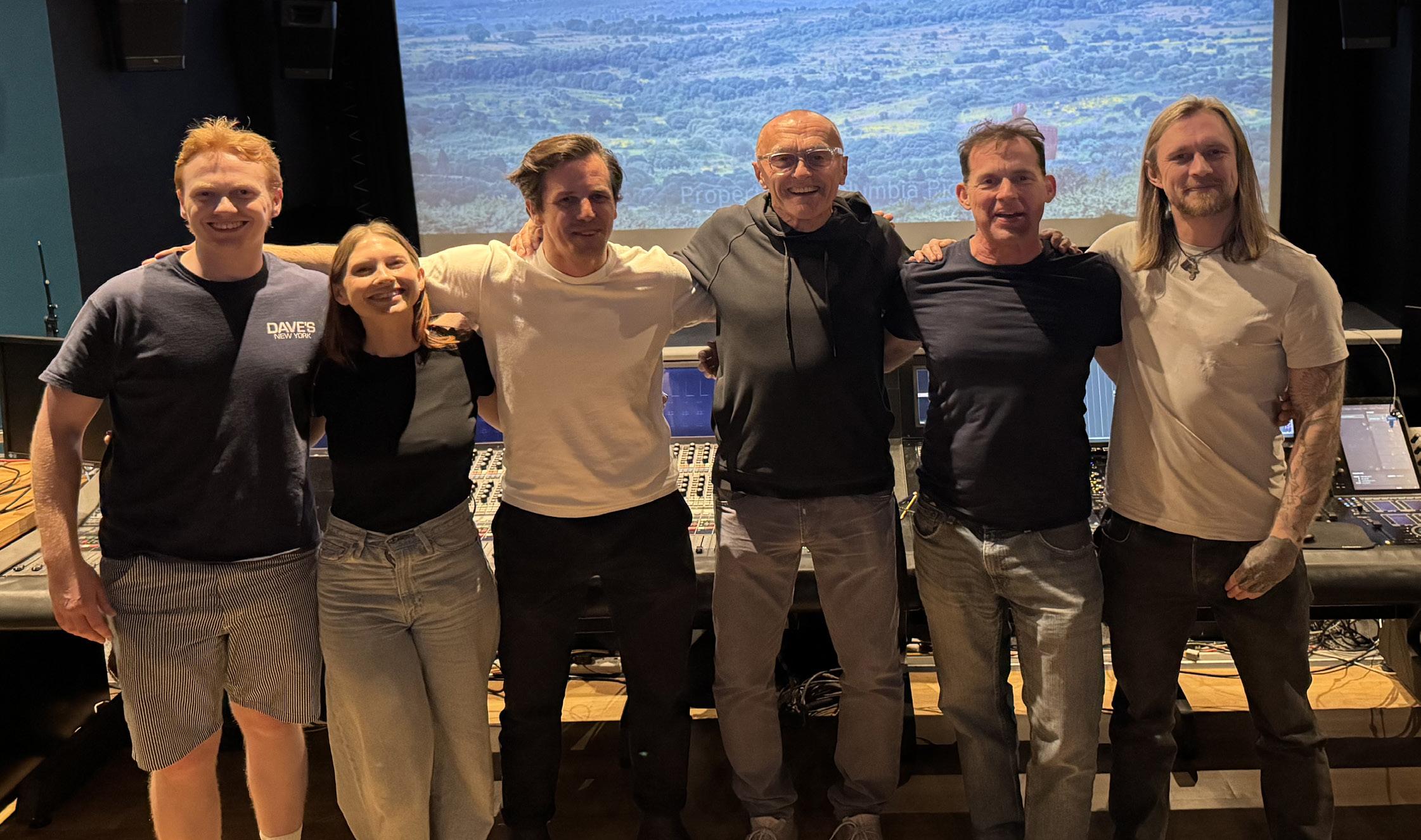
Horror thrives on dynamics, from near silence to explosive chaos. Burn explains how his monitors helped him balance unsettling low-level ambiences with sudden bursts of infected violence for the Atmos mix. “A lot of what upsets you in 28 Years Later is the low tones, and things you’re feeling more than particularly hearing in a cinema, and it’s hard to find a speaker that faithfully reproduces the low end at a level that’s going to translate well to a big room. That’s probably the key win for me. A lot of monitoring systems working on the edges of their range of frequency can often be a bit unreliable in the way that they reproduce those frequencies, because a lot of speakers have, down at the bottom of the frequency curve, a little bit of resonance. That will mean that, if you play particular frequencies, they might last a little bit longer, and I’m only talking milliseconds, on some speakers, than you want, and that’s not a faithful reproduction of the sound. The Genelecs are very good at not colouring the sound.”
Burn explains that they had the big Alpha roars start on the center
speaker, and then move throughout the room. “To scare the bejesus out of you,” he laughs. “There were many times in the mix where Danny would say, ‘Turn it up, Johnnie; it’s got to be loud’. I’d say, ‘It is very loud!’
“Volume is such an enormously powerful tool. In a movie like 28 Years Later, you’re on the borderline of not wanting things to be too loud, but they need to be loud enough for the jump scare to work. That’s only a difference of a couple of decibels, so you have to judge things very carefully.”
In Boyle’s 1996 film, Trainspotting, Ewan McGregor’s Mark Renton memorably disappears headfirst down the “worst toilet in Scotland”. Once again pushing boundaries with something unexpected and provocative, the ending of 28 Years Later culminates in a sharp swerve in tone when Spike is rescued by a zany, flammable-wigged, backflipping gang styled after…Jimmy Savile.
Bizarre and unsettling, yes, yet in this timeline, the disgraced TV presenter’s crimes were never discovered, and
it sets up the premise for the next film nicely. The reference neatly ties the gang’s unhinged leader to a character we meet at the start of the film. Afterall, his early experiences were formed by trauma and iconic UK pop culture. It certainly got people talking – you will either love or hate the ending.
“Gosh, when I first saw that ending, I was like, ‘Wow, that’s so bold and so exciting to put something so unusual at the end of the film,’” Burn reflects.
“That bit is really good fun, having gone through all the stress of creating all these worlds and making things feel immersive and tense. The ending is more of an action sequence set to that amazing Teletubbies music. That was probably one of the more enjoyable bits for track lay, because it’s throwing in silly, big sounds and not worrying too much about how it lands, immersivewise, or anything like that. More than anything, what Danny has made is something that’s so incredibly fresh. I think part of that is to just roll the dice on all sorts of things.”

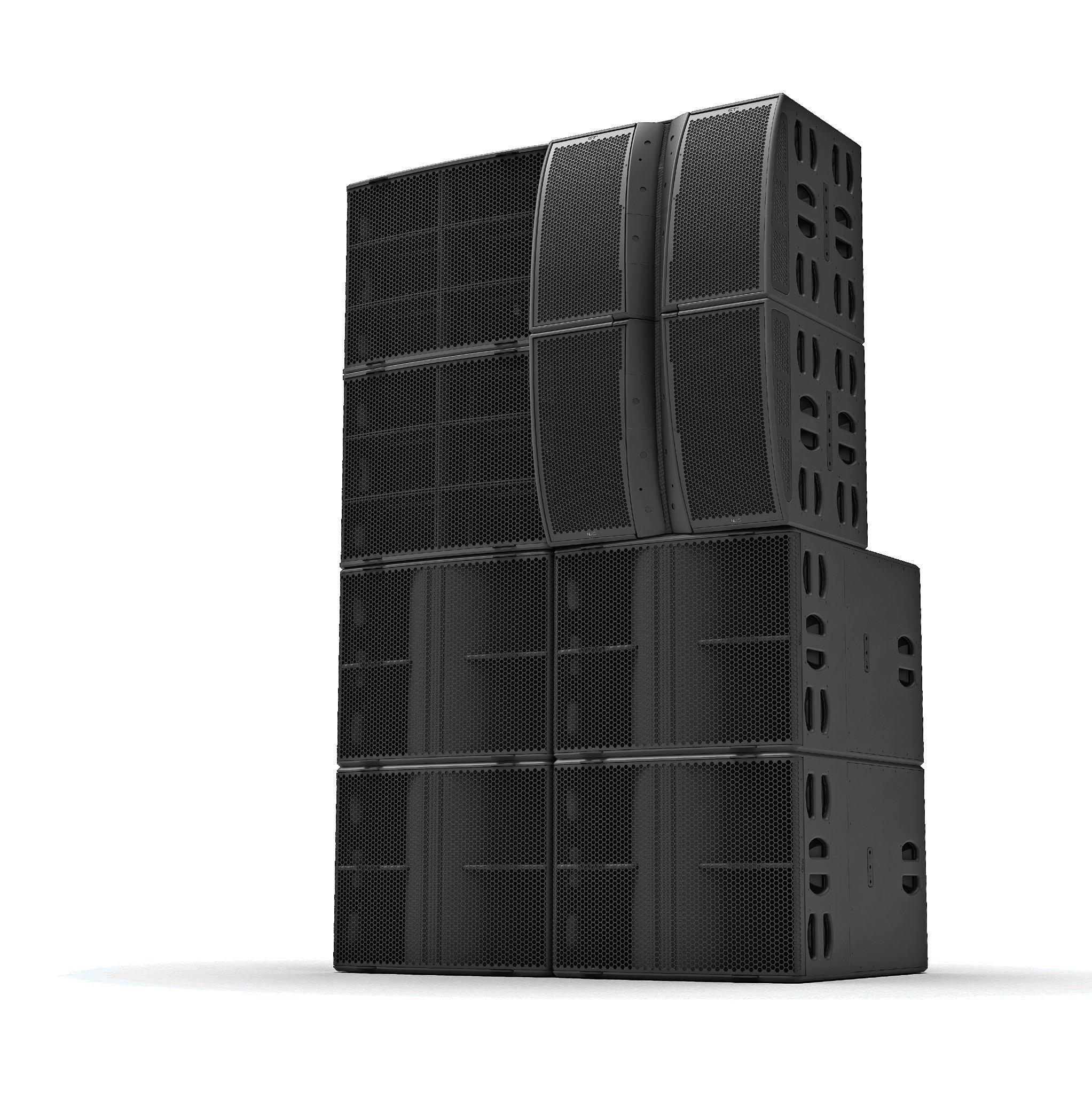
Three decades on and NEXO Alpha systems are still thrilling live music audiences and clubbers with their characteristic power and presence. Now we’ve drawn on the spirit of that ‘90s classic to create Alpha +, a ‘three-box’ FOH system that combines the benefits of line source coupling with the easy deployment of point source speakers.
Stacked on a mid-sized festival stage or installed in a club, it’s all Alpha, reimagined for the modern age.

nexo-sa.com
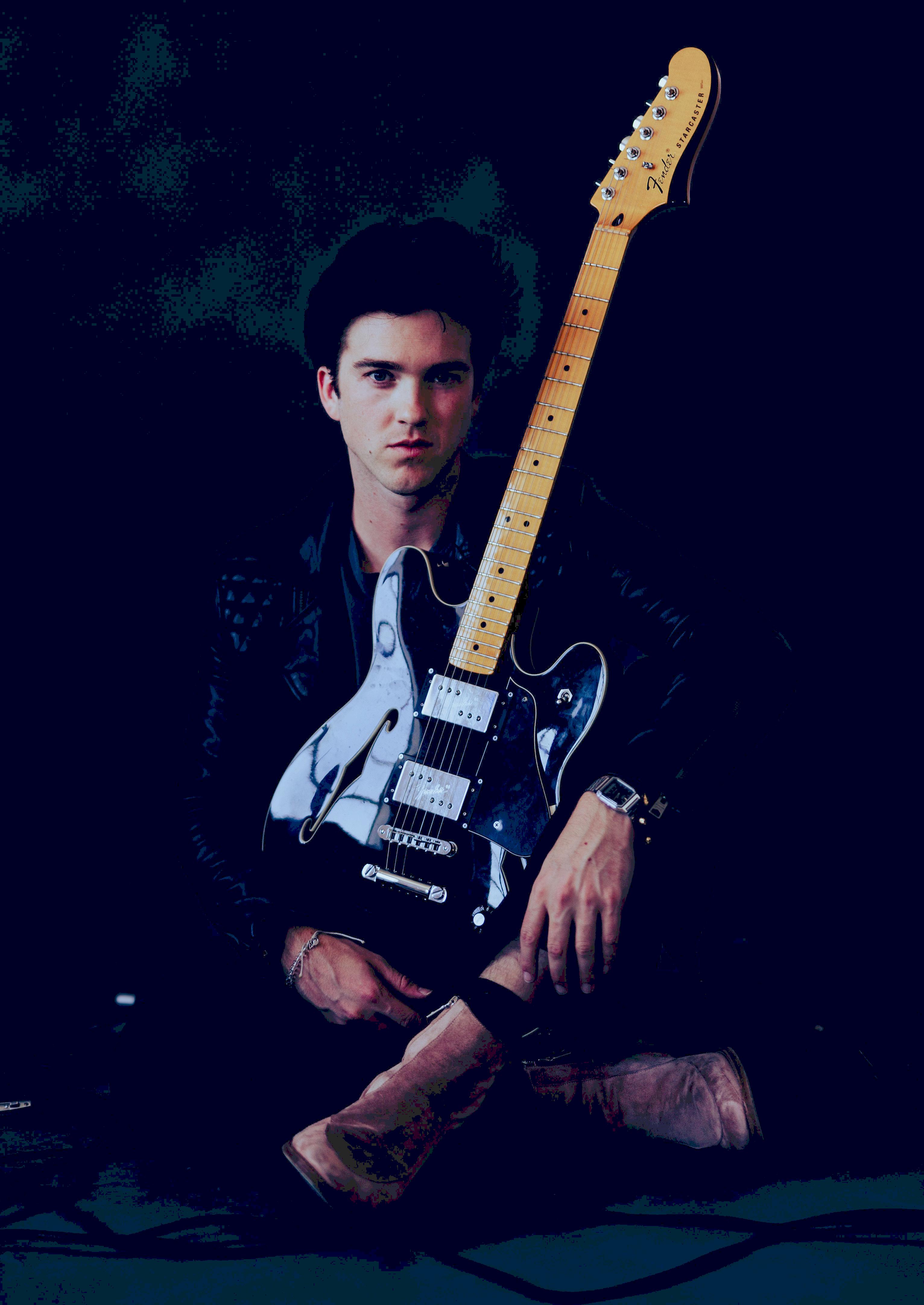
In the heart of L.A.’s vibrant music scene, one name is quickly gaining momentum with a sound that blends nostalgia, raw emotion, and a touch of cinematic flair: Jessy Fury. The singer-songwriter, whose moniker draws from his own name, Jesse Robitaille, is an artist with a rich musical lineage and a captivating stage presence. With his slicked-back hair, leather jacket, and a voice that channels the timeless spirit of ‘50s rock ‘n’ roll, he’s ready to transport you to a world where classic rock meets modern edge. Fury catches up with Headliner to dive into his latest work, his eclectic musical influences, and to explain why he wants people to either love or hate his music.

Who is the very first artist you can remember having an impact on you?
I’m an old soul, and I come from a musical background. I was just listening to Roxy Music. The first record I remember listening to was by The Beatles, so it was probably hearing Here Comes the Sun or The Long and Winding Road in the car with my parents. Then I had a vinyl of James Brown, and I’d listen to both sides over and over. His music was just so electrifying. I do listen to new music, but lately, I’ve been into Johnny Cash and Roxy Music again. I love oldschool music – it takes me back to a simpler time, a different way of life.
Are you into any music that might surprise people? For instance, anything that’s totally different from the kind of music you make or that is at odds with your ‘50s rock and roll look?
I like classical music. To be honest, there are fewer genres I dislike than ones I do. For me, it’s more about energy. Even if I don’t usually listen to a particular genre – like dubstep, for example – there are certain Skrillex tracks that really get me fired up. I think Charli XCX is an incredible performer. I saw her at Coachella, and she was just extraordinary: the energy, the dancing, the whole marketing approach. I have nothing but respect for what she does. There’s so much music out there now, it’s easy to miss things. The barriers to entry have almost disappeared; anyone can upload their tracks online, which means there’s a huge mix of content. There are no gatekeepers anymore.
You caught the performing bug at just nine years old. Did something click for you straight away when you were on stage?
I caught the performing bug pretty early. I can still remember how it felt, and yeah, something just clicked when I got on stage. It was about me finding out who I am and discovering my identity. So much of life doesn’t make sense – we’re all just spinning on this planet in constant motion, and who really knows what it all means? But when you find something that resonates with you on such a deep, soulful level, something that allows you to express an innate truth within yourself and share it in a way you couldn’t otherwise, you just have to keep pursuing it. You’d be doing yourself a disservice if you didn’t.
Did you ever have a Plan B if music didn’t work out?
Sometimes, when things got tough, I did think about other options. Being a musician today means wearing so many different hats: you have to be a producer, a manager, and direct your own videos. There’s just so much creative and logistical work involved. At times, it’s been challenging, and I’ve questioned whether this is really for me. But then I get up on stage and perform, and I think, you know what? This is awesome. This is exactly where I’m meant to be.
When you first embarked on this musical journey into professional musicianship, you threw yourself in the deep end before you were fully developed and ready to take
the plunge. What did you learn the hard way?
I learned a lot, mainly about believing in myself. When I was young and got thrown into the industry, I didn’t know how to say no. My dad was a professional ice hockey player, my mom was a musician, and my grandfather was a musician. I also have a lot of family history in the entertainment industry here in L.A., so I felt this pressure to just go all in. But I wasn’t necessarily being true to myself as an artist.
Your grandfather, Bob Totem, was a member of 1950s Cinnamon Cinder house band The Pastel Six. What have you taken from your grandfather in terms of musical style, dress, or performance style?
My grandpa was around at that time, and, funnily enough, I’ve just become a Canadian citizen because my dad’s from Quebec, so I have family on that side. My great uncle was in a band called The Beau Marks, who were also doing new things in those early days, pre-Beatles, but really at the birth of rock and roll.
My grandpa was literally driving somewhere in Hollywood with his band, and they needed a drummer. They pulled up at a stop sign and saw a guy tapping on his lap. They rolled down the window and said, “Hey, do you play the drums?” And the guy went, “No.” And they said, “Well, do you want to?” And he just said, “Yeah!” and jumped in. My grandpa was one of the main people who taught me to play guitar. I have a couple

“IF YOU’RE TRULY BEING YOURSELF AND NOT CENSORING ANYTHING, YOU’RE NATURALLY GOING TO DIVIDE OPINION.”
of his guitars, and listening to those old records really gave me a huge appreciation for the music that came before my time.
You’ve said you want people to either not be able to get enough of your music or absolutely hate it. Why is that?
I think that’s what art is about: it’s about being honest. If you’re truly being yourself and not censoring anything, you’re naturally going to divide opinion. And we see that more than ever now, everything seems split down the middle, love or hate. That can be challenging because I like to think of myself as a nice person, so I sometimes have to remind myself that it’s okay. As artists, it’s our duty to be true to the music or the art form. That means that once you put something out, it doesn’t really matter what happens next.
Your single, Runaway is an anthem of escape and resilience. What were you thinking about when you wrote it?
I read 1984 by George Orwell. It really sticks with you. The themes are still so relevant today. And I also liked that it had a romantic element, too. That song is very much for today’s times. Those themes are still prevalent in our world, and it’s about escapism. But also, no matter what happens, there’s a hopefulness that we’ll be okay.
You also teased a song called Funeral. Where did the idea stem from?
It’s an exclusive for fans on my mailing list, but we still put everything into it, just like any other song. There’s so much content out there now, and artists are constantly told to post, post, post. But for us, quality over quantity is key. “Tell me at my funeral” just sounded like something Johnny Cash would say! It became a joke in the house, like, “Take out the bins.” “Tell me at my funeral.” And the rest just followed from there.
In terms of the equipment making all your music possible, in your home studio, you’re using an AKG P220 Mic, K240 MK-II headphones, and a pair of JBL 305P MK-II powered studio monitors. How do they enhance your music production?
The monitors really pack a punch for their size. As studio monitors, they definitely help take your production and mixing skills to the next level. Plus, they’re a great option if you need something high-quality at an affordable price.
That’s something I really respect about them. They’ve been really useful in finishing up the record and tracking. Being able to play guitar with the speakers cranked up and really feel the music makes a huge difference to my performance. And the AKGs are proper studio headphones; I’m really excited to have a pair. Listening on headphones gives a different perspective than listening through monitors. It’s important to check mixes on multiple speakers to understand how they translate.
The mic (which I’m using now) picks up a great range of frequencies. It really captures the mid and lower bass tones well. I’m pretty close to the mic, but it still sounds really clean. It’s an excellent entry-level mic for anyone looking to achieve professional-sounding recordings.
JESSYFURY.COM

Our UNIO TM Ecosystem gives the ability to optimise, align and seamlessly navigate your monitoring options, for the exibility to work anywhere, anytime – from stereo to immersive.
Now, with the introduction of Personal Reference Monitoring – our pioneering new active monitoring headphone solution –UNIO offers the very highest level of headphone accuracy.
genelec.com/unio
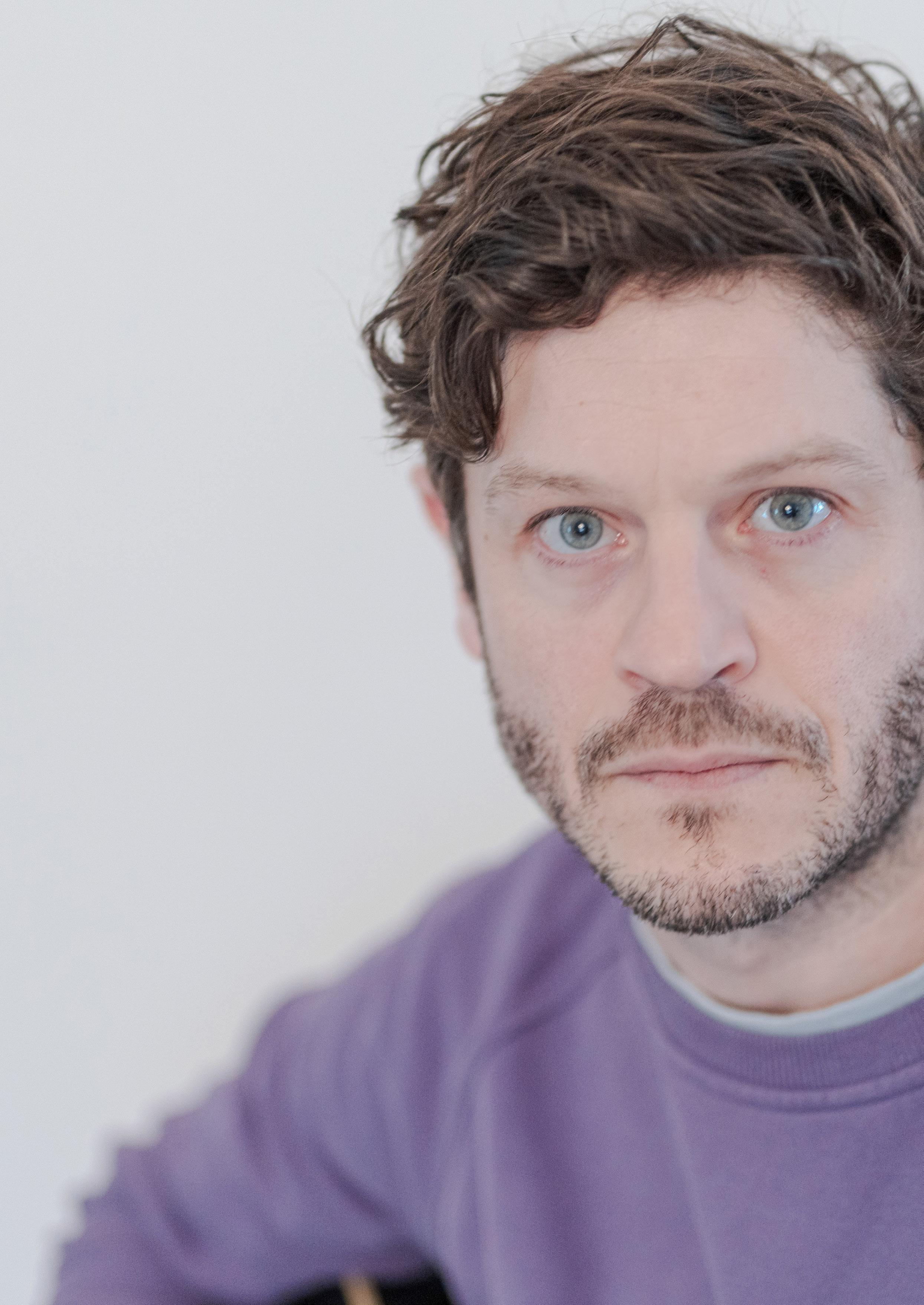

Having starred in one of the biggest TV series of all time, Game of Thrones, and Channel 4’s cult-hit Misfits, you might think Welsh actor and singersongwriter Iwan Rheon might now have his sights set on conquering the music industry. Quite the opposite, it turns out. As he returns with his second album, I Just Wish I’d Never Gone To Space, he talks to Headliner about how becoming a rockstar couldn’t be further away from his mind. Having hurriedly recorded his debut album during the intensive Thrones shooting schedule, he reveals all about being able to give this second record much more time and energy, and its stunning lead single, Forward Motion.
The Cardiff-raised Welshman was actively pursuing music in a band until he got a West End call-up, shortly followed by his breakthrough UK TV role when he was cast in the BAFTAwinning sci-fi Misfits. Dark, comedic, and compelling, it’s not hard to see
why the series has maintained a cult following since; it follows a group of youths on community service who are granted superpowers during a supernatural storm.
His next major role came on Thrones, in which he played one of television’s most deeply unpleasant characters, Ramsey Bolton. While not being quite among the core ensemble cast, such as Emilia Clarke and Peter Dinklage, Bolton was nonetheless one of the most memorable characters in the long-running series, particularly for the manner in which he faced off against series-favorite Jon Snow. Despite their brutal relationship on-screen, he reportedly remains close friends with Snow actor Kit Harrington to this day.
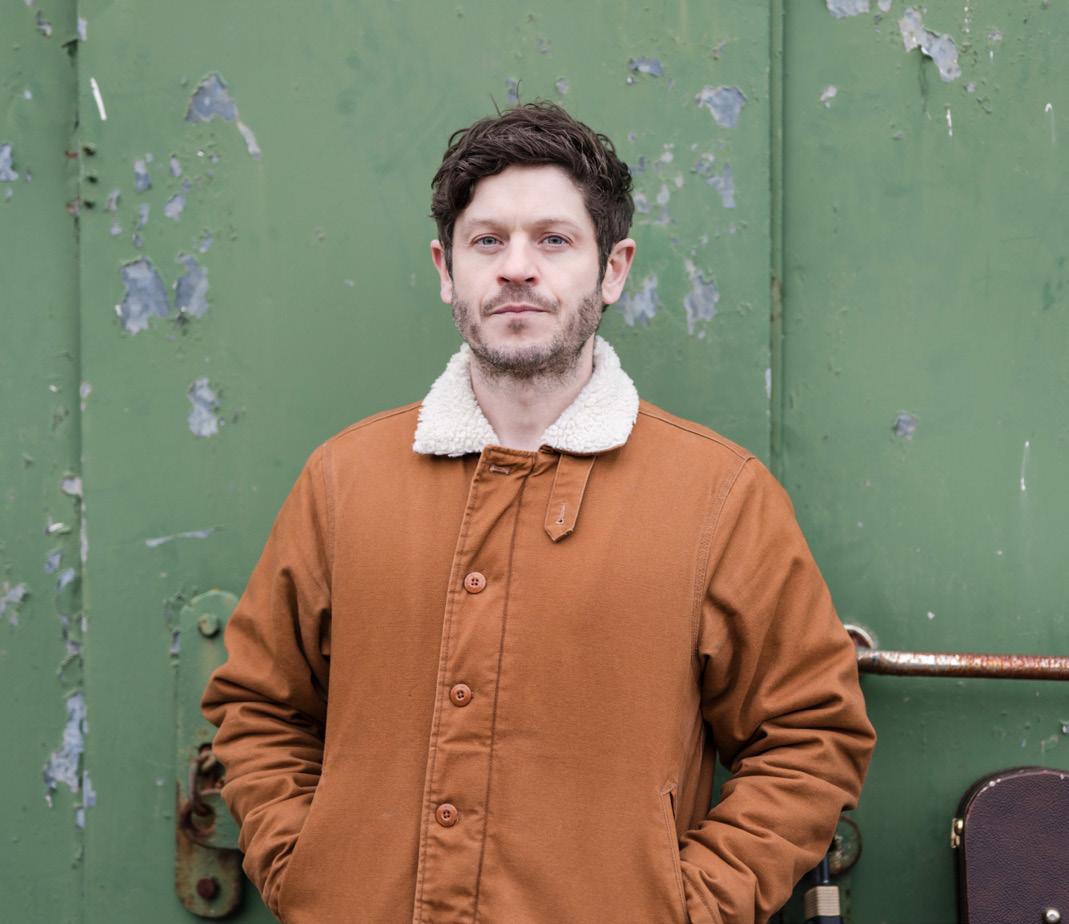
Undeterred by how intensive the shooting schedule was in Northern Ireland, Rheon would dart back to Wales in the pockets of time he could find to record his debut album Dinard, which he released in 2015. He joins the call from home in London. The Thrones part of the conversation is kept brief, as he has had a number of interviews in the past booked to promote his music, only for the interviewer to quickly pivot into just asking about GoT
“That show gave me a wider audience and a platform,” he says. “I did find that with the early releases, at the same time as the show would air, I found it a little bit problematic at times. Everyone just wanted to talk about that, and then it just felt like ‘Oh, and by the way, you’ve got some music out.’ And I thought I was there to talk about that. You can’t win. But it really did give me a platform for an audience, and I’m definitely grateful for that.”
His debut album, Dinard, is a much more acoustic and singer-songwriterfocused record, which perhaps made it a much more feasible project as he was recording during pockets of free time amidst GoT season 5, in which his character is busy terrorising the captured Winterfell and feeding people to his hounds.
“Whenever I had a little break, I’d shoot off and record some music, usually in Wales, and we did it in bits,” he reflects.
“It was the same as this new album as well. It’s all about availability. I find being in the studio a bit like a mind holiday, because it’s a very different focus and a different kind of creative process to filming. When you’re in something as huge as Game of Thrones, and you’re a very small part of this huge machine, my job is to do my little bit as well as possible to help create this amazing show. So when you’re in a studio, and it’s just me and a producer, you have this incredible, complete creative control.”
With Rheon’s big acting profile, he could almost certainly attract some record labels to work with, but keeping both albums independent has been very important to him. Like many other artists, he can’t stand the thought of any label head suggesting how to do things creatively.
And in terms of this new album, that independent creativity first yielded Forward Motion as its first single.
That song, like much of his oeuvre, starts as an acoustic guitar-infused track, but it builds to a stunning close. From its opening verse of just Rheon’s vocals and guitar, gradually piano, drums, and strings are layered in, before it becomes a full-blown hymn with a backing choir for its last moments. You can imagine Rheon and his singers belting it out over some befittingly beautiful Welsh countryside.

“It was quite a sweet way to start the whole process,” he says. “I’m really pleased with how the song came out. I always had this idea that it was going to be a slow build into this climax at the end, and adding different elements. And Chris [Hyson, the album’s producer] always got that – I had done a demo on Garage Band, he heard that, and we started recording it properly, then adding all the backing vocals and building up that rich sound.”
Rheon’s collaboration with Hyson, who is known for his work with Jordan Rakei, helped the record go from folky demos to a much more expansive place and to new creative territory.
“They had a Juno in the studio,” he says. “And Chris had said he wanted to put a bit of Juno on the songs. And at first I was a little bit like, ‘I don’t know, man, synth? Are we gonna put synths on this album?’ I initially set out to make a really folk album, although I don’t know if I was really fully committed to that, but it changed very quickly. Once the synth started going on, then you start realising how much power it has and how much flexibility the Juno has in terms of sound and the warmth it can create. I think there’s Juno on possibly every track except for two on the album. It ended up being quite heavily used, but not overly used. And that’s what Chris does really well. He creates a very rich, warm sound.”
Another single from the record is Hashtag, which also contains the album’s title, I Just Wish I’d Never Gone to Space. Next to Forward Motion, it’s a darker track, as Rheon doggedly repeats a melody throughout that is doubled by an electric guitar. With the moody atmospherics that Hyson conjures up for this song, it sets the tone perfectly for the subject matter the lyrics touch on.
In terms of that lyric becoming the LP’s title, Rheon says, “I couldn’t really think of an album title. I think it’s me being obtuse, more than anything. Everyone’s like, ‘We need a nice, snappy title.’ It’s
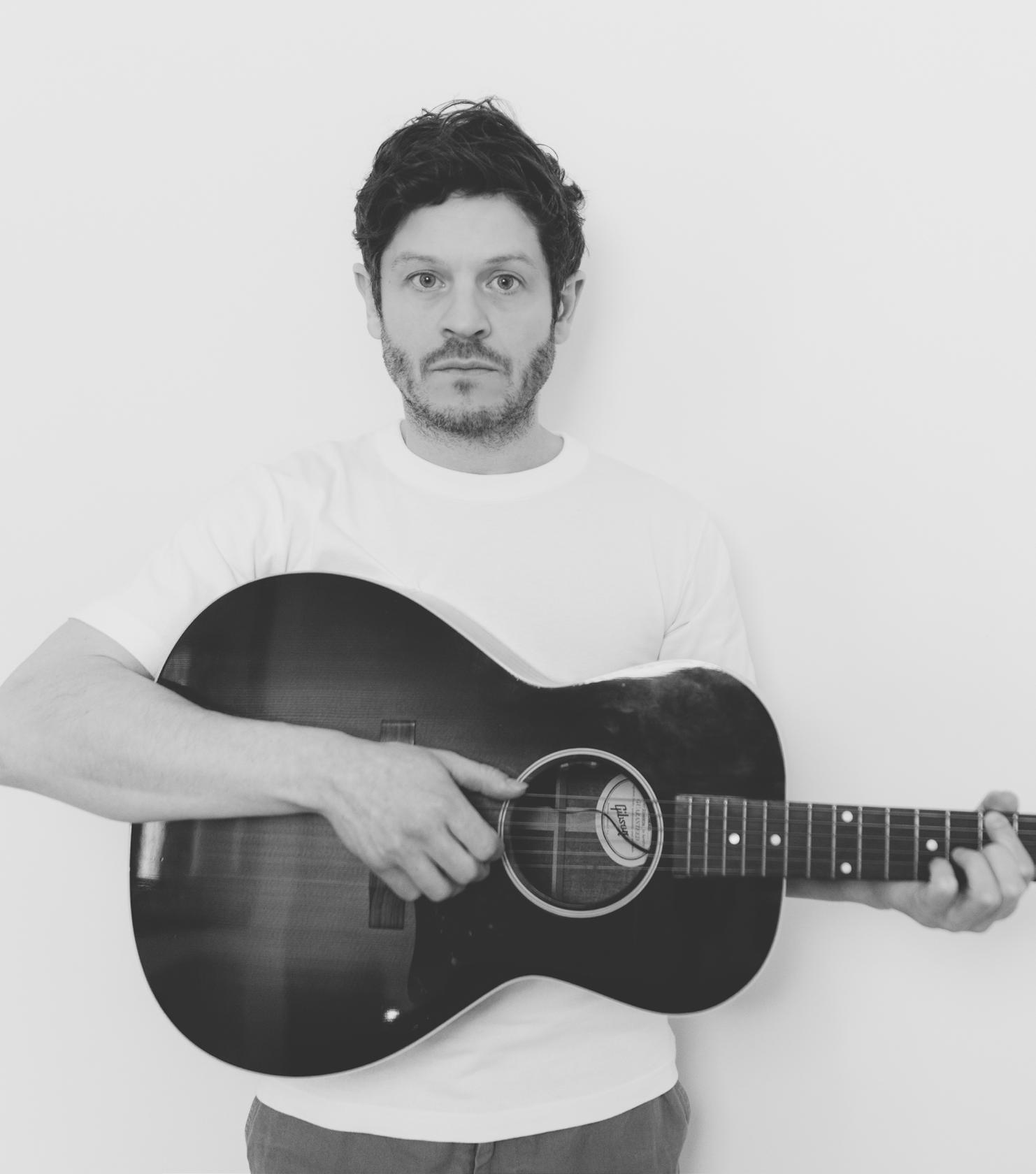
one of the lyrics on Hashtag. I was watching a rocket being shot into space by a tech tycoon, not naming any names. I thought, what would happen if something went wrong with the rocket, and it just carried on going, and the tech tycoon was just lost in space, with all their wealth stuck on Earth?
With the album out, Rheon shares that he is keen to do some shows, while not being able to commit to a full tour due to the demands of his acting career, so keep an eye out for those when they get organized.
“I’d love to do a couple of live shows with the band. Hopefully, the boys who played on the album can come and play with me. It’s simpler for me to do a few shows instead of going wild with a full tour. I never got to play Dinard live, which is really annoying. So definitely
a show in London, maybe in Wales too, that’s the plan.”
The 10-year wait is over, and I Just Wish I’d Never Gone to Space is out now, a deeply impressive sophomore record from this Welsh musician and actor.
And if that decade wait was too long for you, the good news is Rheon is keen to ensure that gap doesn’t repeat itself.
“This album was all written quite a while ago, and I’d like to start thinking about the next one. I’ve already started writing it. So, at some point, I’ll be back in the studio. But for the time being, I hope people enjoy listening to this one.”
INSTA: @_IWANRHEON




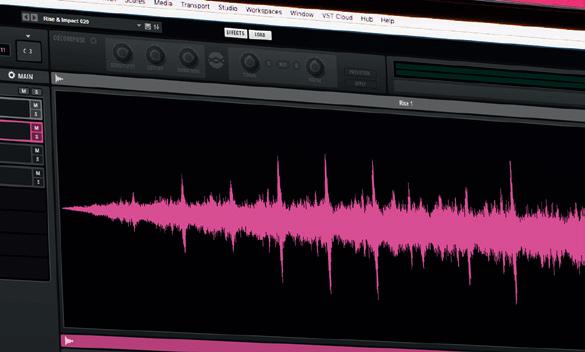

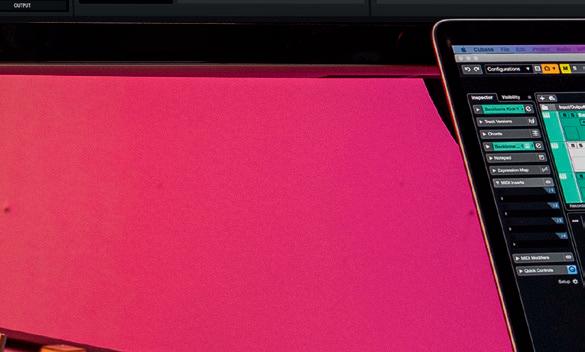
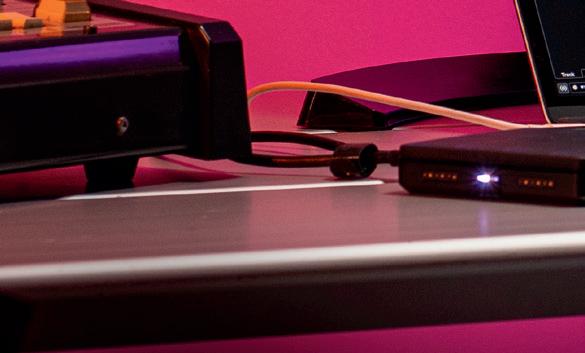
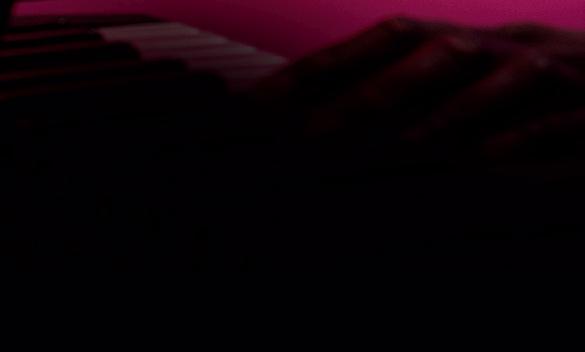


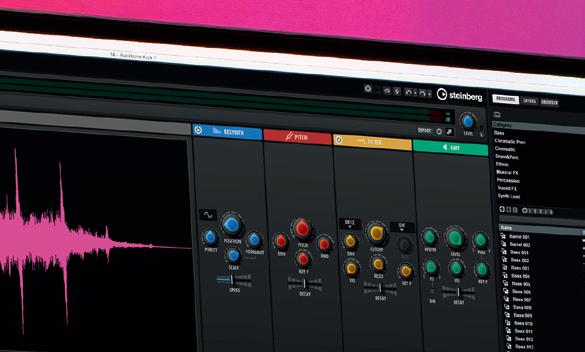

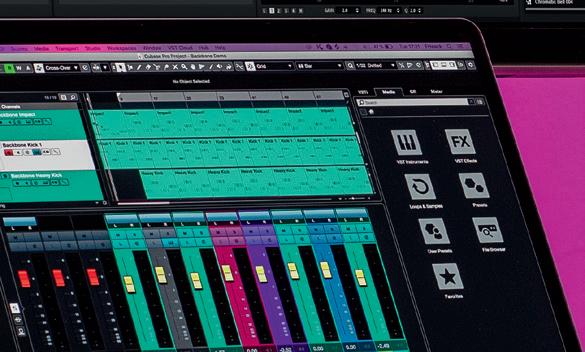
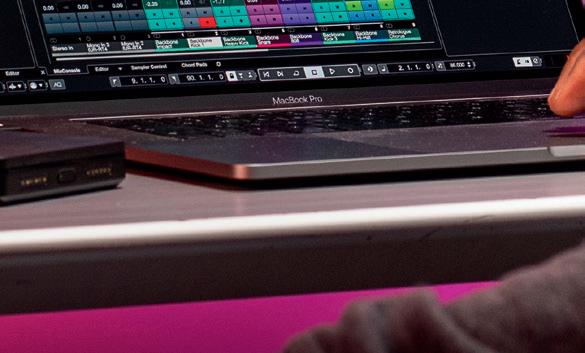


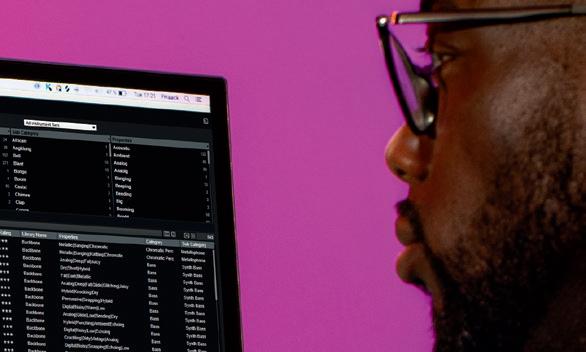


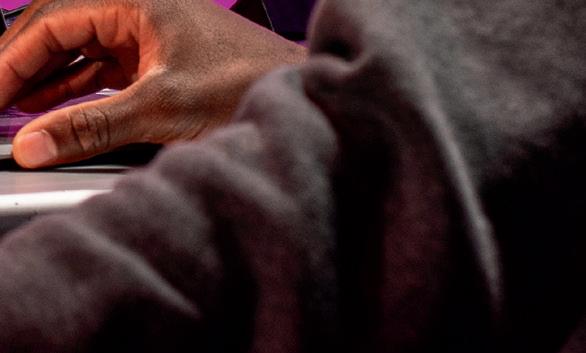
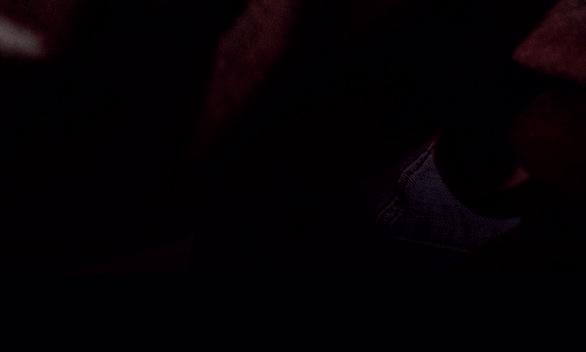



A revolutionary way to design your own drums – Backbone is your new, innovative drum designer for single kicks, snares, hi-hats, percussion, rises, hits and more. Layer up to eight samples and shape them with classic subtractive synthesis, decompose samples into tonal and noise elements and re-synthesize samples to manipulate them in unheard ways.
steinberg.net/backbone




To honor the legacy of the Allman Brothers Band, godfathers of Southern Rock, the musical supergroup known as The Brothers recently returned to New York City’s storied Madison Square Garden for a pair of shows in April. Led by former ABB guitarist and Gov’t Mule founder Warren Haynes and featuring drummer Jaimoe, the last surviving original member of the Allman Brothers Band, the ensemble also included former ABB guitarist Derek Trucks (nephew of ABB drummer the late Butch Trucks), bassist Oteil Burbridge, and percussionist Marc Quiñones, plus Joe Russo, Reese Wynans, and Isaac Eady, as well as special guest Chuck Leavell on piano.
It was an emotional reunion. The Brothers last played MSG in March 2020 to celebrate 50 years since the founding of the Allman Brothers Band. Fortunately, some very 21stcentury technology was on hand for the two shows, in the form of three DiGiCo Quantum consoles, as well as a DiGiCo SD12-96 desk, all provided by Southold, New York-based SK Systems (with an L-Acoustics sound system supplied by PRG). At the front of house were both a Quantum338 and a Quantum225; the broadcast mix had another Quantum338; and monitors used an SD12-96.
On those nights at MSG, The Brothers relied on another set of siblings: DiGiCo Quantum, all of which were connected on an Optocore network along with an SDRack and SD-Nano Rack.
The workflow began with the front of house. Engineer Brian Speiser, who also regularly mixes FOH and acts as PM for Tedeschi Trucks Band, was at the Quantum338 for the main house mix. In addition, systems engineer Chris Bedry, who also performs that role for TTB, manned a Quantum225
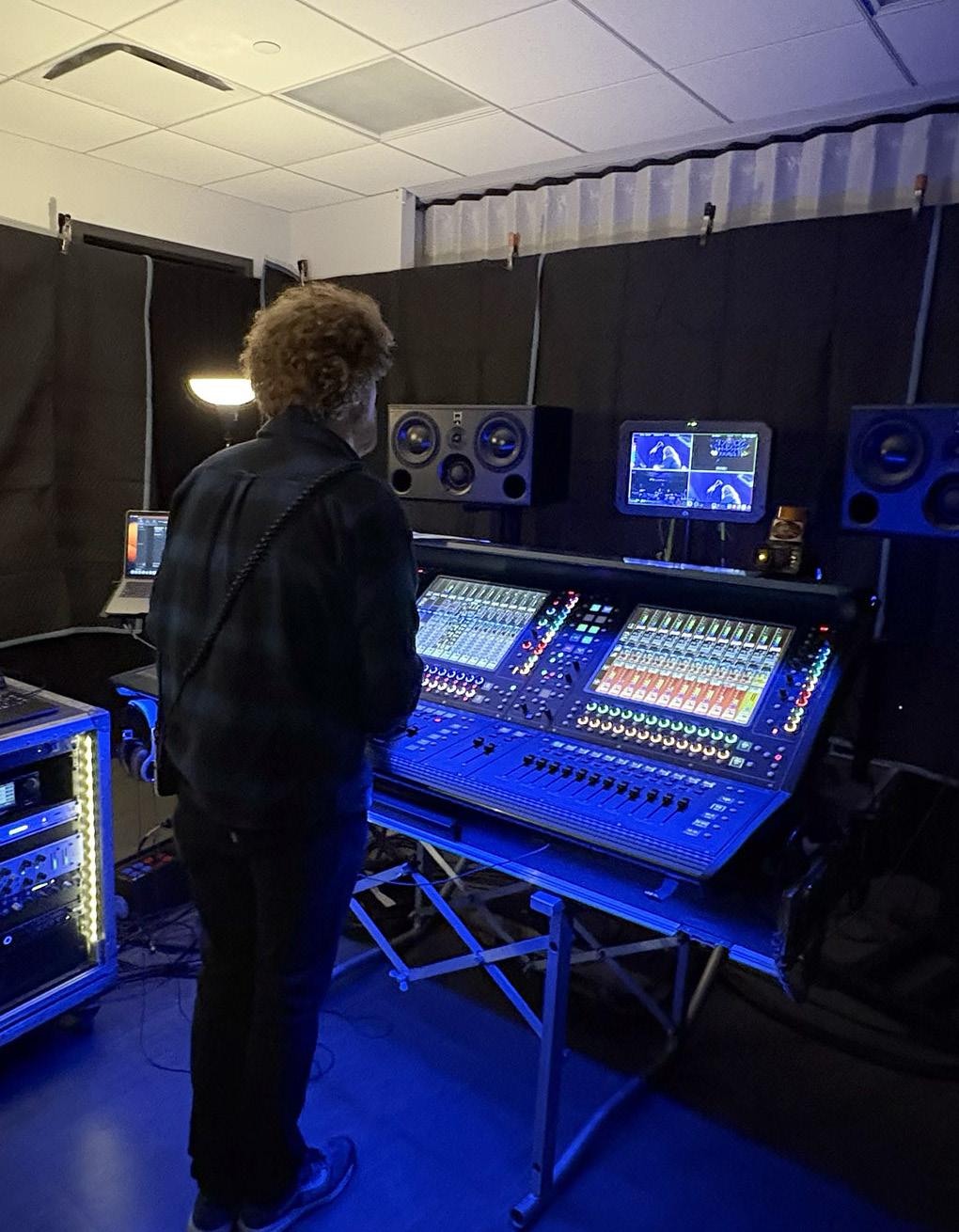
next to Speiser, taking stems from Speiser’s house mix and putting them together, over headphones, for a backup broadcast mix.
The primary broadcast mix was being handled by Bobby Tis –usually TTB’s monitor and studio engineer – on another Quantum338, with Chris Bailey mixing monitors on a DiGiCo SD12-96.
“Chris Bedry was multi-tracking the whole show, but also sending a
backup stems mix from me to the broadcast people so that they had an emergency backup that was coming directly from us if something went wrong in the broadcast room,” explains Speiser, who started laying out this workflow months ahead of time, adding that the Quantum225 was also submixing all of Marc Quiñones’ percussion channels and sending them back to him on the 338.

This was only the second performance for The Brothers, the first being 2020’s ABB 50th Anniversary show. “I didn’t mix their 2020 show, so going into what’s essentially a throw-andgo at Madison Square Garden, I felt like it would be best if I had Chris specifically zero in focus on what Marc, the percussionist, was doing so that I can mostly focus on everything else that was happening on stage with two drummers, an organ player, a piano player, two guitar players, bass, and vocals.
Marc had a lot of mics that sometimes needed to be live, but sometimes didn’t, and two different vocal mics for his two positions.”
What could have potentially complicated matters was the fact that Speiser had never piloted a Quantum console before this. “I have always been on SD consoles, so I went to a local vendor in Cleveland, where I live now, who happened to have a Quantum and a Waves server in the shop,” he recalls. “They were nice enough to let me come
over there one day and build my session, and I spent one afternoon just going through it. At first, I was worried that it might feel like a desk that I didn’t know my way around because I had just never been on a Quantum. But I started building my session in the offline editor, and then when I went over to their shop and got my hands on the desk, it was super intuitive – everything was exactly where I would’ve expected it to be based on having so much experience with the SD. It just felt like the exact same experience.”
“BEING ABLE TO MIX THE CLEAN INPUT WITH THE COMPRESSED SIGNAL LIKE THAT WAS A GAME-CHANGER.”
“Once I had the time in rehearsals, I wound up using a good amount of the Mustard and Spice Rack dynamics,” he continues. “For instance, the functionality of the Mustard version of the Primary Source Expander is the most functional I’ve ever used. I had more success with that than I had with the hardware version or the Waves plugin version. And the other thing that was super helpful was the Mustard compressors having the hardware mix knob – being able to mix the clean input with the compressed signal like that was a game-changer. Altogether, these kinds of features made this workflow much easier to manage.”
Broadcast mixer Bobby Tis is also a longtime DiGiCo user – he tours with TTB on a Quantum338 – and felt at home in what he described as a “DiGiCo universe” at the Garden. “It was pretty cool to really network four consoles together and be sharing lines and making it all work together,” he says of the MSG shows.
“We were all gain-sharing, which kept things orderly for a one-off type of show like this. It was nice that we had four engineers’ eyes on the gains of every channel, especially with that many inputs. Good gain structures, good shows! Everything worked out the way we had hoped and expected it would.”
Tis says the Quantum338 has become a foundation for his work as TTB’s monitor engineer. “It’s really, really useful, especially for the monitor gig, but using it on The Brothers broadcast made it even more fun because I got to use more of the Quantum features in new and different ways,” he says. “For instance, I used the FET limiter within Mustard quite a bit on inputs, and I love the fact that I can use it in parallel with all the other Mustard processing, which has saved me inputs. And the Mustard Source
Expander is super useful, and it’s better than the hardware versions. I find things like that really make mixing live music a lot easier.”
A new Fourier Audio transform.engine that Tis used with his console at Madison Square Garden also helped make the broadcast mix a better experience. “I had messed around with other scenarios of running plugins with the DiGiCo, but not with the actual Fourier Audio transform.engine before, and I’ve got to say I was super impressed with how very easy it was to use,” he enthuses. “There’s always a bit of nerves when you’re using something new like that on a show, but I put it through its paces and found it to be a really solid device, and I had a lot of fun playing with it.”
One application was applying the oeksound Soothe2 dynamic resonance suppressor to the three pairs of stereo microphones in the arena, used as ambience mics. “I was mixing those into a group on the DiGiCo, and then across that group I was using the Soothe2 plugin aimed at the high midrange to look for resonance and take it out of the room ambience. And then I am also sending one of those pairs of audience mics out to a Bricasti M7 reverb. I’ve come to learn that putting the audience into a great space of its own and extending the room a bit helps the whole thing smear together. I also brought a lot of what I generally use in my studio right to the stage. That combination of the DiGiCo console and the transform. engine had me in my own sweet spot those nights, and that’s a great place to mix anything from.”
DIGICO.BIZ
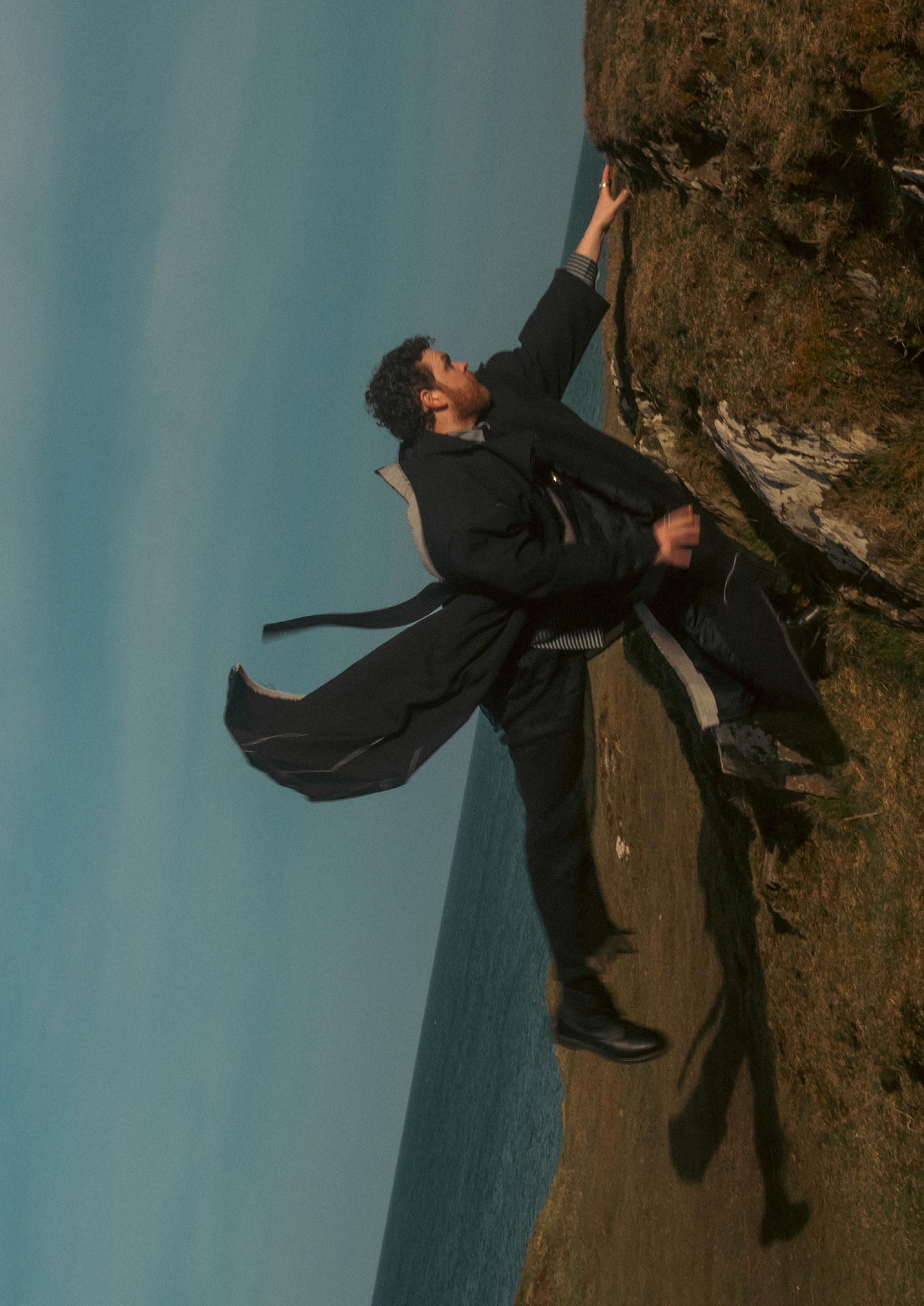
WORDS BY ALICEGUST A F NOS
Almost 10 years on from his BRITs Critics’ Choice award-winning debut album Phase, Jack Garratt is back with his new album, Pillars. But the time in between his first and soon-to-be-released third album has been far from easy. The singer-songwriter reflects on going from wanting to quit music altogether to writing his best songs yet.

Jack Garratt is name-dropping. “As I begin to say the words out loud, let me just lie down on the floor, so I’m ready to pick up all the names,” the singer-songwriter laughs from his new studio, which, although Headliner doesn’t comment on, he immediately confesses is a complete mess. “That’s my obsessive-compulsive need to hyper focus on certain things,” he says, rapidly volunteering that he’s “saying everything he can without being diagnosed with ADHD.”
One of the names he’ll be picking up off the floor is Stevie Wonder’s, whom he met once at a festival.
“I didn’t know what to do with my hands,” he cringes. “I went into a fugue state. But my fugue state was one of avoidance. It was the most intimidating and strange experience of my entire life. I feel like you get one opportunity to meet someone like Stevie Wonder, and I absolutely fumbled it. He was like, ‘Someone I know was at your show earlier today, and they say you’re pretty good on that guitar. You should play Superstition with us later’. And I went, ‘I don’t have a guitar’. It’s a funny story now, just because, what the fuck was I doing? Why didn’t I just say yes? Something took over my body and just came up with an excuse because I didn’t want to let myself or anyone down, which is so heartbreaking now, when I think
about it. I’ve dreamt of that moment of being at a show and they’d say, ‘Our drummer is sick. Does anyone know all of our songs?’ That was me when I was eight! And there I was, standing in front of Stevie Wonder, and he’s like, ‘Hey, come and play Superstition with us’, and I’m sitting there going, ‘I can’t’. It was too real!”
Garratt’s name-dropping is anything but obnoxious, though, as meeting one of his musical idols is at odds with how he sees himself as the artist Jack Garrett. There’s a strong sense he finds it hard to reconcile the two versions of himself, and it could be the selfdeprecating Brit in him, but there’s an unmistakable ‘how the hell did I get here?’ feeling to his tales of chance encounters with big-name artists. Another time, Katy Perry invited him to a Beyoncé concert:
“I was in L.A. working with Katy Perry on her record,” he explains. “I remember I was supposed to fly home, and she was like, ‘We’re going to see Beyoncé. Do you want to come?’ I pushed my flight so I could go, because I’m not an idiot. I mean, I am, but at that point, I was smart enough not to be an idiot. I was in a box at Dodger Stadium with Katy Perry and Sia. It was a time in my life when I would see people like that.”
This was after Garratt rose to prominence in 2016 with his debut album Phase , which won a BRITs Critics’ Choice award, topped the BBC’s Sound Of...poll and was shortlisted for the Mercury Music Prize. Following the whirlwind success of his debut, Garratt found himself overwhelmed by the weight of expectation. Struggling with anxiety and self-doubt, he ended up scrapping his follow-up album entirely and stepping back to regroup. When he finally returned with a new record, it scored him a Top 10 hit, however it dropped just before lockdown, robbing him of the chance to tour or promote it properly. And in his personal life, he was navigating the emotional fallout of a divorce. These days, as evidenced in his insightful self-aware comments throughout this interview, he’s done a lot of work on himself, and is happy to confirm that he’s doing just fine – “As I said to my therapist recently: fine, the state of readiness from which I can make decisions,” he quips.
He’s in promo mode today to discuss his new album Pillars , his first record in five years. It’s taken a lot for him to get to this point, though, as he grew to resent his early success. “A big part of the work I’ve been doing emotionally over the last couple of years is facing that resentment head-on, because there’s a lot of it,” he shares, although he’s quick to clarify that he is nothing but appreciative for the awards he won.
“THOSE AWARDS ENDED UP CREATING OPPORTUNITIES, BUT THEY WERE ONLY GOOD FOR SO LONG. IT SEEMED TO HAVE A SHELF LIFE.”

“I’m so grateful to those awards and for the opportunities that they gave me, but I compare it to the idea of weight training as a teenager and stunting your growth. The irony is, you’re getting bigger, but it stunts your growth in the long run. There are parallels there with what I went through and the way that those awards ended up creating opportunities, but they were only good for so long. It seemed to have a shelf life that was not as long as I thought it could be.
“But then on top of that, I worked really hard and I got really tired. 10 years ago, there was not a lot of care being taken for the emotional well-being of the artists who create music within the industry. My burnout was absolutely insane.”
Garratt recalls doing around 530 shows over the 2015-2017 period, which led him to suffer from physical and mental burnout. He’s determined to avoid this time with Pillars . “A big thing is how to avoid that. I have no idea how to survive that again.”
With the emotional and physical toll having been greater than the input that goes into creating an album, it’s not surprising that Garratt has considered walking away from music entirely.
“That thought comes to me regularly,” he admits. “It’s not that it’s getting harder, but more than anything, it’s hard to know what your place is in it all. There’s always been an element of: you play the game and you scratch people’s backs, and your back gets
scratched, and if you’ve got good music to follow up your backscratching, well, then the fucking sky’s the limit, right?
“But now it’s so much more: you play the game and you won’t win, but if you don’t play, you’ll never win, which is so fucked,” he considers, warming to his theme.
“It’s such a crazy way to do art. Art and commerce have always existed side by side. No art has ever existed that hasn’t been paid for by someone, somewhere. So, yeah, thoughts like that enter my mind, and I think, ‘Maybe I shouldn’t do this anymore.’”
What keeps him sticking with it is simple: despite everything, he still loves making music more than anything. “I love doing it for myself, and it nourishes me,” he nods, his enthusiasm palpable. “For the first time in a long time, it is nutritional. And then when I get to surrender it to the world, people enjoy it. Writing a song isn’t tending a beautiful garden. It’s draining an abscess. It’s hard, dirty and disgusting work. But when you listen to it afterwards, and it sounds like it has come from you, music like that gets to me in a way I just don’t understand.”
Almost a decade on from Phase, Garratt presents Pillars as a self-produced record of fan and personal service. It’s a project which sees him thriving in a mutually creative partnership with big-thinking indie label, Cooking Vinyl. Pillars is Garratt at his most honest, to himself and his artistry, although this has not been a straightforward mode to switch into:
“I wanted to say more than what I was feeling, because I felt like what I was feeling wasn’t deep enough,” he says of writing more authentically for this record. “But then, I just went, ‘No, but it’s what I’m feeling; I feel confused, hurt and sad’. I came to the realization that this is an album of love songs, and when I’ve written love songs in the past, I tried to layer them too much with something more interesting, or with something smarter, like trying to be a thinking man’s love song. Whereas this time around, I’m like, ‘None of that.’ I’ve written a collection of love songs that are the pillars of my love,” he explains. “It’s my selflove, my platonic love and my romantic love. It’s songs about the ways in which I love or don’t love myself, songs about how much I love my friends, songs about my very confused and strange relationship when it comes to loving partners, and my relationship with sex. The challenge was to write about things authentically for the first time.”
He points to the last song on the album, the Damien Rice-esque, Big Of Me (Fight The Bee), as an example: “It’s some of the best lyrics that I’ve written, and it wasn’t because I sat there and worked on them. It’s because they kind of fell out of me rather than having to chisel it out.
“The authenticity that exists in Pillars is embedded in the way it came out of me,” he doubles down. “I’m so proud of these songs. What I attempted to do with this record is sit down and be a better songwriter. I think the only way that you can be a good writer of any kind is – and it’s an adage for a reason – to write what you know. When I was writing this, what I knew was all of the emotions that were swirling around my head. I got them into as many songs as I could, and then picked the best 11,” he says, suddenly sounding unsure. “I think it’s 11. Might be 12. I can’t remember,” he laughs.
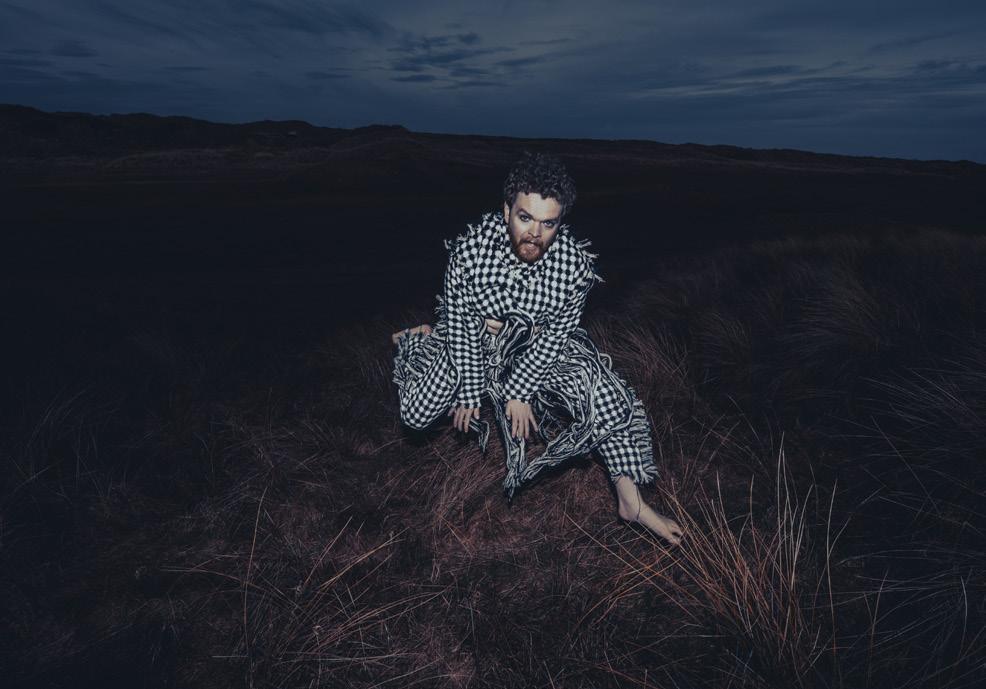
Garratt shares that a lot of the songs on Pillars remind him of the way in which he has loved anxiously, including his past habit of people-pleasing, which he now recognizes as an unhealthy trait. With that in mind, has this ever extended to writing songs that he thinks people will like, over what he really wants to say?
“Yeah, I’ve definitely tackled trying to write what I think people want to hear versus what I actually want to,” he nods. “I’m a self-diagnosed people pleaser, and when I act in ways that are people-pleasing, I’m doing it to keep people close to me. Rather than behaving authentically, I am showing a veiled version of myself to keep people around, and it’s cruel and it’s unfair and it’s harmful to other people and to myself. One of the sessions was me excavating that feeling in myself and confronting it. As much as I had my tiny violin out and felt like I was a victim, I wasn’t. I’ve done this to myself. So one song is a self-aware anthem… from the perspective of someone who hasn’t got self-awareness yet,” he deadpans.
“The first album then obviously did well, and suddenly there’s expectation, and it’s hard, because on the one hand, the expectation is coming from other people, but it’s mostly coming from myself,” he considers. “I was translating other people’s thoughts and opinions, looping back that expectation and turning it into pressure on myself. The thing I doubled down on this time was making an album that I wanted to make, and that I wanted to listen to.
“The way I say it is a bit self-effacing: Is my taste basic enough that people are going to like what I like? As long as I like what I make, other people are going to like it. So I don’t need to worry about that. They’ll hear it in August,” he grins.
JACKGARRATT.COM
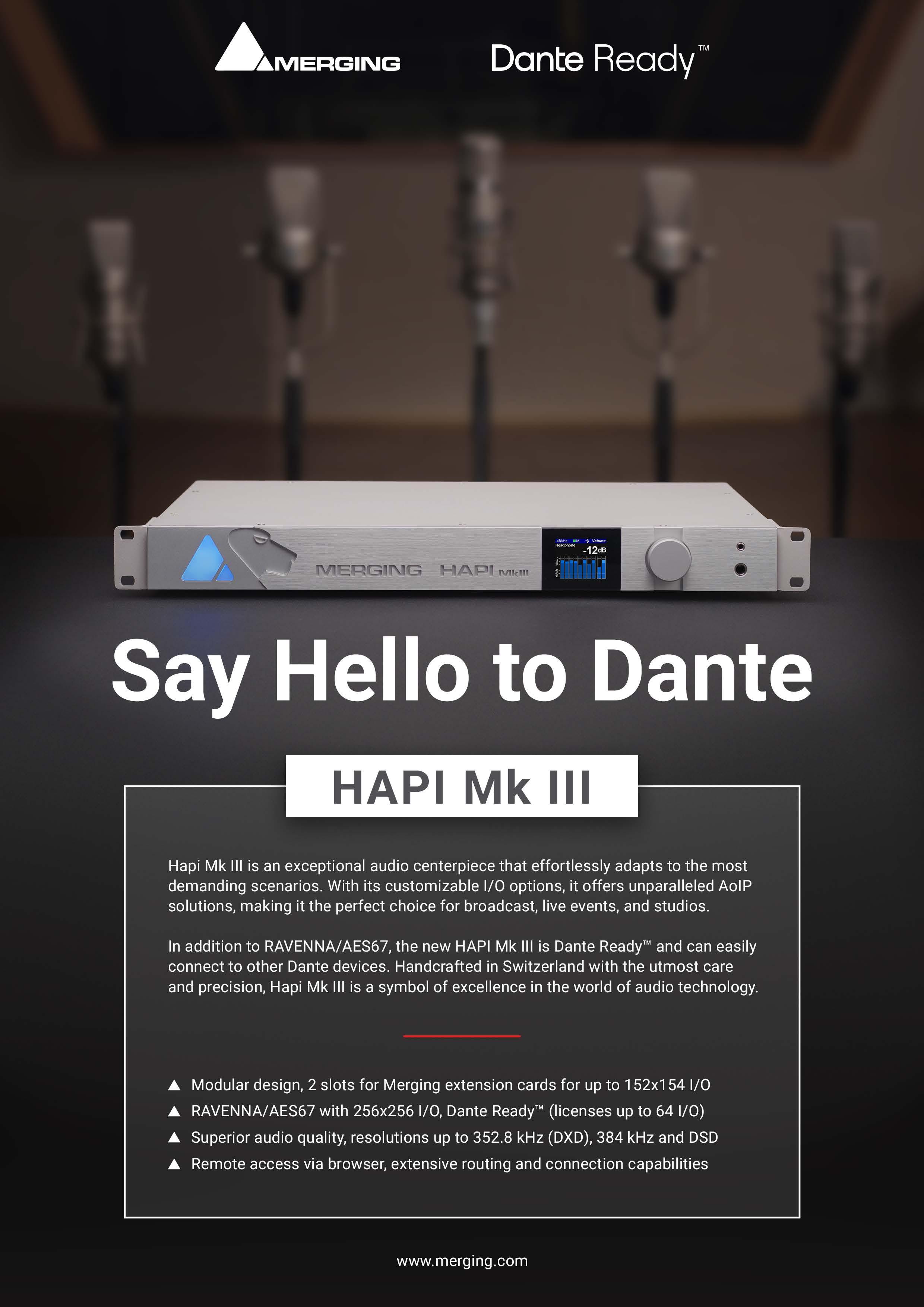

by ALICE GUSTAFSON
After years of navigating the world of acting, Meredith Parks has released her debut album, Trying To Find My Way, produced by recording legend Bill Szymczyk, in collaboration with independent music company Head in the Clouds Music, founded by Szymczyk’s son, Michael Szymczyk, and Meredith’s childhood friend, Evan Mathews. Here, the four of them discuss how AUDIX mics have changed their approach to miking, and Parks reflects on finding her way back to music.
Meredith, your musical career took a significant detour. Can you talk about your creative journey into acting?
Meredith Parks: I grew up singing in church; my love for the stage began at four years old. It wasn’t until my college years that I started writing songs. I went to UNC Chapel Hill and started out as a vocal performance major, but I hated music theory and transferred to the drama department, and loved it. From there, I auditioned for local television and film productions. Things were picking up in North Carolina and Atlanta, and I fell into acting opportunities. When I moved to L.A.
in 2013, acting was where my focus was, but I wouldn’t say acting was a “detour” from my musical journey. I love it and still act. But here’s the thing, in acting you’re playing a character and saying other people’s words, but on my musical journey it took a while for me to not just find my voice but to also trust in my voice and what I wanted to say as an artist.
Then I needed to find the courage to put my original ideas out there.
“IT ALWAYS SEEMED HARDER TO MAKE MUSIC THAN TO BE IN THE ACTING WORLD. FOR ACTING, I KNEW THE STEPS TO FOLLOW. WITH MUSIC, IT WASN’T THAT CLEAR TO ME.”
Do you find anything helpful about having both experiences in your career?
Meredith Parks: Absolutely! The two blend into each other. I think any time you’re doing any type of creative pursuit and trying new things, they synergize. I’ve done that in so many different ways that I’m more assured and determined. I’m not frightened to be on stage when I’m performing. In addition, we’re now working on several songs that aren’t from my first-person perspective, so it’s fun to get into the voice of a different character. The acting has definitely helped the music along the way.
What called you to focus on your music?
Meredith Parks: Music is something that I’ve always wanted to do. I don’t think there was ever a moment when I didn’t want to perform music, but, for this particular project, the time was right and all of the pieces finally fell into place.
How did Trying To Find My Way come together?
Meredith Parks: Trying To Find My Way is 15 songs that chronicle my personal journey, my ups and downs through my creative career and
personal life, moving from North Carolina to California and back again. They’re my diary entries, so to speak. The seeds for many of the songs began as early as 2014 and were sitting as voice memos on my phone for a decade. I brought them into the studio, and we went from there. I wouldn’t call it a concept album, but it does tell a story about trying to find your way in life.
Michael Szymczyk: “Finding your way in life” is a larger metaphor, something that everyone can understand and relate to, but it also has layers that apply to Meredith as an individual and us as a smaller team. From finding our way creatively to trying to find our way in a music landscape that is constantly shifting faster than we all feel we can sometimes keep up with.
Everybody has access to being creative, making and releasing their art, but how do you sustain that? How do you get it out in the right way? How do you make a career of it? Trying to Find My Way can be taken at multitudes of levels.
Meredith Parks: It even applies to trying to find my way in simply
making music. It always seemed harder to make music than to be in the acting world. For acting, I knew the steps to follow. Whereas with music, it wasn’t that clear to me. The musician’s path is not defined anymore. Finding collaborators that you trust is hard. Even if you’ve known each other for a long time, working together is a whole different thing. But we were able to develop that trust and make this what it is now.
When did you discover AUDIX mics?
Bill Szymczyk: My awareness of AUDIX started about 15 years ago, when one of my longtime session drummers, Joe Vitale, sent me a few mics, the i5 and original D6, suggesting I should try them out. I was impressed.
Michael Szymczyk: When I was younger and started miking my drums for recording and live performances, I was taught to mic a drum kit a certain way with certain microphones. I thought it would never change, and it couldn’t get any better. Then I tried some AUDIX mics. First on the kick, then the snare, then the toms, and I realized that drums CAN sound better. Then, in the post-pandemic era, as we started to get rolling on helping musicians like Meredith, AUDIX reached out and asked how they could help, and
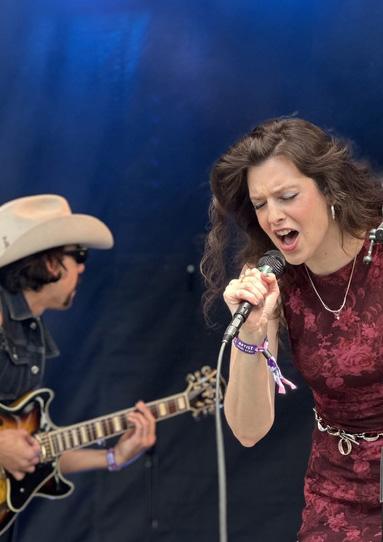
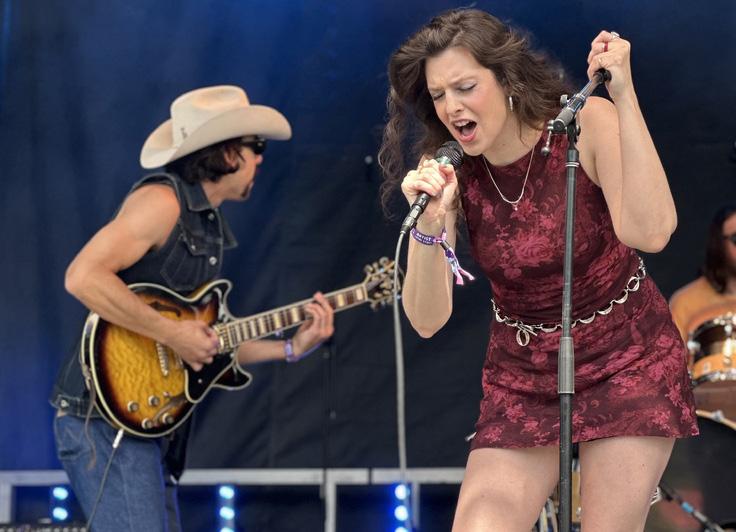

they assisted us in sourcing the right products for our needs. We ended up using an array of AUDIX microphones on her record.
Bill Szymczyk: At this point, we mic everything with AUDIX. The SCX25A lollipops are a good example. We set up drums in our library, and the piano sits right across from the kit. During the recording of Meredith’s album, I was using the lollipops as overheads on the drums, and I loved them for their crispness. We needed a piano overdub, and I thought, “Let’s turn them around and stick them in the piano to see what happens.” I was stunned at the sound we captured.
Michael Szymczyk: After experimenting with the SCX25 overheads on the piano, we took that approach for the whole record. We decided to use it as a hi-hat mic for things that were a bit more dynamically soft, and then we used it on a crazy guitar part. Then I had to capture live strings in my apartment in L.A., and I used them paired with the A231. It was fun figuring out all the uses we could find for the SCX25A; it was so flexible. We also used the PDX720 a lot. It’s on vocals. It’s on the JC120 guitar amp. I used it to mic a cello. Every mic from AUDIX has two or three prominent uses on the record, and that’s a testament to their versatility. Don’t get me wrong, we tried mics from other brands that we had in our locker, we were pretty scientific about it, but time and time again, we kept returning to AUDIX because they just sounded better.
Bill Szymczyk: I’ve had a series of go-to microphones that I’ve used for an endless amount of time…some 30+ years. They say you can’t teach an old dog new tricks, but for the first time, I’ve rethought my entire approach to miking, and it’s all thanks to AUDIX. I’m totally happy.
Michael Szymczyk: We filmed a promo piece for the record, completely live in the studio, and we were able to mic Meredith’s vocals with the PDX720, with guitar cabs, pianos and cello all performing around her, and it sounded great. In fact, we used our entire set of AUDIX studio mics, all 15, on every instrument for this live
recording. It didn’t matter if it was a song like Cowboys, which is absolutely screaming with wailing guitar, or a song like Feel Alive, where it’s super stripped down and mellow with strings and piano; we were able to use the same AUDIX mics for the entire thing. We’re not just planning on using AUDIX in the studio. We’re in the process of testing out their OMX mic for some live festival performances that Meredith has coming up.
Do you have a favorite AUDIX microphone?
Meredith Parks: When we use the PDX 720, it’s just beautiful. Give me that mic on everything I sing, every day. I love it. I’d like to take it home, but they won’t let me!
What advice do you have for independent artists trying to find their way?
Meredith Parks: It’s so cliché, but just believe in yourself. If you have the desire to write, sing, act, or anything, just go for it. Put yourself out there and believe in yourself.
Michael Szymczyk: You also need to absolutely grind on it until you feel like it’s worthy of putting out to the people that you’re trying to reach. There are eight billion people in the world, which means there’s a sustainable audience for everybody. Now go find your way to your audience.
Evan Mathews: A personal anecdote that ties into this record is “know when to let go.” Before I moved to L.A., I wrote songs that I knew would never see the light of day. One of the tracks that ended up on the record was something I’d written when I was 20 years old. I believed in it and had been holding on to it for all that time, but somewhere deep inside, I knew it wasn’t for me. In finally letting it go and having Meredith do it some 15 odd years later, I was relieved that it had finally found its place.

DESIGNEDANDCRAFTEDINTHEUKBYNEVE®ENGINEERS

“Every single recording I've ever done, some aspect of the drums has gone through a Neve. It’s been a huge part of my sound.”


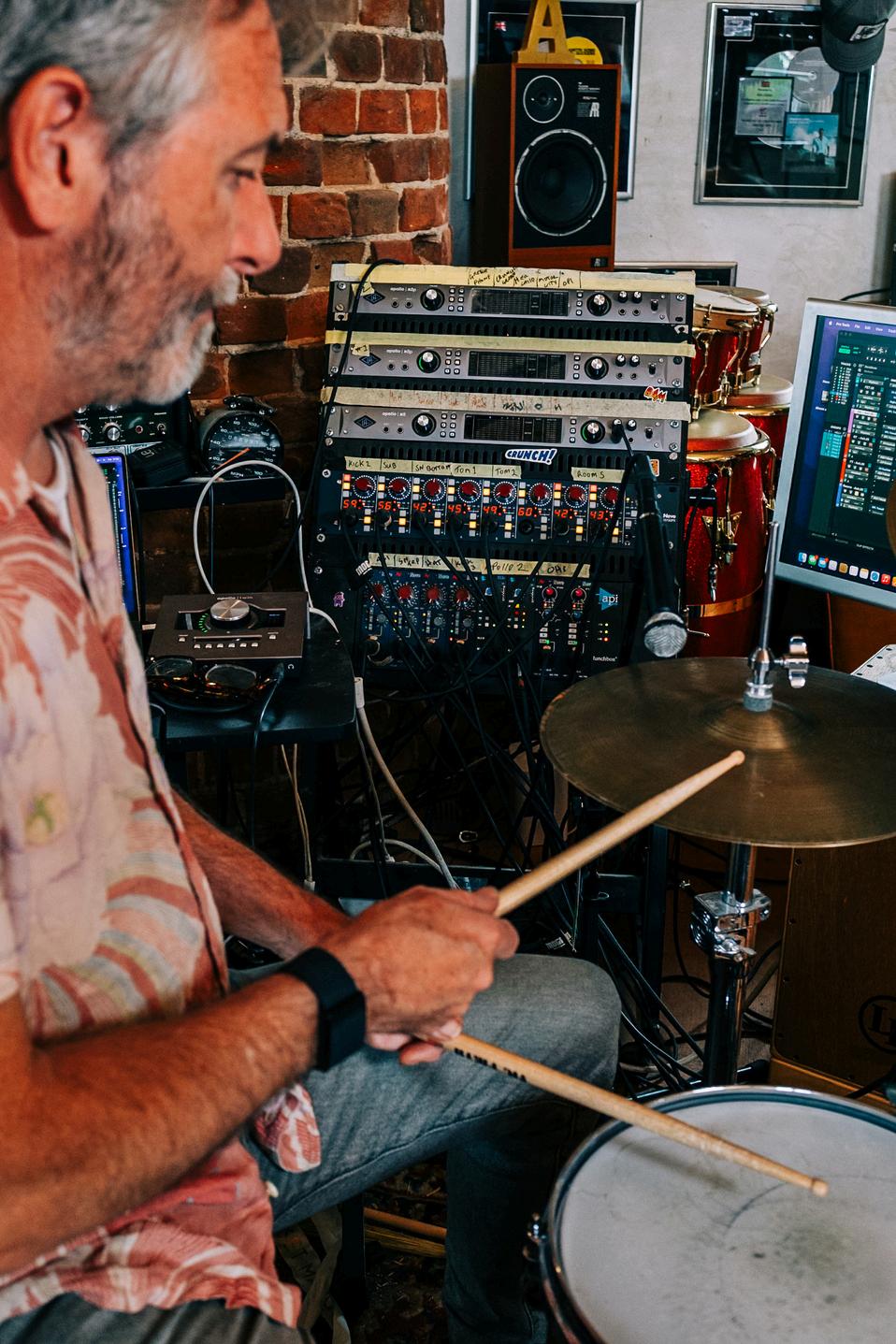
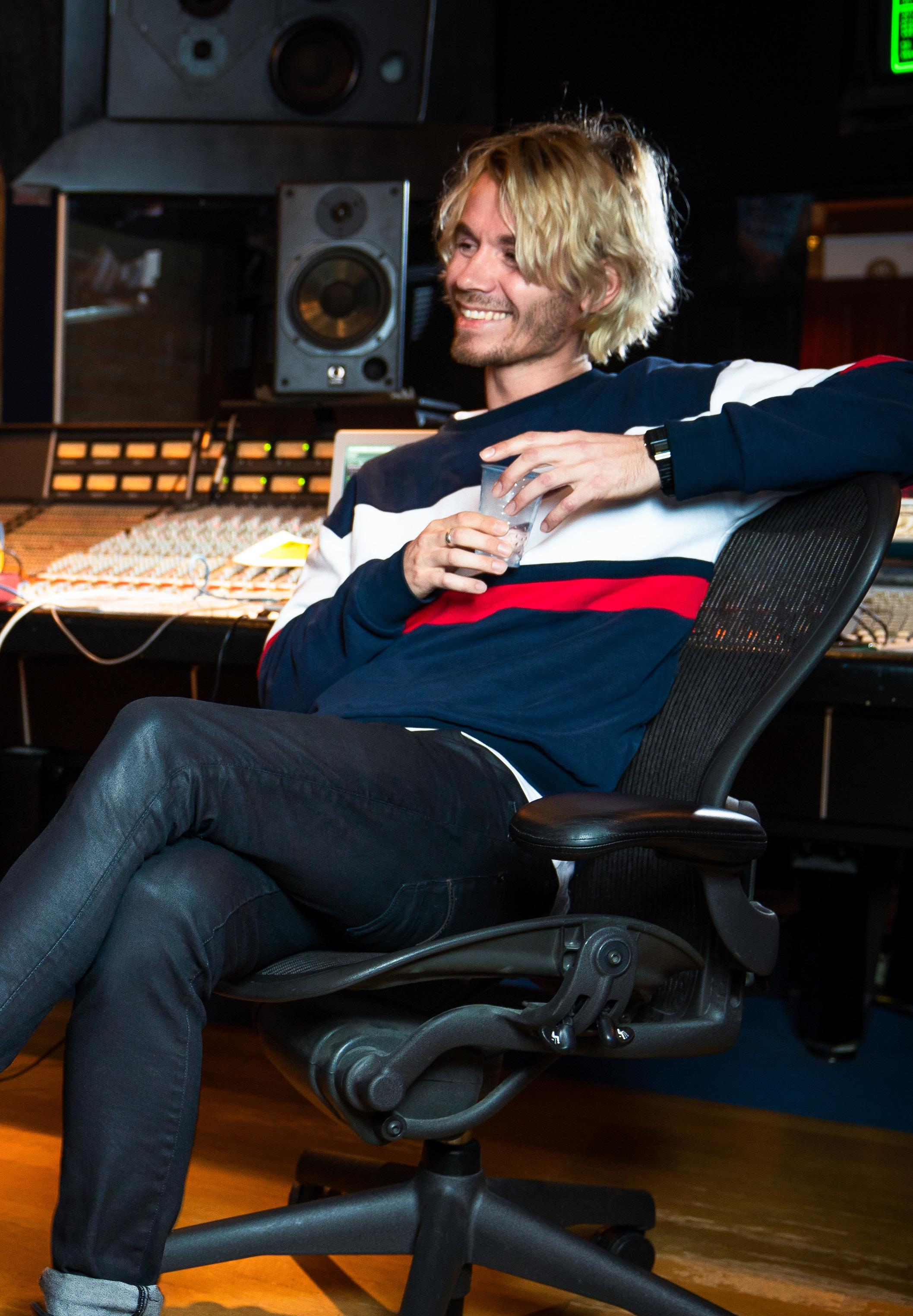
A NOSF
Jorn Heringa didn’t grow up obsessed with dance music. He was a grungeloving teen with dreams of starting a band. The only problem? He was too shy to be on stage. Instead, he carved out a behind-the-scenes role that would take him from mailing open job applications to becoming SVP of A&R at one of the most influential dance labels in the world: Spinnin’ Records.
Now over two decades deep into his Spinnin’ journey, Heringa has played a crucial role in discovering and developing global stars like Martin Garrix, Afrojack, and Oliver Heldens. What started with loud office speakers and a hunch about a young Sander van Doorn has grown into a career driven by instinct, data, and an everevolving industry. He’s witnessed the
shift from vinyl to streaming, the rise of TikTok as a launchpad, and the power of platforms like Shazam to signal a global hit before radio even catches on. Warner Music Group (WMG) acquired Spinnin’ Records in 2017 and has since nurtured and expanded Spinnin’s global community of hitmakers, DJs, producers, songwriters, and millions of fans.
Headliner recently caught up with Heringa, who delved into how artist discovery has changed, the fine balance between creative intuition and data-driven decisions, and why he believes AI and localized trends will define the next era of music.
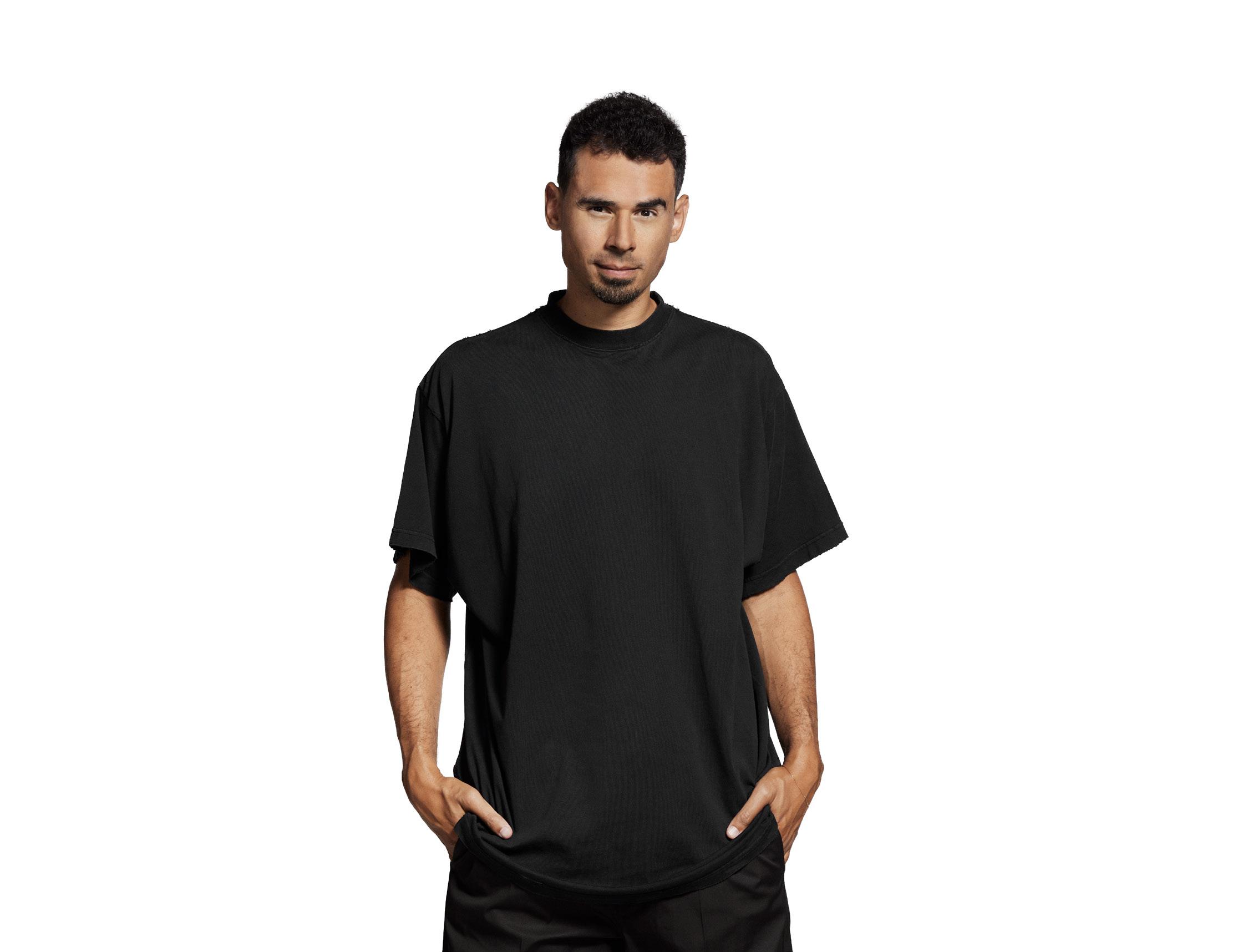
You’ve witnessed Spinnin’ grow from a cutting-edge independent label into one of the most influential forces in global dance music. What do you think has been the secret to Spinnin’s staying power and continued relevance?
It’s always evolving and keeping up with the market. I think it also comes down to passion, not just mine, but also that of the people working at Spinnin’. We’ve always had a drive to win. It wasn’t about putting ourselves in the spotlight; we just wanted to have the biggest records. It was always, “Hey, we’ve got a gold record!” and then straight away, “Right, that’s old news; what’s next?” From the beginning, we had the ambition to become the biggest company in the Netherlands. Once we achieved that, it was, “What’s the next goal?” We were always setting new targets, and I think that passion
is what’s taken us so far. We are always trying to adapt, embracing new technologies, exploring new marketing approaches, and constantly innovating. That’s our strength: finding and nurturing talent early on and turning them into major superstars.
Spinnin’ has always been good at evolving alongside the dance scene – whether it’s the rise of new subgenres or the shift from clubs to digital platforms. How has your A&R approach evolved over the years?
I think recently, especially with data becoming such a big factor, that’s been a major shift. There’s so much data now, and I think that’s a good thing. Within the Warner Music system, we use an incredibly useful data platform, and we rely on it every day. It’s also a healthy development because it brings new inspiration and
a new way of discovering talent. That’s a big change. Especially today, the market is so diverse, with so many different genres, that it’s hard to keep up. So if you’ve got really good tools, they make all the difference – and you need them because the competition is using them too. Things like streaming and TikTok trends are incredibly important these days.
According to Billboard, around 80% of all new artists breaking through are being driven by TikTok. So TikTok is a massive promotional tool now. But it’s not just TikTok. YouTube Shorts are also gaining ground, and YouTube in general remains hugely important. SoundCloud is making a comeback, too. Analysing all of these platforms is absolutely key to success. At the same time, traditional A&R still matters. I always tell the A&R team: we need to look in every corner of the dance music world.

“AROUND 80% OF ALL NEW ARTISTS BREAKING THROUGH ARE BEING DRIVEN BY TIKTOK.”
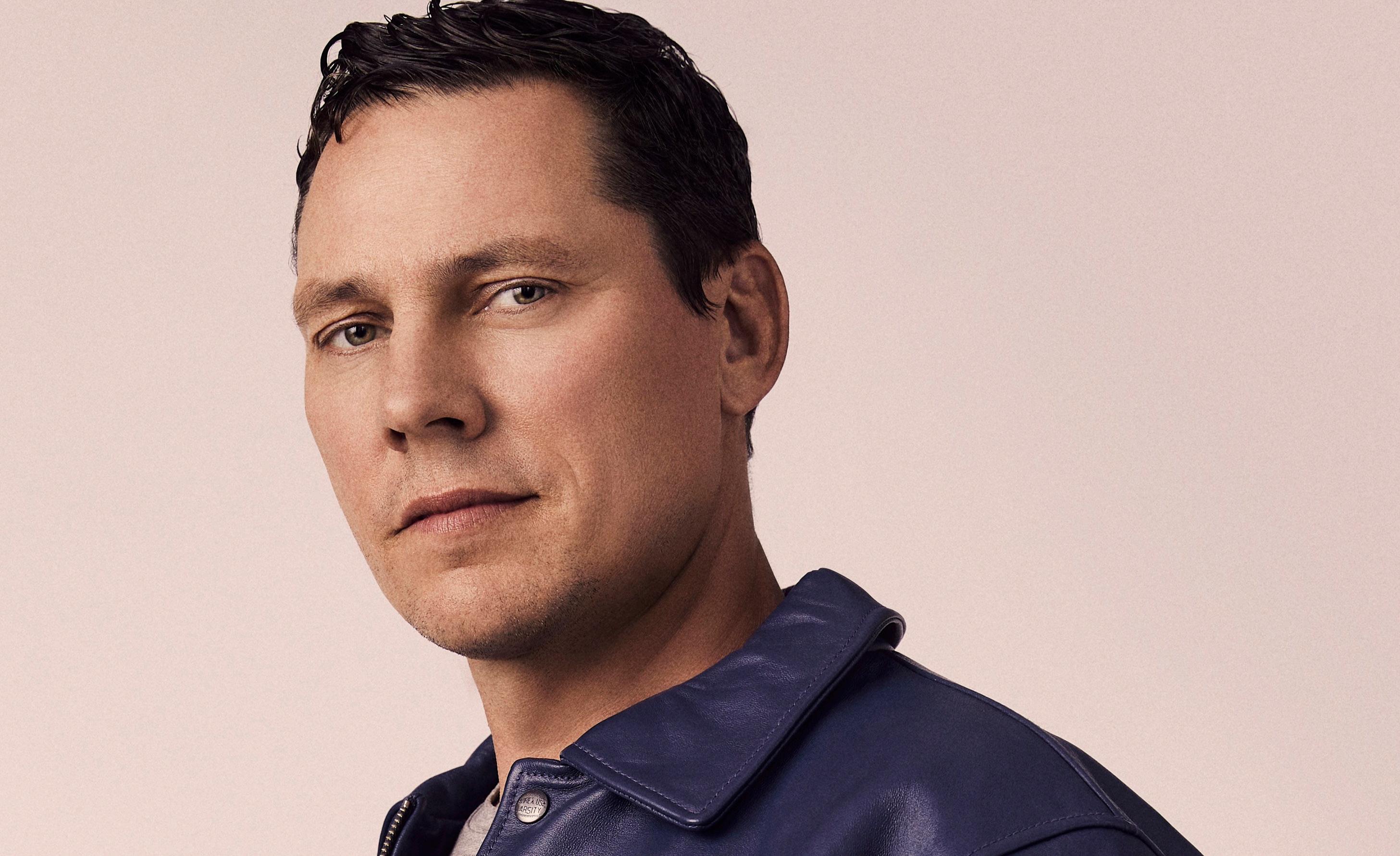
With so much music out there, how do you and your team sift through everything to hone in on what has potential?
At the core, it’s always a gut feeling, but you also need to know where to look. It’s not just about listening to everything that comes in; it’s also about identifying the right corners of the scene. Where’s the trend? Where should I be looking? Where are the movements happening in the market? I don’t think A&Rs should just be judging records – it’s also about fuelling marketing, spotting trends, and understanding the direction the market is heading. You have to be quick, stay alert, and be there early. Be ready to embrace new scenes, new artists, and new DJs. I think that’s super important.
When you started, artist discovery often meant combing through demos in the office. Today, platforms like TikTok are creating breakout moments overnight. How has this changed your A&R process?
The challenge with TikTok is that a lot of tracks blow up on the platform, and either the track or the artist becomes really big. But then, when the next record comes out, no one pays attention. What we’re all trying to do is not just chase data or find individual tracks. What we focus on is finding artists. Once we’ve identified a track with potential, the aim is to build an artist around it. Artist development is incredibly important, and it’s something we’ve always done at Spinnin’. That’s also one of the great strengths of Warner Music as a whole: developing artists. It’s not just about having one hit and
saying, “Great, that was successful.” It’s about asking, “What’s next?” How do we turn that artist into the next big superstar? How do we do that as a team? How do we support them with the right music and guide them in the right direction? I think that’s our unique selling point. CYRIL is a great example. Last year, we discovered him with Stumblin’ In. He had two huge records. But the real challenge is proving to the world that we can develop artists for the long term, that it’s not just about one hit, but about building a sustainable career.
Tell us more about how Shazam [which, since this interview, has launched its own daily viral charts] factors into the whole process.
Shazam is super important for promotion. The great thing is, most of the time it starts with social media, or sometimes through the radio. And if it connects, then Shazam reflects that. It’s like, “Okay, people are genuinely interested.” You can’t manipulate it, it’s just real. It shows that the audience likes the track and there’s genuine interest. So Shazam is very, very important. It’s proper, real data – a true indicator of what people are responding to. It’s also a key signal for radio. If they see that kind of reaction, it becomes an important part of their decision-making too.
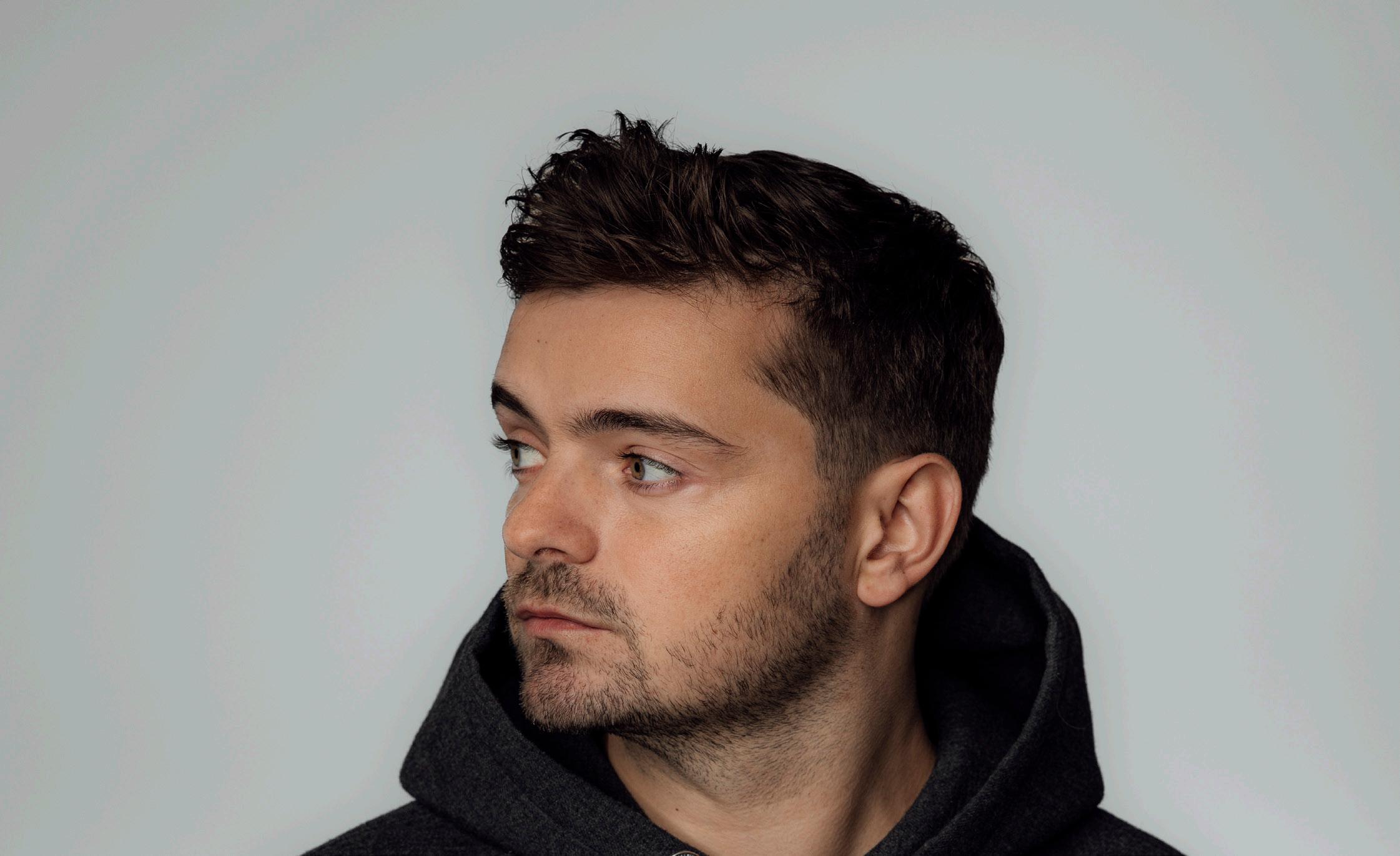
Artist relationships seem to be a huge part of your A&R philosophy. How do you approach building that trust and creative dialogue, from a new demo to a global release?
I think it’s about being honest, not selling bullshit, and being straightforward. That’s always been our strength at Spinnin’. We don’t bullshit people. We have experience from working as a record company, and we also respect the knowledge that DJs and artists bring. Bringing that together with mutual respect, that’s the formula. We always keep our feet on the ground, all of us together. We don’t make promises like, “I’m going to make you the biggest superstar.” Instead, we say, “We’re going to start the process. We see your talent, and we’ll climb the ladder step by step.”
Spinnin’ has played such a pivotal role in bringing dance music from a niche club scene into global mainstream charts. How do you see Spinnin’s role in shaping the current generation of dance music, and what excites you about where it’s heading?
It’s changing all the time. I think it’s much more localized these days, so you need to adapt your strategy accordingly. What works in the UK doesn’t necessarily work in mainland Europe, and the US has a completely different kind of dance scene. You have to understand all of that and tailor your approach to different markets with different strategies. I think that’s both a challenge and what makes it fun. Data-driven marketing and data-driven A&R are crucial, but the real challenge is bringing it all together to
develop a global hit. Also, going back to social media, with all the algorithms, they tend to create local trends because they pick up on what’s working in each specific market. That’s why there’s so much diversity in genres now, which makes it both interesting and challenging.
AI has been causing concern for the music industry lately, with creators concerned that AI firms are being allowed to steal music to train their models without paying music creators or even seeking their permission. What are your thoughts on this with regard to Spinnin’ artists?
There’s a positive side to it. Technology is always there. I think as soon as you start thinking, “I’m afraid of it, I hate it, I wish it would go away,” and you resist it, that’s when it becomes a problem. You need to embrace it. It’s something new, it’s here to stay, and you can’t push it back. It was the same back in the day with downloads. Everyone thought, “This is going to ruin everything.” But no, it was just something new, and it stayed. So find new opportunities and use them in a positive way. That’s how I see it. The world is constantly changing, and it will never stay the same. If you start resisting or thinking, “I can’t handle the change,” then you’re only creating a bigger problem for yourself. Embrace the technology; it will always be there. Of course, there need to be regulations and new laws to protect certain things, but there are also plenty of upsides.
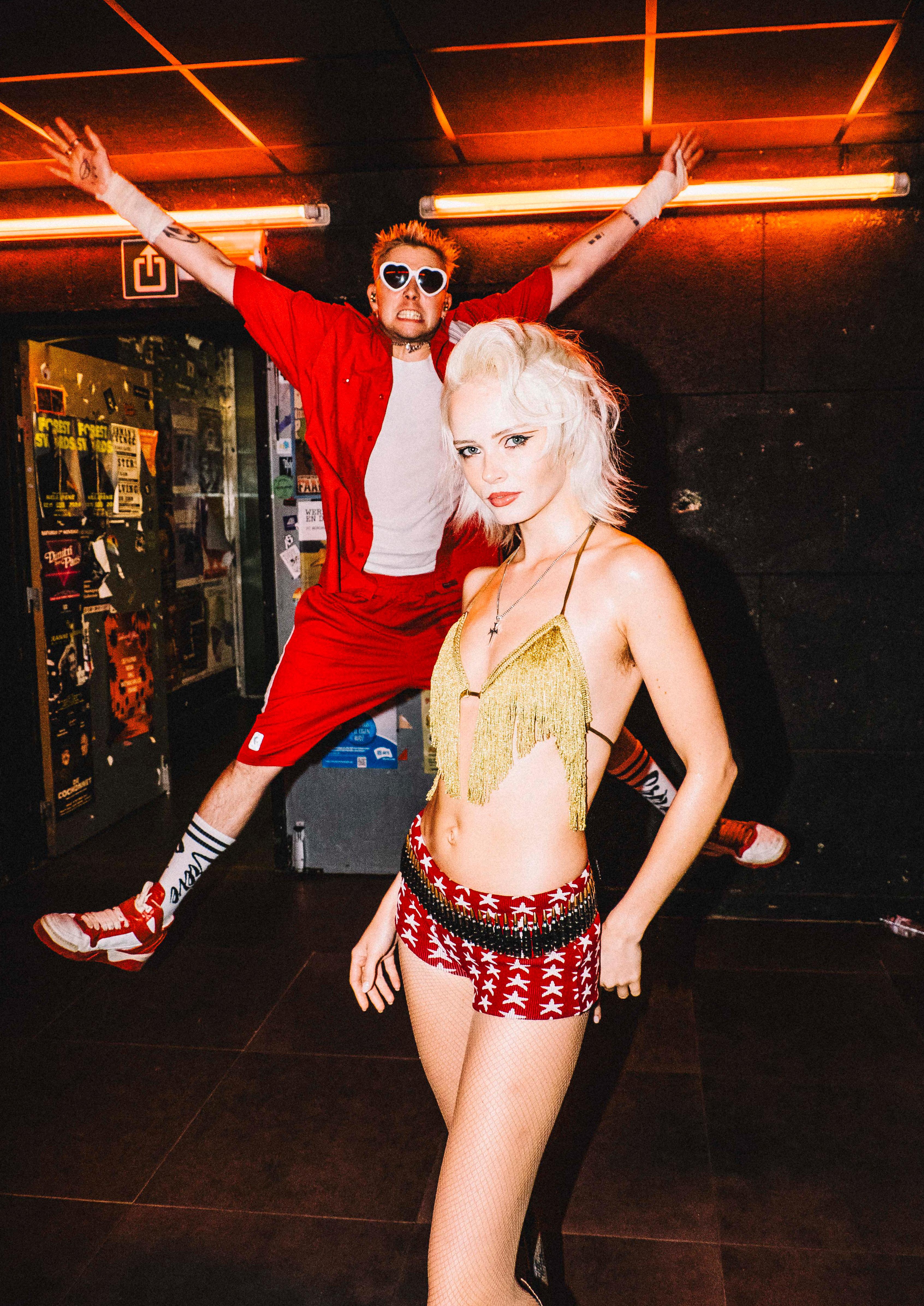
If you attend a Wargasm show, you may find yourself dashing to the toilet mid-set. This is the stark warning issued by Wargasm’s Sam Matlock, who promises that the bass will be as powerful as per his dream specifications. Joined by former model Milkie Way, they are a duo sticking nu-metal, hardcore, electronic, and several more genres in a blender with very high wattage. Following their 2023 debut album that brought in their hero Fred Durst for a guest spot and garnering award nominations, they give Headliner the lowdown about cutting ties with Universal to go independent, and new singles Vigilantes and Small World Syndrome.
ADAM
Matlock, who is the son of Sex Pistols bassist Glen Matlock, was playing in his former band Dead! when he met Way when she was hired to film the band. Born Rachel Hastings in County Antrim, Northern Ireland, she had dabbled in modelling, with jobs alongside Cara Delevingne and shoots in
Tokyo. Way had embedded herself in the UK’s heavy music scene with her Girl in the Pit project, a photography project she had built by going headfirst into mosh pits with disposable cameras.
Following the demise of Dead!, Matlock contacted Way to ask if
she played any instruments — she originally taught herself to play bass guitar in response to an exboyfriend who poked fun at her desire to pursue music. She had been a touring bassist for Yungblud at this point, and fitted the bill for Matlock’s vision for Wargasm.
“I didn’t really have any friends when I first moved to London,” Way says, in her Northern Irish-meets-severalyears-in-London accent. “I went to gigs on my own, like five days a week, and I just brought a little disposable camera into the mosh pit, which was my favorite place to be at the time. And word started spreading. Sam heard about it, and he wanted me to come shoot one of their shows.”
On his previous musical life, Matlock says, “It was very traditional rock and roll, no click tracks, no backing tracks. I’m not sure how much of it was really me, because Wargasm is much more chaotic and outside the box.” “I loved your old band,” Way says. “A lot of people did, but you didn’t have to tour with them,” he replies.
When Matlock is asked if the idea for Wargasm was inspired by Way herself, to which she replies, “Was I your muse, is what he’s asking?” – he says, “There’s always a bunch of different ideas floating around in my head. And when I met Milkie, the potential to make one of these ideas into a real, tangible thing became an option.
“I was just working in pubs and stuff after my old band decided to part ways, feeling a bit aimless and trying to work out whether I wanted to go into a career in music management.
“It was a transitional period for the UK music scene. TikTok was starting to be a thing. And no one had really accepted how disposable everything was becoming. There wasn’t much fun in music. Everyone was trying to be serious, but not serious enough to be serious. So the modus of Wargasm was, ‘How can we make shit exciting again?’. Bands like Limp Bizkit, Pitchshifter, The Prodigy, they’re real, but they’re fucking fun.”
Wargasm released their debut album, Venom, in late 2023, following
the EXPLICIT: The MiXXXtape the year before. Their mixtape hit No. 19 on the UK Rock & Metal Albums Chart, while Venom further solidified their place within the UK’s heavy music scene. It’s a blistering record that barely stops to take a breath.
The three-track run of Ride The Thunder, Do It So Good, and Bang Ya Head is particularly riotous and showcases the way the pair expertly blends guitars and Prodigy-esque dance music elements. The last song of those three brought in Fred Durst, a special moment for the pair who bonded over a love of Limp Bizkit. Durst’s vocal performance is particularly reminiscent of the band’s signature track Break Stuff, a hallmark of early ‘00s nu metal.
“I call that manifestation,” Way says of getting to work with Durst. “I have a video of myself when I first listened to the stems he sent over. I am proud of that album.
“I really don’t tire of playing the songs on that record live, which I think is a good indicator of where a record sits with you in life. If you get sick of it, then what’s the point?”
Besides a few singles that followed the album, including 70% Dead, which features Slipknot’s Corey Taylor, Venom was Wargasm’s last work with Slowplay and Republic Records –both divisions of Universal Music. If it isn’t already abundantly clear, Way and Matlock don’t particularly enjoy being directed creatively and told what to do. Wargasm is now a fully independent outfit, and they seem to have chosen the perfect time in their career to do so. They had always used their own label, Angry Songs For Sad People, and then used Universal to distribute it, but their own label now holds all the cards.
“We were always releasing the songs through our label,” Matlock says.
“There’s this big myth that Wargasm is some manufactured industry plant. I mean, if I was gonna manufacture a band, I wouldn’t call it fucking Wargasm. That’s a very dumb way to make money.
“I like the power that it gives an artist. I like that you can just be like, ‘We want to drop something. So we will. Or no, we don’t want to drop something. So we won’t.’ With labels, it’s all rigid structures and timelines.”
For Ways’ first and possibly last major label experience, she says, “I would like to say that everyone tried their best, but I don’t think they did. There was a lot of red tape. We were being told, ‘You can’t do this because of this. You need to push this more.’ The catch-22 is that we have a vision. And you know what is great for executing all of our visions and our creative outlets? A little bit of cash, and that is what a label can provide. Apart from that, I don’t think it’s worth it.”
Matlock adds, “Can I just sum up what it’s like to work with a major label? ‘You need to do more TikToks. By the way, we’ve taken the entire Universal discography of TikTok.’ That’s it. That’s the genius of major labels in the 2020s.”
Wargasm marked their 2025 return with Vigilantes, surely the most fitting title for two independent musicians who’ve cut ties with major labels and have no qualms whatsoever about speaking their minds.
The song’s chaotic, black and white music video is reminiscent of Firestarter by their heroes The Prodigy, and it mixes things up by having Way perform the first verse herself, instead of the aggressive back and forth between the two we have come to expect.

“Wargasm is chaotic and outside the box.”

“It was a slight departure from the conversation style we usually do,” Way agrees. “I think we just got a little bit sick of talking to each other. We needed a break. We’ve been listening to a lot of Fatboy Slim, so that’s a little bit of the inspiration of where that came from. And also Brazilian Phonk music [a Brazilian subgenre of hip-hop and trap].”
They followed this up with their most recent single, Small World Syndrome. It’s one of the most exciting songs they’ve put out thus far, with Way again taking the first verse over a starkly minimalist and atonal beat as she raps: “Stop and follow me / I wanna get it started, started / Free lobotomies.”
And the line, “Throw it down like ‘06 Fergie,” appears to be a swipe at radio-friendly music, social media, and insipid music and culture in general.
Wargasm recently announced one of their biggest headline shows yet, at the cutting-edge venue Outernet in Central London, on the 28th September. For Matlock, however, this concert represents something even more significant than the average headline performance.
“Hopefully, we’ll know whether it’s album time by then. It’ll reveal itself shortly. We’re just gonna keep writing ‘til then. But that show for us is the complete fucking reset.
I’ve enjoyed playing the shows. I’m happy that people enjoy seeing us live. But this can be fucking better, this can be god-tier shit. That’s why we booked this show –to give us a line in the sand, and when we cross that line, all hell’s gonna break loose.”
“And as soon as we booked it, I knew I wanted to make it a phone-free show,” Way adds. “So many people have been complaining about phones at shows. I was at that Ghost show where they took everyone’s phones, and I had a wonderful time. So for this show, you’ll be given a little sticker to cover up the camera on your phone. And if I see anyone breaking my rule, I’m coming after you!”
And with Outernet having one of the best audio and visual technology capacities in the country, Matlock signs off the interview with a public health warning for the gig:
“Audio and visual assault. Don’t eat too many carbs before you get there, it might be a bit of a workout. And the bass might make you want to shit yourself.”
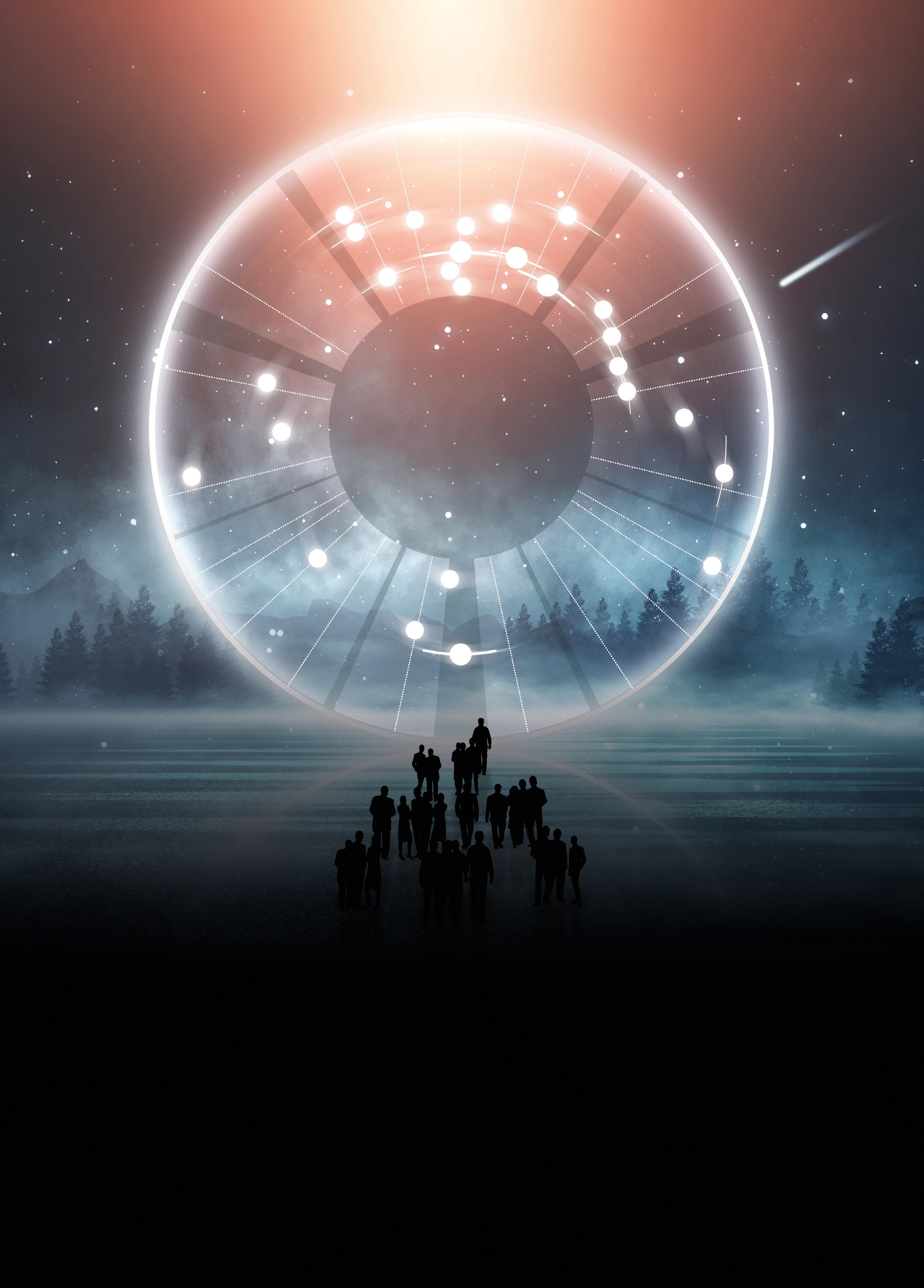

A distinguished technical engineer at Japan’s renowned King Sekiguchidai Studio, Ayato Kurashima broke into Tokyo’s audio engineering scene as his fascination with sound and audio equipment grew. After a life-changing goosebumps moment hearing professional studio-level sound for the first time, he knew working in audio was his destiny. His work is a challenging and fulfilling mixture of working with vintage analog consoles and microphones while integrating modern digital studio technology. He’s even known to work with orchestras from time to time. Kurashima talks to Headliner about his career so far and how his extensive use of Merging Technologies gear makes the magic happen.
What are some of your early memories of becoming interested in music, and then the technical side of music and audio?
I’ve always loved machines since I was a kid, and I would often take apart analog clocks and play with them, and I became interested in what audio equipment I needed to amplify sound signals.
Can you remember the first time you visited a studio, and was that a pivotal moment for you?
Yes — I remember the first studio and the quality of speakers they had. The first time I heard the sound through those speakers, I got goosebumps!
Did you follow a similar route into the industry as other Japanese audio engineers, or was your journey more organic?
I work in music as a technical engineer. In Japan, that kind of position is pretty rare. So I applied for a job as a recording engineer and said I wanted to do technical work. It was smooth sailing from there.
How did you come to work with King Records in particular?
I work at a studio called King Sekiguchidai Studio, which started out as a King Records studio, and that’s how I got to work with King Records.
Were you a fan of their work, and was it a dream come true for you to get to work with them?
King Records has been producing a lot of great audio stuff for a long time, such as the Super Analog series. I had a dream of delivering music to consumers with better sound, so it was a dream come true.
What does a typical work week look like for you?
My daily job involves managing, maintaining, and servicing recording equipment, like SSL and AMS Neve analog mixing consoles, vintage Telefunken (Neumann) microphones, and analog tape recorders.
What are you working on currently?
I am currently working on creating high-quality analog media using Studer and Telefunken tape recorders and Neumann vinyl cutting laces.
You sometimes get to work on orchestral recordings — this must be such a pleasure, while of course presenting a big challenge also?
It is honestly a lot of work. But it is very helpful to use Merging’s Pyramix and Horus when recording in large concert halls, as it allows you to simplify your equipment a lot and to record in highquality with digital transmission.
You work with a broad range of Merging Technologies products — how did you come to work with their range so closely, and what was the company’s first product you used?
I was thinking about how to record easily with high quality, and with the help of my distributor, I ended up using it. It all started with a Pyramix system with Horus.
For recording in DSD and DXD formats, you like to use a MassCore audio engine with a Horus audio interface — could you talk us through why this combination is so helpful for that particular use case?
Firstly, it supports the same D-sub25 input and output as the Avid ProTools system that we use in our recording studio, so it was easy to switch between them. In addition, when recording an orchestra in a concert hall, you can easily use the Horus as a digital remote microphone amplifier by placing it near the stage and using its mic inputs.
You also favor this recording combination when working with an orchestra. Why do you find it so useful for capturing all the power, color, and nuances of the orchestra?
Orchestras have a very deep history. In the past, it was common to go to a concert hall and listen to the sound of live instruments in real time. However, when listening to recordings at home today, you can capture a wider frequency range than PCM, and you can record with an impression closer to the live instruments.
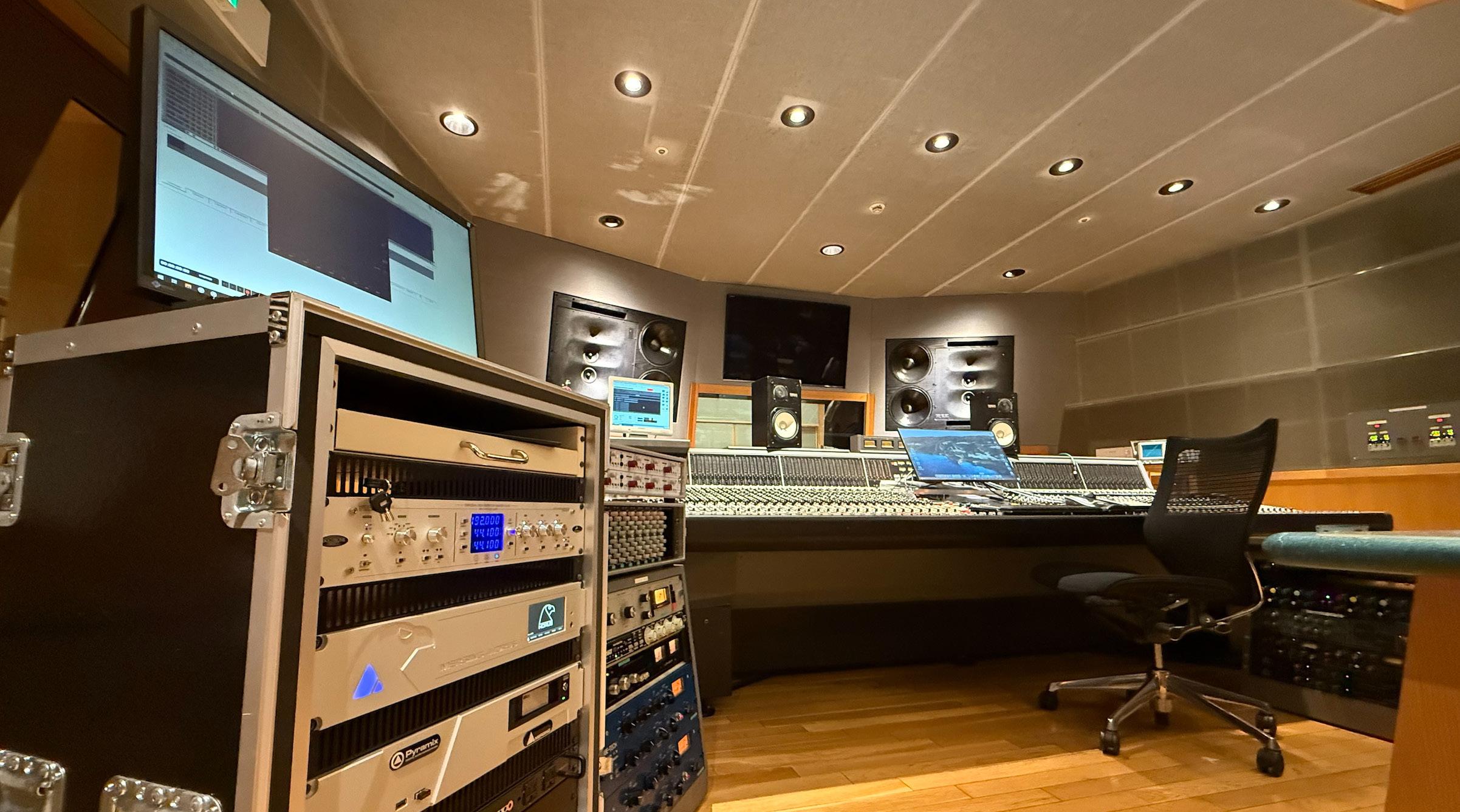
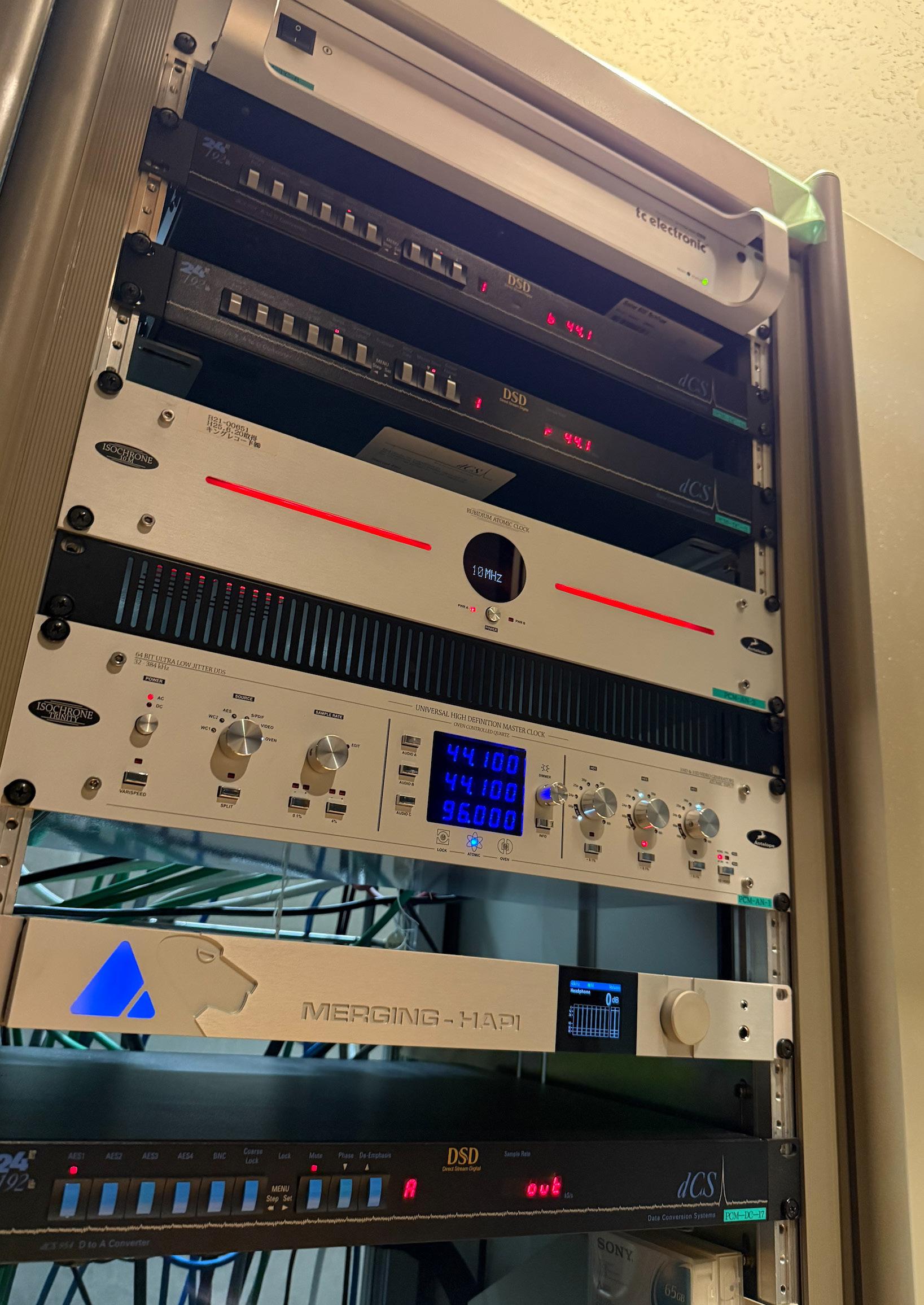
“WE’VE BEEN USING PYRAMIX FOR ALMOST 10 YEARS. COMPARED TO OTHER DAWS, THE SOFTWARE SUPPORTS DSD, DXD, AND PCM, IS VERY VERSATILE, AND CAN MEET THE VARIOUS NEEDS OF MANY CUSTOMERS. IT’S GREAT.”
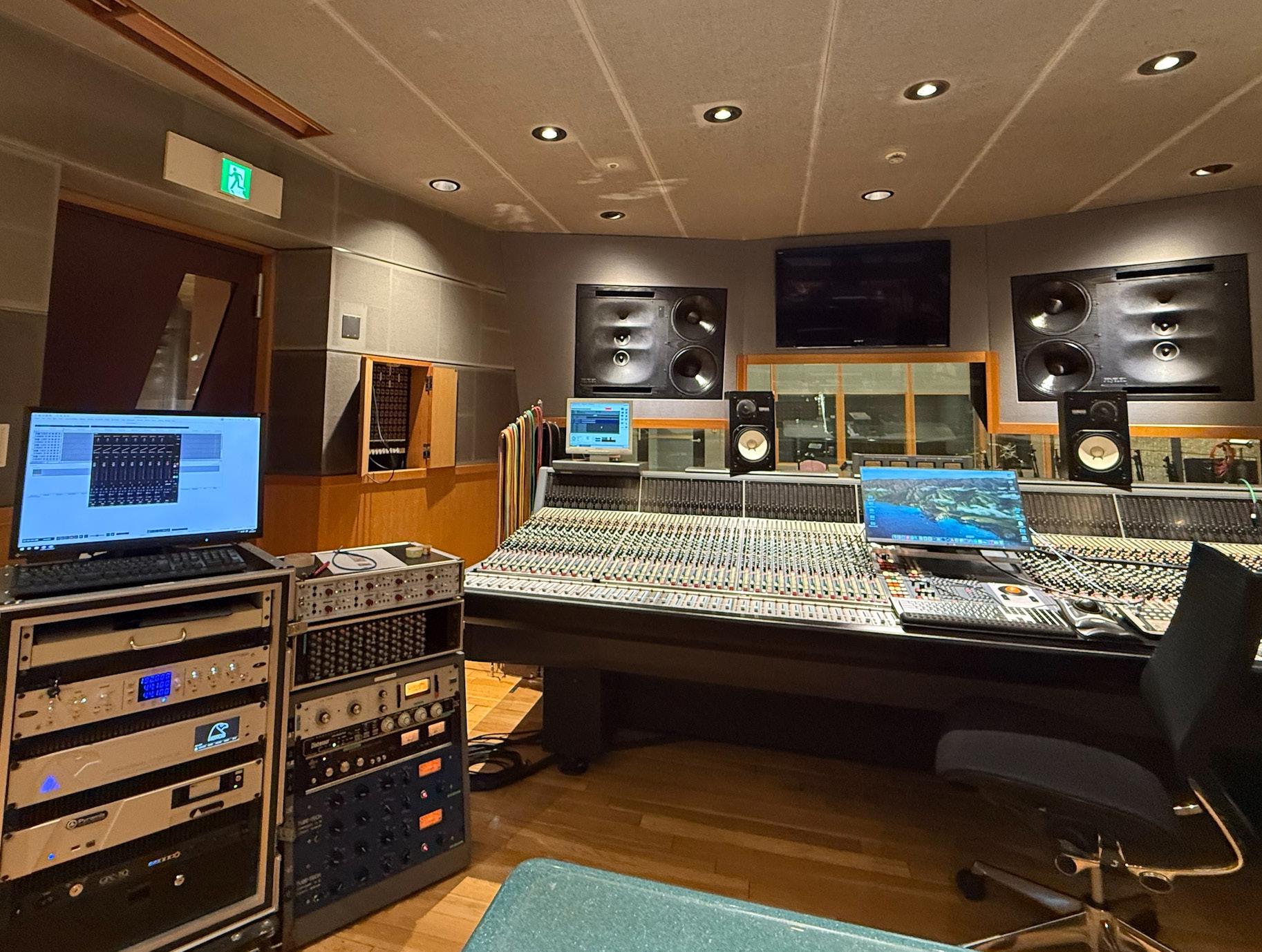
On the mastering side of your work, you like to work with Merging’s Hapi modular audio interface. Why do you prefer this machine for mastering in particular?
First of all, in the past, DA converters made by dCS and GML were commonly used. But they are not easy to obtain now. So with Hapi, you can use high-quality DA and AD conversion that can be used standalone, and you can even set detailed input and output settings with a single LAN cable, which is very convenient. Also, the main premise was that the sound was good.
What are some of the ways it makes the mastering process much smoother for you?
As I mentioned, I think it is a great advantage to be able to easily set up input and output using LAN like Hapi and Horus.
You also often have to master recordings that are on old analog tape machines, which must be a brilliant challenge for an audio engineer! Do you work with the Hapi for these recordings also?
The sound coming out of analogue tape machines is very delicate. However, I think that music these days is often played on computers and smartphones. In order to reproduce the delicate sound on those devices, analog sounds have to be digitally processed, which is a very difficult job. However, using Hapi makes it easy to import, which is very helpful.
That’s wonderful — so how many Hapi interfaces do you have in total?
Our studio has four mastering rooms, and we use each one in each room.
Is Merging’s Pyramix your DAW of choice? If so, how long have you been using it, and how do you find it compares to some of the other DAWs out there?
In my studio, we mainly use three DAWs: ProTools, SADiE, and Pyramix. It’s difficult to compare them because they each have different uses, but we use Pyramix for recording and mastering high-resolution sound sources. We’ve been using Pyramix for almost 10 years. Compared to other DAWs, the software supports DSD, DXD, and PCM, is very versatile, and can meet the various needs of many customers. It’s great.
The best sounding live console was originally designed for broadcast.


Hearing is believing – sign up and find out for yourself.
A NOSF
Heavy metal giants Trivium are known for their powerful, intricate, and meticulously crafted sound. Now, with the completion of their cuttingedge studio, THE HANGAR, with its arsenal of guitar cabinets loaded with Celestion Vintage 30, G12M-65 and G12H-75 Creamback, G12M Greenback, and G12H Anniversary speakers, the band is set to embark on a new chapter of sonic exploration. Headliner discovers how THE HANGAR provides a dedicated space to push the band’s creative boundaries.
Designed by renowned studio architect, Roger D’Arcy and built from the ground up to meet stringent acoustic specifications, THE HANGAR is more than just a recording studio; it’s a fully equipped creative hub where the band can write, rehearse, experiment, and record whenever inspiration strikes.
“We wanted a space where we could be free to create on our terms and we wanted it in Orlando, so we wouldn’t need to travel to record,” says guitarist Corey Beaulieu. Central to this sonic exploration is an expansive collection of Celestion guitar speakers, meticulously curated and integrated into THE HANGAR’s studio arsenal.
“We’ve got Vintage 30s, G12M-65 and G12H-75 Creambacks, G12M
Greenbacks, G12H Anniversaries, plus all the older models we’ve accumulated over the years,” adds frontman and guitarist, Matt Heafy.
The studio boasts a diverse array of Celestion-loaded cabinets from brands like Mesa Boogie, Marshall, and Peavey EVH. This collection allows Trivium to explore the nuanced sonic personalities of each speaker and cabinet combination, ensuring they have the perfect tonal tools at their disposal.
“You’ll get different sounds from cab to cab, even if they have the same Celestion speaker,” explains Beaulieu. “So, it’s all about finding which combination works best for what we’re doing in any particular session.”
To facilitate this experimentation, THE HANGAR features a dedicated isolation booth specifically designed for speaker testing. In this sonic laboratory, Heafy and Beaulieu, along with producer and engineer Mark Lewis, can swap speakers in and out of cabinets, meticulously analyzing their characteristics and experimenting with microphone placement to capture the subtle nuances of each speaker.
“Mark has been doing surgery on all the cabs, pulling out stock speakers and doing things like placing four different Celestion speakers in the same cabinet so we can test everything with our microphone collection in our cabinet isolation booth,” says Heafy.
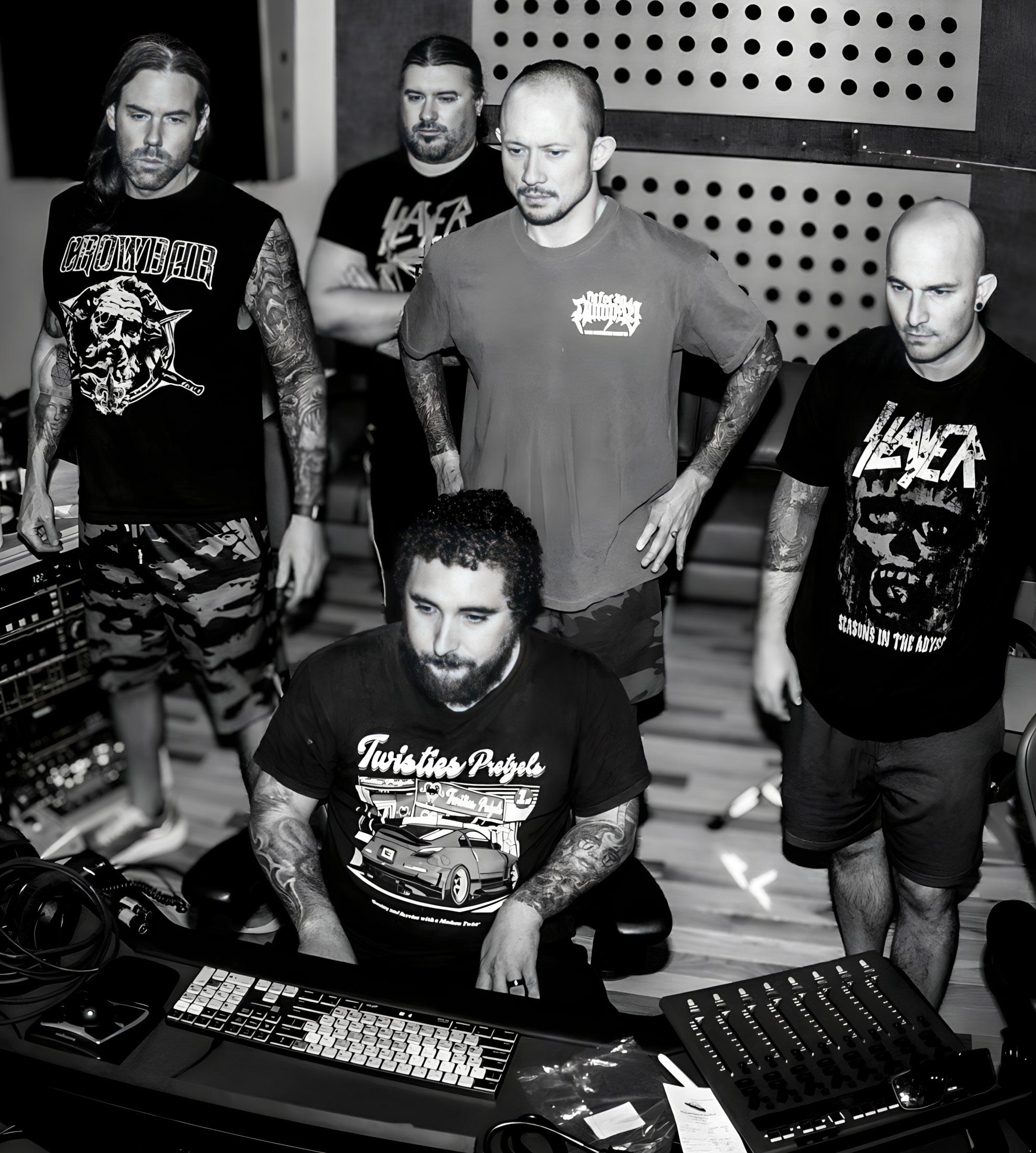
This commitment to experimentation is at the core of Trivium’s sonic philosophy. They understand that every element in the signal chain, from the guitar to the speaker cabinet to the microphone, contributes to the final sound.
“Any little variable in tone can be inspiring,” nods Heafy. “Our mission
right now in THE HANGAR, is to give our amps, cabinets, and speakers the run-through, to know which combinations will bring that extra tonal magic when we begin tracking. That’s what this quest of tone is. This obsession with gear has always been to find something new and inspiring, and you never know where it can lead you.”
Trivium is currently on a tour of the UK, Europe and the US.
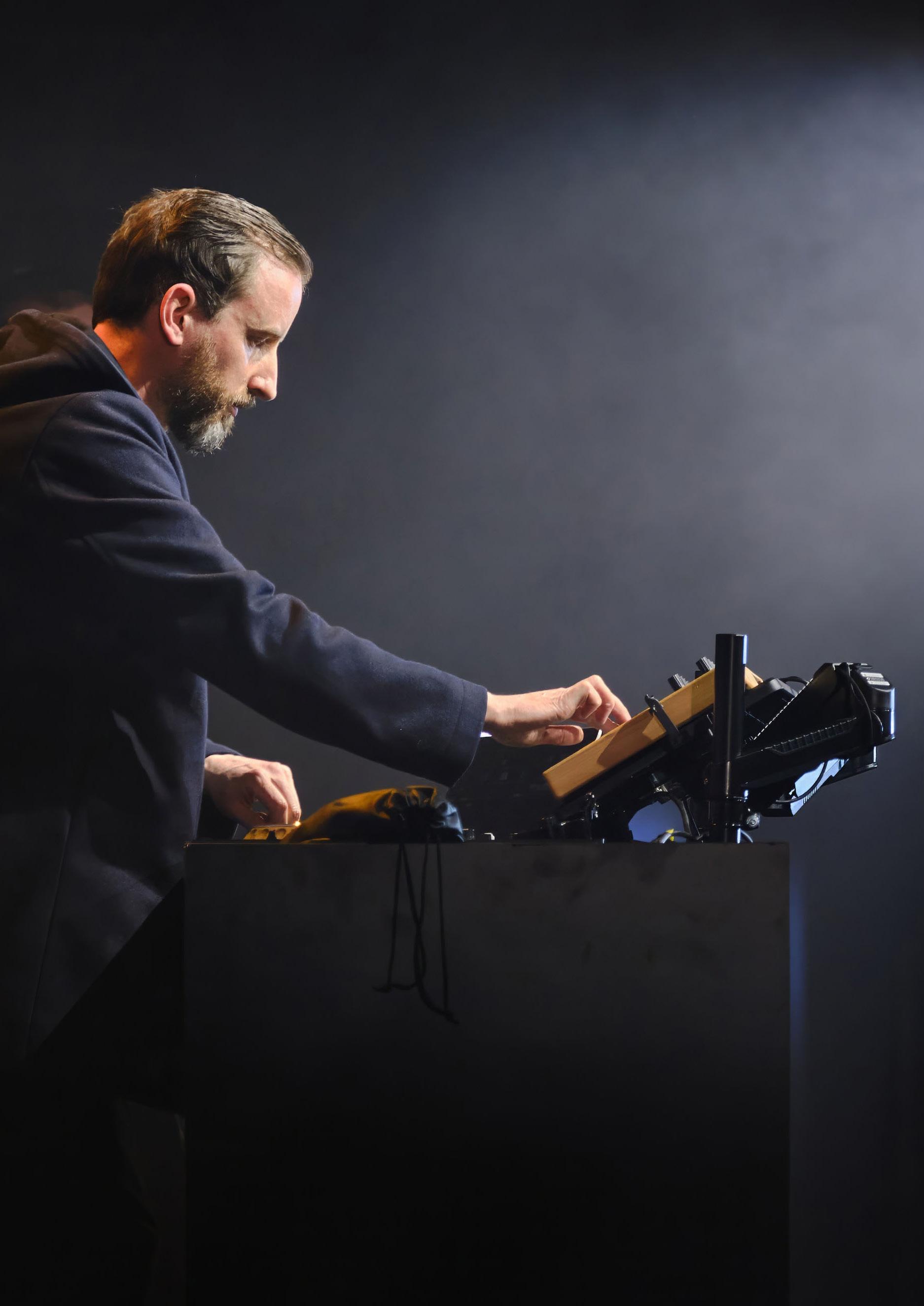
In a bold move set to shake up club culture and redefine the boundaries of live electronic music, L-Acoustics has introduced a game-changing solution that turns standard DJ sets into fully immersive spatial audio experiences. Dubbed L-Acoustics DJ, this new offering isn’t just another tech gimmick; it’s a fully integrated ecosystem that lets DJs move beyond the limitations of stereo sound, and all without overhauling their workflows. Headliner gets fully immersed in the new technology…
For years, spatial audio has been the elusive promise of the future, more common in concept art than club setups. Despite huge advances in lighting and visuals, most venues still run audio through traditional stereo or quad systems. That’s where L-Acoustics saw a gap and filled it. The brand’s new platform, which includes proprietary stem separation and spatial mixing tools, allows DJs
to position and move sound live, in real time, across a three-dimensional soundscape. The best thing? Apparently, the learning curve is so manageable that any DJ can get to grips with it with simple controls.
In this interview, L-Acoustics’ Scott Sugden, director of product management, solutions, and Ryan John, director of product management,
software, dive into how L-Acoustics DJ is a game-changer for DJs of all technical backgrounds, why it’s a natural extension rather than a replacement of current workflows, how venues can integrate the technology, and how it could eventually influence how sound is produced, not just performed.
“THE REAL GAME-CHANGER IS THE SPEED: WE’RE TALKING ABOUT UNDER 19 MILLISECONDS TO PROCESS THE AUDIO, WHICH IS PRACTICALLY IMPERCEPTIBLE FOR MOST DJS PERFORMING LIVE.”
What was the core inspiration behind developing L-Acoustics DJ, and what specific gap in the market does it address?
Scott Sugden: The DJ market presented a unique opportunity: artists who are already manipulating sound in real-time as an instrument, but working within the limitations of stereo configurations. We recognized that spatial audio could transform how audiences physically and emotionally connect with electronic music, yet the technology remained largely inaccessible in club and festival environments. L-Acoustics DJ addresses this gap by making spatial audio intuitive and immediately playable for DJs of all technical backgrounds. Unlike other audio technologies that require complex setup or additional technical teams, our solution works within the DJ’s existing workflow, because in this market, the artist is the operator, and any new technology must be as responsive and intuitive as their turntables or controllers.
How does Source Separate technology work, particularly regarding how it enables live stem separation with such low latency?
Ryan John: Our new, proprietary Source Separate technology runs on a machine learning-powered engine that we call the “DEMIX Engine.” Think
of it as an audio brain, powered by machine learning, that can instantly identify and separate different elements in a track (vocals, drums, bass, etc.) as the music plays. What makes L-Acoustics DJ special is that it works in two ways at once: it analyzes both the frequency spectrum (like looking at an EQ display) and the actual audio waveform simultaneously. This dual approach gives us much better separation quality than if we used just one or the other. The real game-changer is the speed: we’re talking about under 19 milliseconds to process the audio, which is practically imperceptible for most DJs performing live.
For context, that’s faster than most people can press and release the play button. Most other separation tools need to “look ahead” at the audio to work properly, but ours processes everything live, as it happens. To put the quality in perspective, our separation accuracy scores are competitive with studiograde tools, but we’re doing it live.
And once we separate those stems, they feed directly into our spatial audio engine, so you can instantly position vocals stage left, move the drums around the room, or create those immersive effects that get crowds going. Basically, you get
clean, isolated stems with virtually no latency, ready to manipulate however your mix demands.
How does L-Acoustics DJ differ from existing spatial or stem separation tools on the market? What makes it truly groundbreaking?
Ryan John: Our live stem separation is not limited to digital sources only. L-Acoustics DJ can process any stereo source, including vinyl, but additionally, a key differentiator is that we offer true spatial sound, not just stereo expansion.
Our stem separation engine, driven by machine learning, is the only one that feeds directly into a spatial controller and processor, unlocking real-time spatialized stems for an immersive experience no other system can match.
Existing solutions from other brands focus on separation but don’t integrate with spatial audio processing, or offer stem separation, but again, lack the spatial component. What’s truly groundbreaking is our end-to-end solution that combines separation with spatialization in a single, seamless workflow.

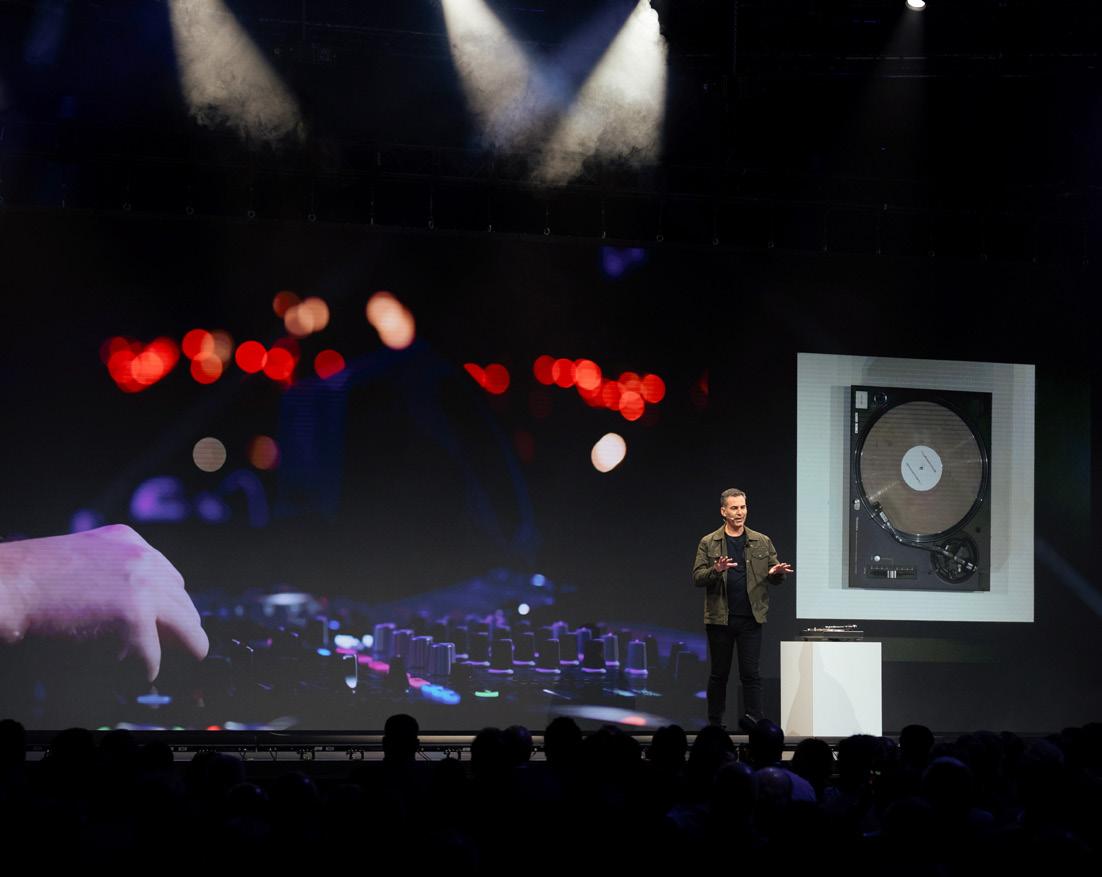
How challenging was it to design a system that transforms stereo content into spatial audio without requiring DJs to change their existing workflows?
Ryan John: This was one of our biggest design challenges. The system integrates effortlessly with both digital and analog DJ setups, requiring no changes to existing gear or techniques. We spent considerable effort ensuring that the technology feels like a natural extension rather than a replacement of current workflows. We developed a system that doesn’t require DJs to learn new skills or change their performance style; it simply expands the sonic canvas they can paint on.
From a DJ’s perspective, what kind of new creative control does L-Acoustics DJ unlock during live performance?
Scott Sugden: DJs can now position beats, basslines, melodies, and vocals throughout the physical space, crafting immersive audio journeys that transform ordinary performances into extraordinary multi-dimensional experiences. The system enables artists to go beyond traditional stereo mixing with real-time spatial audio control, giving them the power to position and move sound elements dynamically while utilizing stem separation powered by machine learning to isolate vocals, drums, and instruments live.
How intuitive is the user interface for DJs who have little or no experience with spatial audio?
Scott Sugden: The interface is designed with remarkable simplicity in mind.
Anyone can jump right in with simple controls; there’s no steep learning curve. As Max Cooper, who performed using L-Acoustics DJ at our Keynote, said, “This is the first tool I’ve used that provides a DJ format solution without any complex set-up or steep learning curve.”
A DJ might start by taking a familiar track and placing the drums behind the audience while keeping the vocals in front, then gradually move the bassline around the room as the energy builds. The system includes features like automatic movement options and snap-to-position capabilities for dynamic performances, and DJs can control the immersive experience, or work with a dedicated spatial audio engineer for maximum creative flexibility.
What infrastructure or installation requirements do venues need to consider to integrate L-Acoustics DJ?
Ryan John: The primary requirement for venues wanting to integrate L-Acoustics DJ is having an L-ISA immersive sound installation in place. This is the foundation needed to support the immersive audio capabilities that L-Acoustics DJ provides. Once the L-ISA system is installed, L-Acoustics DJ is designed to integrate seamlessly into existing DJ workflows. The solution works with whatever tools DJs are already using, whether that’s specific DJ software, hardware controllers, or mixing approaches. We’re literally just taking the same two analog or digital outputs from their tools that would normally feed the PA, and sending those into the L-Acoustics Immersive ecosystem.
This means venues don’t need to worry about compatibility issues or requiring DJs to learn entirely new systems. The only new tool a DJ will see is the controller application running on a tablet displaying the spatialization, and/or a hardware controller that should feel incredibly familiar, featuring pads, faders, and encoders providing immersive control.
Do you foresee this technology influencing how music is produced, not just performed? Could this change how tracks are mixed or mastered in the future?
Scott Sugden: Absolutely. We’re already seeing producers and electronic musicians interested in leveraging L-ISA spatial tools to sculpt sound with precision, enabling new levels of depth and movement in electronic music composition. This technology allows them to create immersive compositions that break free from stereo constraints. The ability to separate and spatialize existing stereo content opens up new possibilities for reimagining catalog music.
Producers might start considering spatial elements during the creative process, knowing that their work can be enhanced in live performance settings.
L-ACOUSTICS.COM

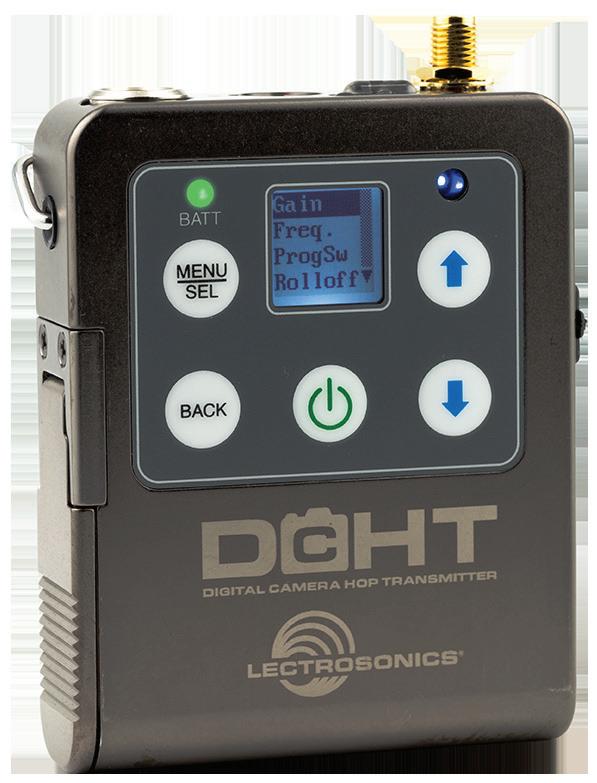
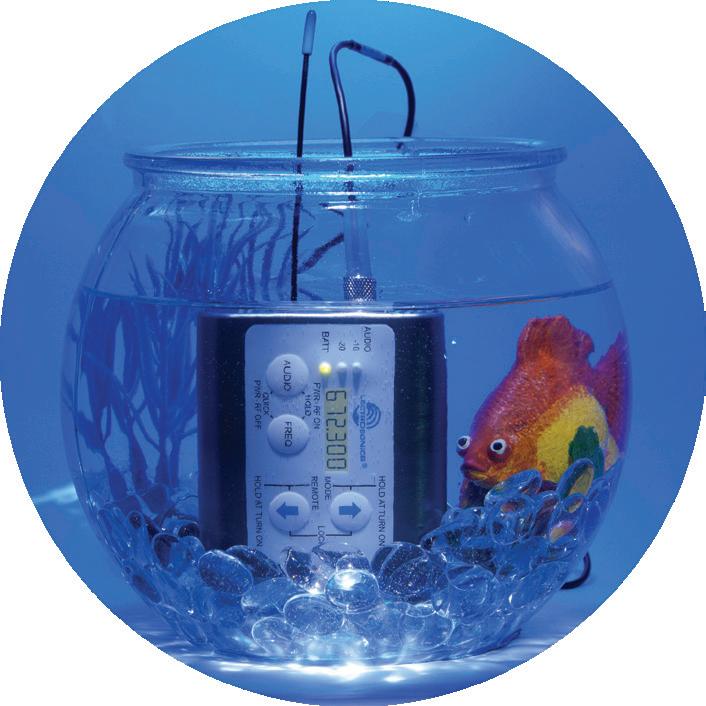


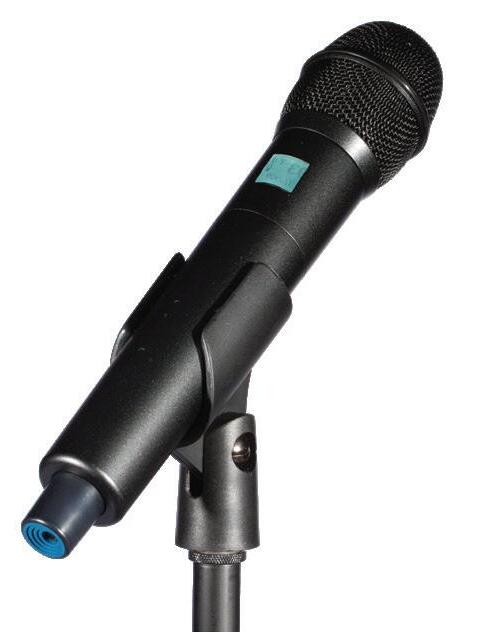

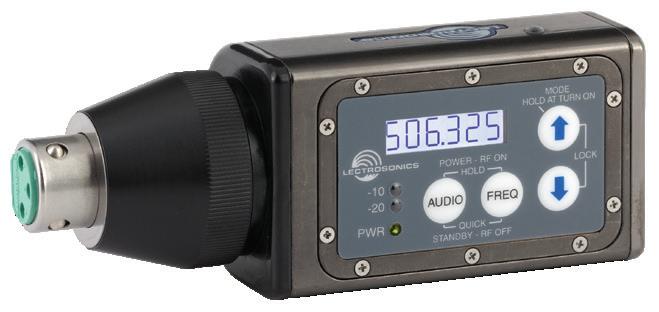
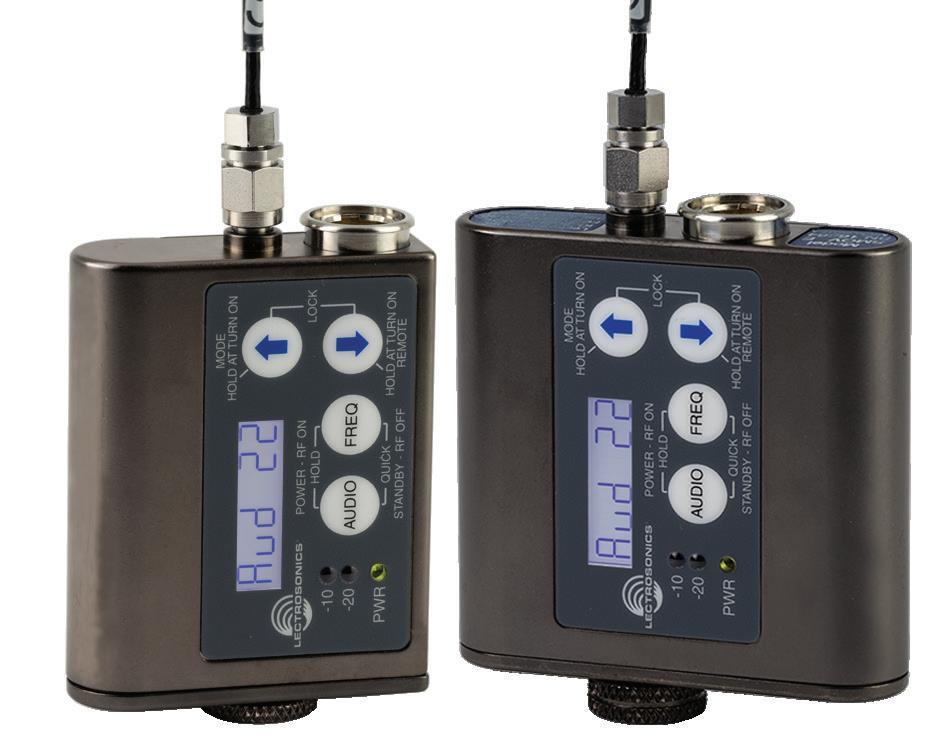
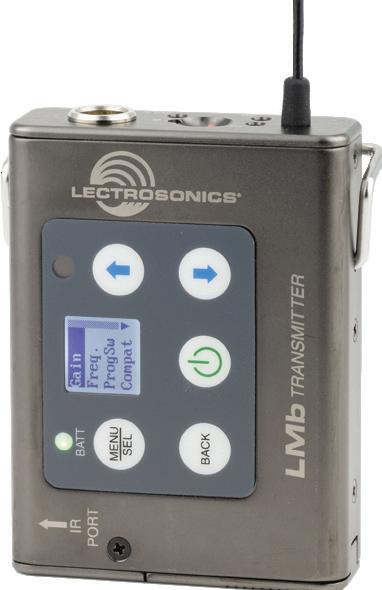
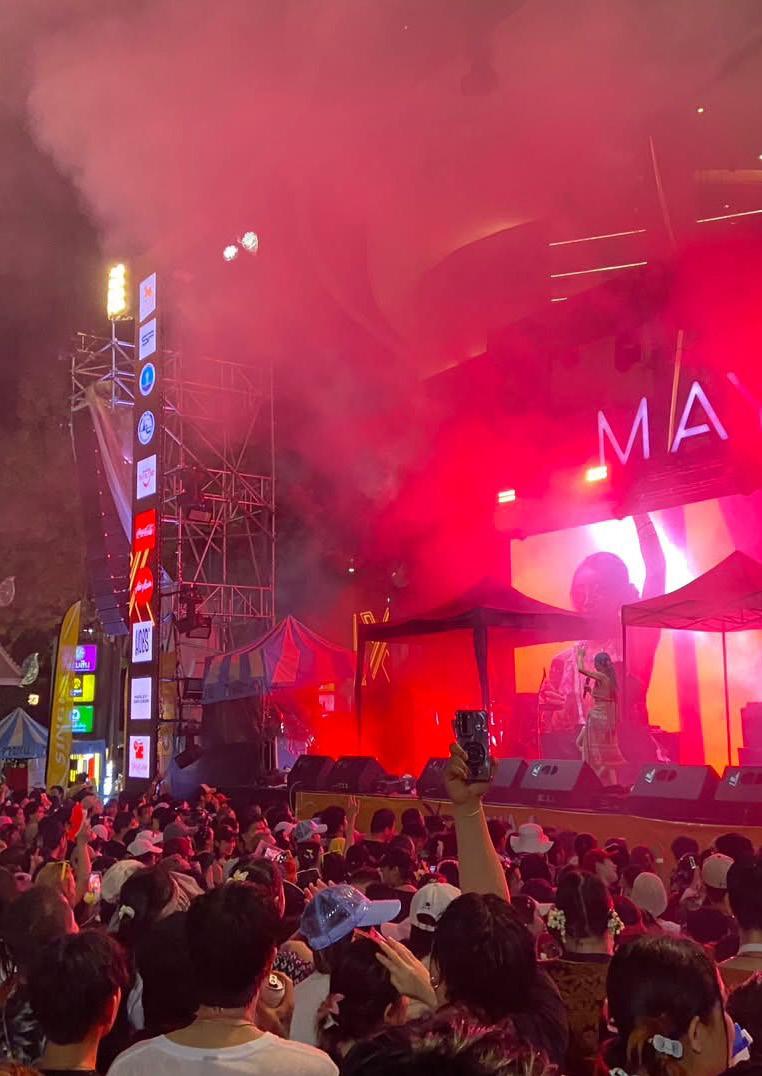
Thailand’s Songkran Festival is more than just a celebration, it’s a national outpouring of joy, tradition, and togetherness. Marking the Thai New Year, this iconic three-day holiday transforms towns and cities into playful battlegrounds of water fights, vibrant parades, and cultural festivities. Streets shut down, hoses come out, and people of all ages take to the roads in a shared moment of renewal, laughter, and unity. Headliner discovers how a CODA Audio system helped the revellers soak up the atmosphere…
Beyond the splashing and soaking lies a deeper cultural story: one of ritual cleansing, traditional beauty contests, and community spirit. From Bangkok’s busy avenues to the epic celebrations outside Chiang Mai’s MAYA shopping centre, Songkran blends centuries-old customs with modern energy, drawing both locals and tourists into one of Southeast Asia’s most unforgettable festivals. This year saw a large gathering outside the MAYA shopping centre, where a large stage hosted a wide range of performances including DJ
sets, live artists, dance, and more.
Handling the audio for the 10,000-strong audience in this open air setting was Bangkok-based Coconut Sound, who supplied a CODA Audio system. A valued customer of CODA’s Thailand distributor Modern Solutions Plus, Coconut Sound has been a CODA Audio user since 2018 and its ViRAY and AiRAY systems are in constant demand across the country.
“WITH THE CITY BUSTLING TO THE SOUND OF MANY EVENTS, THE SYSTEM NEEDED TO DELIVER SUFFICIENT POWER AND COVERAGE TO ENSURE THAT THE CROWD’S ENJOYMENT OF THE ARTISTS WAS NOT COMPROMISED.”
Aimed specifically at medium sized tours and fixed installation, ViRAY compact line array systems have been optimized to deliver the best possible audio quality, fulfilling the exacting needs of today’s global markets and surpass the expectations of both user and listener – making the system ideal for this event.
Meanwhile, CODA’S AiRAY unique package brings together the high output of a large system with the flexibility of a compact system,
creating a new category in large reinforcement systems – perfect to ensure each of the 10,000-strong audience could hear pristine audio. Designed for touring and installation applications, the AiRAY is perfect for arenas, theatres, houses of worship, corporate events, clubs and touring.
For the Chiang Mai event, which featured leading Thai artists J.Jetrin, Retrospect, and The Toys, Coconut Sound deployed a system comprising a main PA of eight AiRAYs and four

ViRAYs per side, with side hangs of six AiRAYs with four ViRAYs per side.
The low end reinforcement consisted of 16 SCP sensor controlled subwoofers with a number of HOPS8 (8” high output point source) units used as front fills.
“With the city bustling to the sound of many events, including a large DJ set-up in close proximity to MAYA, the system needed to deliver sufficient power and coverage to ensure that the crowd’s enjoyment of the artists was not compromised,” explains Coconut Sound’s Wichak Chanmuang, who designed the system. “The system achieved this with ease, leading to high praise from all the front of house engineers and the client. The sound was excellent!”
“With reliable and expert support from Modern Solutions Plus, Coconut Audio covers a wide range of applications with their CODA systems,” adds Paul Ward of CODA Audio. “They are a great example of a company who recognize the versatility and adaptability of our systems and deploy them to maximum advantage at indoor and outdoor events on every scale.”
CODAAUDIO.COM
18-inch / 2400W
For demanding bass applications
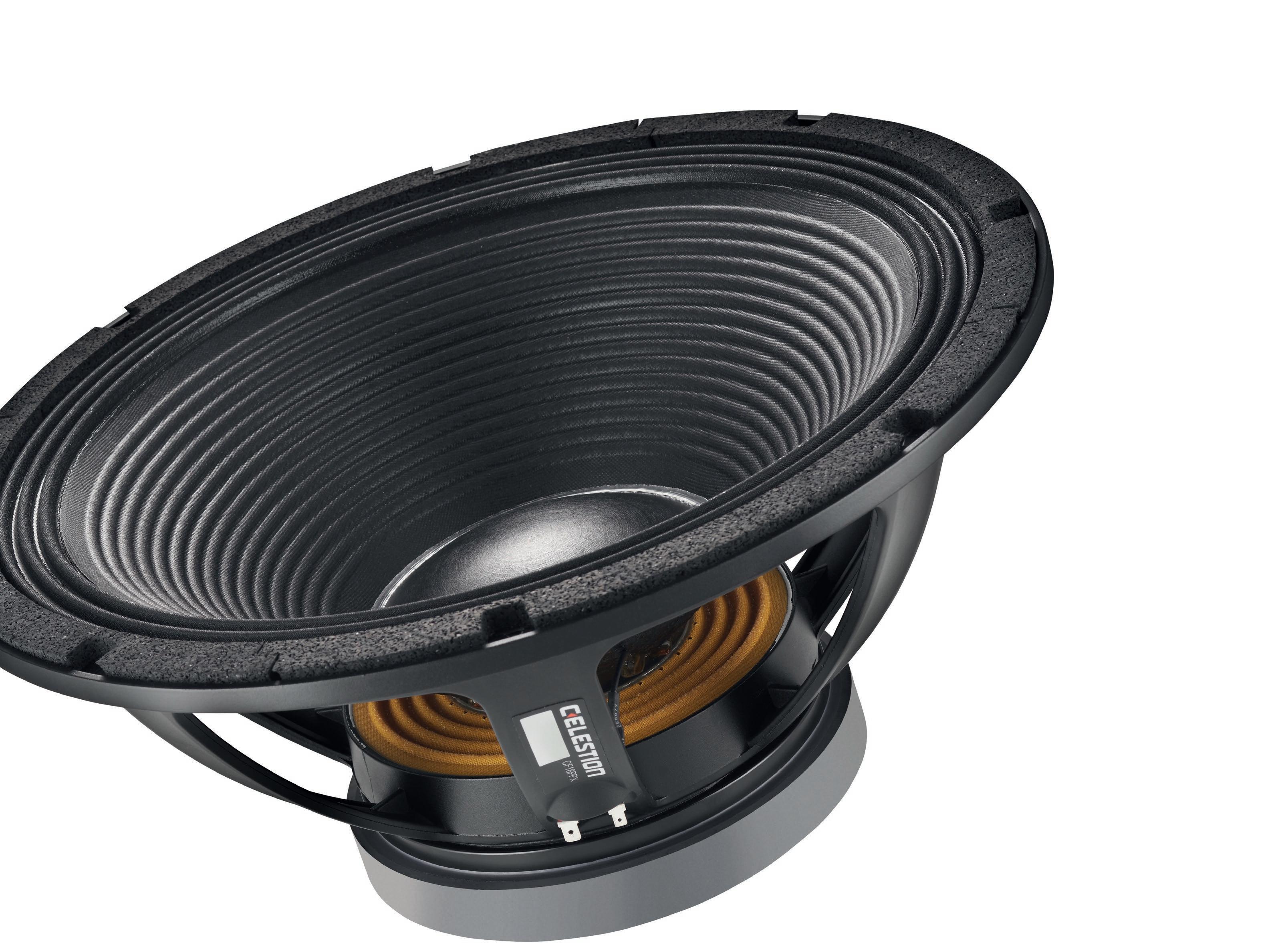
Featuring an advanced cooling system and components with superior thermal stability, PowerProX18 operates with its voice coil consistently at 20°C lower than competing products. The result is ultimate control over power compression, extreme reliability and a relentless high quality performance, even after 100s of hours of use. For more information, contact: engineering@celestion.com
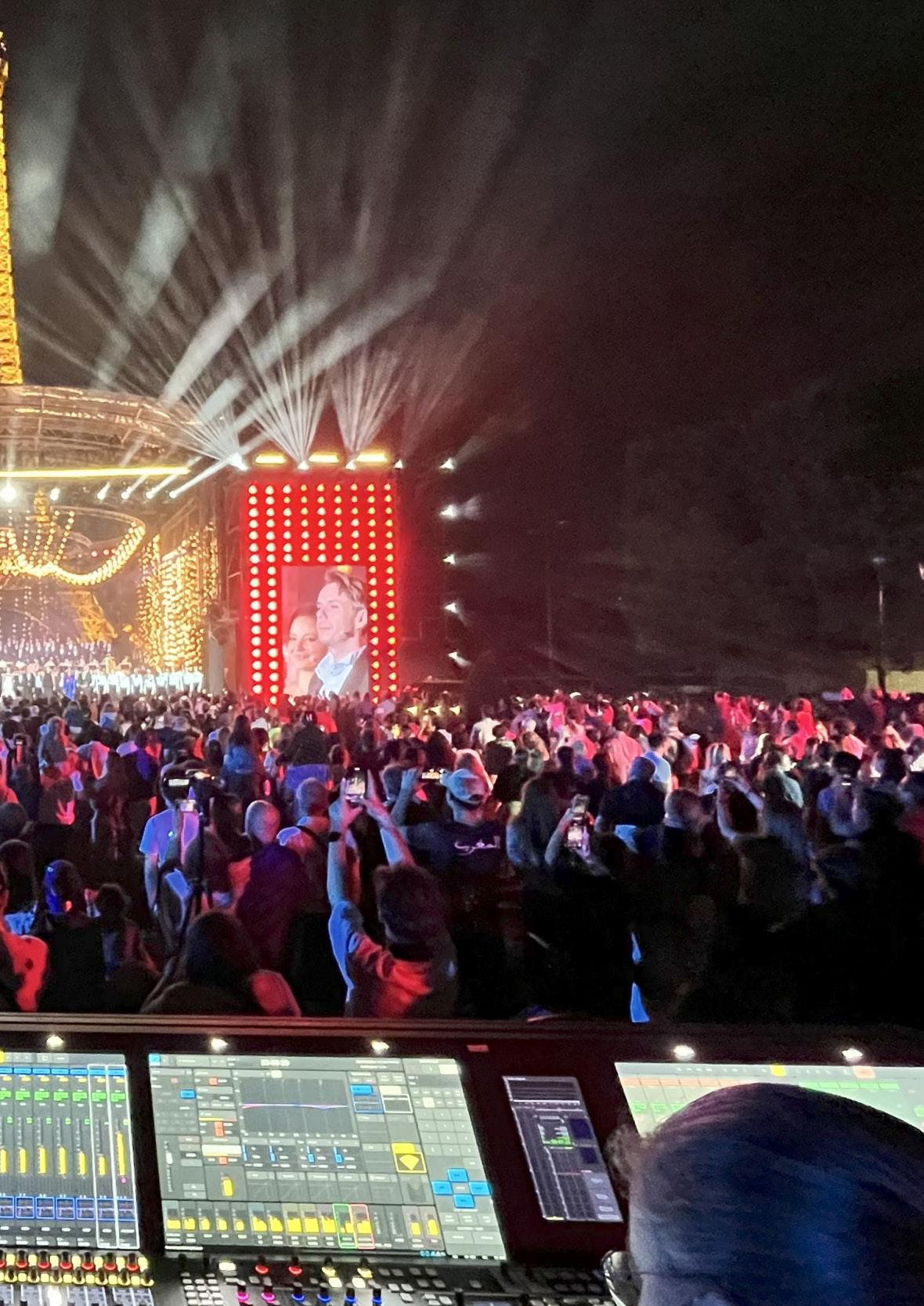
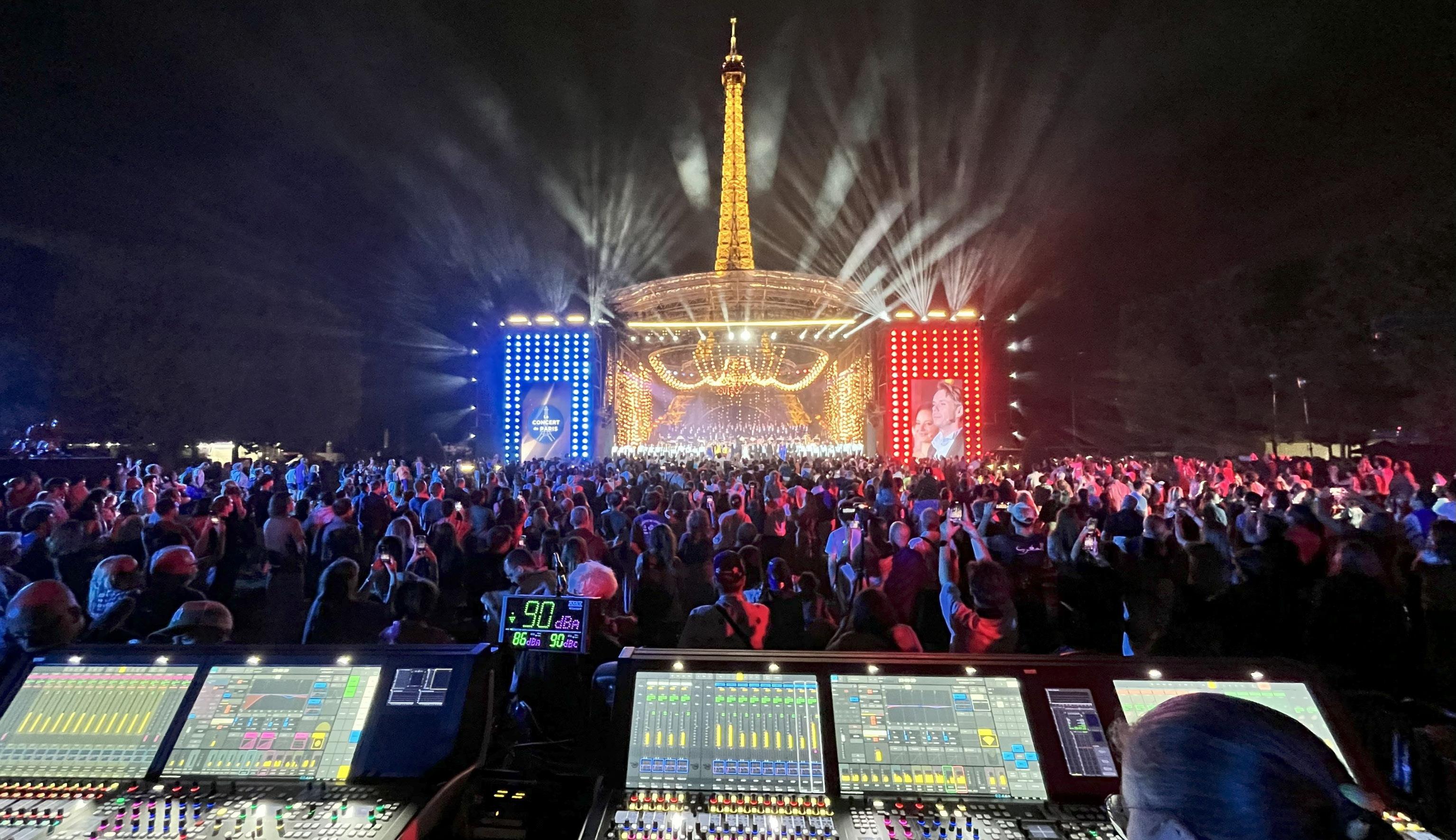
France’s National Day on July 14 is a celebration of unity, pride, and spectacular performances, and at the heart of it all, sound plays a starring role. For the 13th edition of the renowned Concert de Paris, held beneath the iconic Eiffel Tower, audio excellence was once again in the spotlight. Headliner discovers how Lawo delivered flawless sound through a cutting-edge IP-based audio infrastructure.
With three mc²56 audio production consoles powering both live and broadcast mixes, Lawo ensured that every note reached the 100,000-strong crowd in Paris, not to mention for the millions more tuning in across the globe via French public broadcasters and the Eurovision network. It was a technical symphony to match the musical one, setting a gold standard for live audio production on one of France’s biggest nights.
Following the exceptional 2024 edition, which featured the arrival of the Olympic flame at the forecourt of the Hôtel de Ville, the traditional Concert de Paris returned to its
location at the foot of the Eiffel Tower on the Champ de Mars.
For the public address system, Lawo’s advanced audio infrastructure was expertly operated by a team from Radio France, led by Christophe Lukaszewski.
At front-of-house position, Nadège Antonini handled the orchestral mix and FOH output using a 48-fader mc²56 console, while Stéphane Thouvenin managed the soloists and choirs on a 32-fader desk.
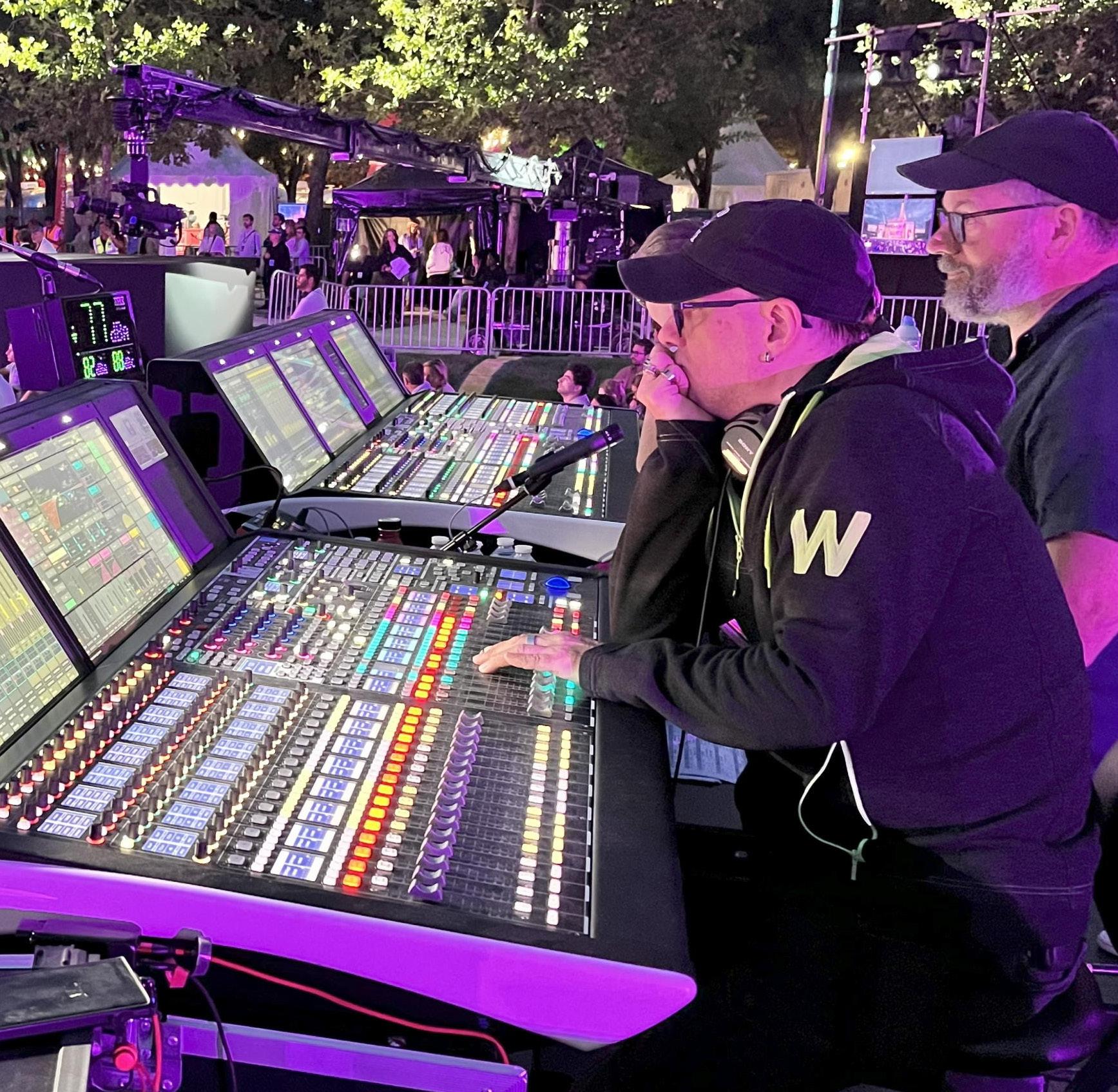
Stage monitoring was skilfully managed by Tahar Boukhlifa and Charles Bouticourt. They operated a 32-fader mc²56 with a 16-fader extender in a two-operator configuration with two separate control surfaces, ensuring precise monitoring throughout.
The setup included a redundant pair of A_UHD Core audio engines shared among the three consoles, with a redundant RAVENNA network integrating FOH and stage.
A central HOME management cluster connected, managed, and secured all aspects of this live production environment.
Radio France also deployed an OB truck equipped with an mc²66 MkII console to produce the audio clean feed for French radio and television, as well as for the Eurovision
network. Laurent Fracchia was responsible for the broadcast mix in the OB truck (Régie 5).
The evening was broadcast live on France 2 and france.tv, and simulcast by EBU-Eurovision in over 10 countries, making it one of the world’s largest classical music events.
A large audience gathered on the Champ de Mars to attend the performances by the Orchestre National de France, the Chœur and Maîtrise de Radio France, conducted by Cristian Măcelaru, alongside internationally renowned opera singers and soloists including Aida Garifullina (soprano), Julie Fuchs (soprano), Bruno de Sá (sopranist), Rihab Chaieb (mezzosoprano), Benjamin Bernheim (tenor), Florian Sempey (baritone), Gautier Capuçon (cello), Dom La Nena (cello), Bomsori Kim (violin),
Bohdan Luts (violin), and Saehyun Kim (piano).
As tradition dictates, the night reached its grand finale with a breathtaking fireworks display lighting up the Eiffel Tower and the Trocadéro gardens, a dazzling spectacle that echoed the spirit of France’s National Day.
With 2.9 million viewers tuning in on France 2, countless more listening via France Inter radio, and audiences across the globe watching live through the Euroradio and Eurovision networks, the Concert de Paris once again proved itself not just a national treasure, but a global celebration of music, unity, and French pride.
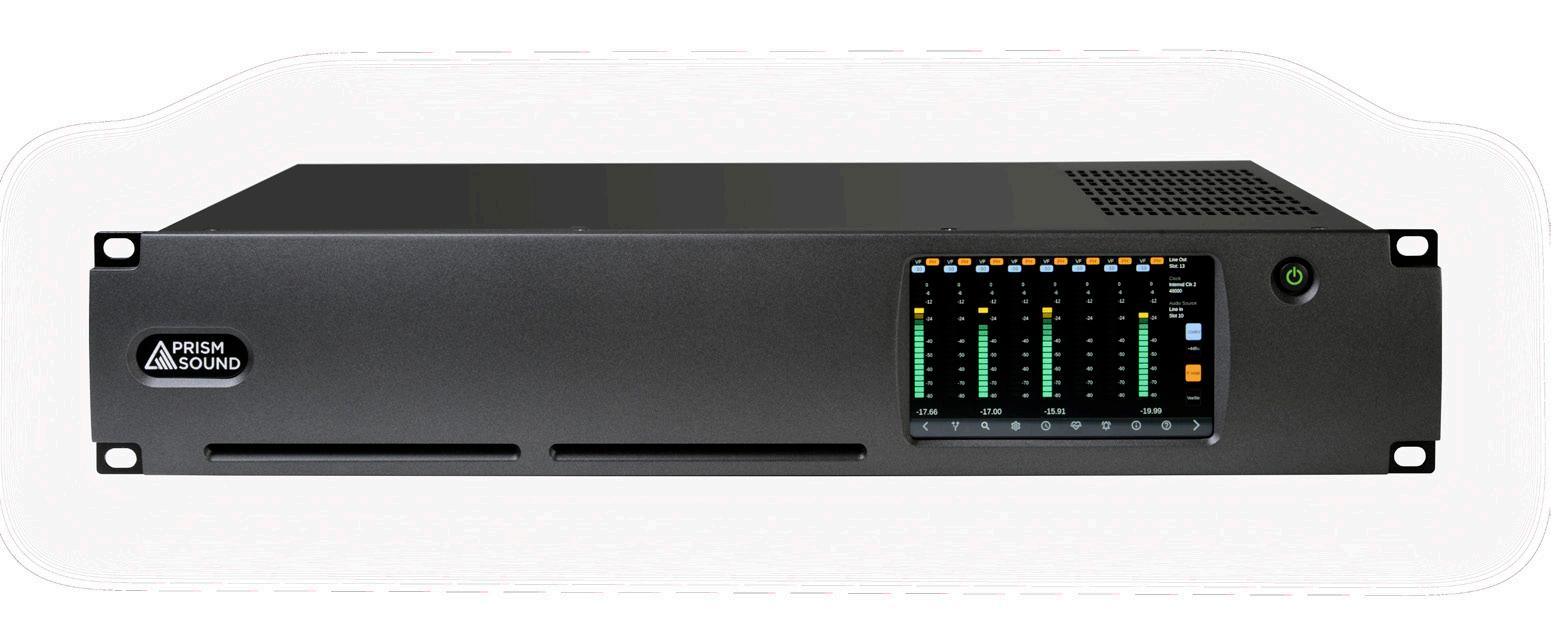



To celebrate its 50th anniversary in true rock ‘n’ roll style, the Adam Hall Group has unveiled a legendary piece of music history: the fully restored, psychedelically-painted tour bus once used by Paul McCartney and Wings during their 1972 European tour. Presented for the first time on the company’s campus in Germany, the iconic double-decker now takes pride of place in the Rock‘n’Roll Library at the Adam Hall Experience Centre, and is symbolic of the company’s anniversary claim, namely: “Honoring the past, driving the future.” Headliner hops aboard the most famous bus in the world…
The tour bus – a Bristol KSW5G, built in 1953 – was specially converted in 1972 for the European tour of Paul McCartney’s new band Wings. Instead of travelling by plane, McCartney opted for a double-decker bus designed by artist Geoffrey Cleghorn in psychedelic colours inspired by the Beatles’ album Yellow Submarine
The unique historic vehicle was discovered and purchased at auction by founder and classic car enthusiast David Kirby. The bus, which travelled through nine countries during the Wings Over Europe tour, has a close link to the company’s DNA, because
it was more than just a means of transport. It was an expression of a new mindset: instead of travelling in planes and limousines, McCartney travelled through Europe with his band, family and friends in 1972.
A home on wheels, a creative retreat and a symbol of a time when music, community and freedom were inextricably linked. This makes the Wings bus the forefather of the modern band tour bus – and one of the last authentic artefacts of this era.
“THE WINGS BUS IS A SYMBOL OF NEW BEGINNINGS, JUST LIKE THE FOUNDING OF OUR COMPANY IN 1975.”
“The Wings tour bus was ahead of its time,” confirms Alexander Pietschmann, CEO of the Adam Hall Group. “It stood for a new way of living and travelling on tour: human, communal, respectful. It is also food for thought when it comes to the future and a symbol of how music, mindset and freedom can work together.”
The legendary vehicle was discovered by British restorer Tom Jennings in Tenerife. He brought the bus, which
has its very own fan base, back to the UK and invested over 26,000 hours in faithfully restoring it.
“I’ve been a Beatles and McCartney fan since I was 11 years old – that was in 1962,” reflects Jennings. “When I saw the 2019 bus in its dilapidated state, I was immediately captivated by its magic. I really wanted to restore it to the condition that once made it the ‘Most Famous Bus In The World’.”

“For me, the Wings bus is a symbol of new beginnings – just like the founding of our company in 1975,” comments Dave Kirby, who built up the Adam Hall Group in Germany.
In future, the bus will not only serve as an exhibit in the company’s own Rock‘n’Roll Library, but also as an inspiring creative space for employees, visitors and cultural music projects. The ceremonial unveiling of the iconic tour bus was a highlight of the Adam Hall Group’s 50th anniversary celebrations in July 2025, held at the company’s headquarters in Neu-Anspach.
Right outside the Experience Centre, the newly created “Adam Hall Street” bus stop – a nod to its London roots – offers visitors a unique arrival point where music history meets cuttingedge innovation. It’s a fitting symbol of the company’s journey: rooted in the past, yet boldly driving into the future.
1972WINGSTOURBUS.COM ADAMHALL.COM



When your career spans commercials, documentaries, sports, and news across the gulf south, the unpredictable nature of these productions demands gear that is not only flexible but undeniably durable and reliable. For nearly two decades, New Orleans-based Eric Ledet has relied on Lectrosonics wireless equipment, including SRc and LR series receivers and SMV, SMQV, and IFBR1 transmitters. Headliner discovers how his kit performs consistently, even “when life happens” on location.
Ledet’s years in the industry have taken him all over the United States and across the world, and today, he specializes in commercial, documentary, corporate, IMAX, sports, and news work.
Originally pursuing political science and law school, Ledet’s journey into audio production started one fateful day when a friend needed help with sound for a short film – mainly because he was a musician and therefore “knew more about audio than anyone”.
His first attempt went badly, as he lacked the right equipment or knowhow. But with his interest piqued, he decided to seek guidance and called Al McGuire, CAS, a seasoned production sound engineer in Jacksonville, FL. McGuire became his mentor and quickly began to show him the ropes, first taking him on a commercial shoot and later hiring him as a boom operator. Ledet’s career path was set. He abandoned his law school plans and never looked back.
McGuire wasn’t just a mentor; he was an avid believer in the Lectrosonics brand, and thanks to his advice, it was the gear that Ledet used right from the beginning.
“A PRODUCER LISTENING FROM THE TOP OF THE SCORE BOX HAD NO ISSUES. YOU JUST CAN’T BEAT THE RANGE OF LECTROSONICS PRODUCTS.”
Ledet has stayed loyal to the brand throughout his career, progressing through early receivers like the UMC195, UCR211, and UCR 411, to the SRs and SRc receivers used in his bag today.
He also relies on SMV and SMQV transmitters, as well as IFBR1B UHF receivers, and appreciates the compact LR digital hybrid receiver, saying that he finds it “great for those small cameras where there’s not a lot of real estate. You just pop in a couple of batteries and you’re good to go.”
A key reason for his continued reliance on Lectrosonics is its durability. Ledet recounts shooting a pilot in the rain for the Bert Kreischer show during the Cajun Mardi Gras Festival in Eunice, Louisiana.
“All of a sudden, Bert started rolling around in the mud, exposing the transmitter to the elements, but it never stopped the whole time,” he recalls. “I still use that transmitter to
this day, and it’s one of the reasons why I’ll always say Lectrosonics’ durability is something that nobody else compares with.”
Ledet also highlights the range of Lectrosonics’ offerings. While working on an ESPN documentary about Buddy Teevens, the revered football coach from Tulane University and Stanford, he needed to capture audio covering an entire football field. The SMQVs, particularly using the quarter-watt option, performed flawlessly, “Not missing a beat the whole time,” he enthuses.
Camera operators using R1As across the field also had reliable reception.
“They came back to me and said how surprised they were with the performance. Even a producer listening from the top of the score box had no issues,” he points out. “You just can’t beat the range of Lectrosonics products.”
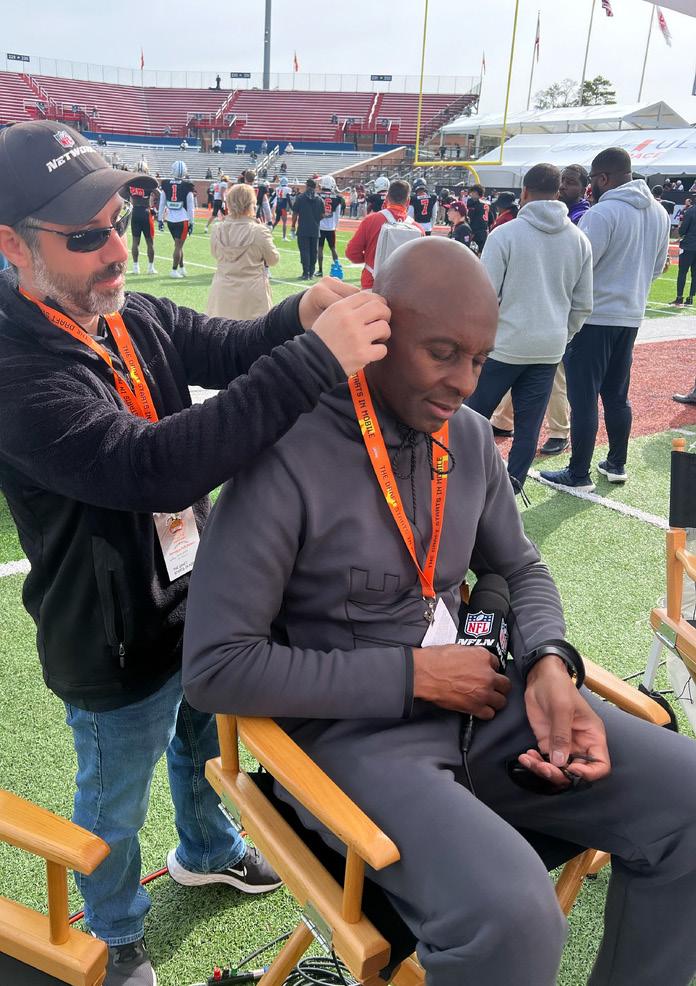

The flexibility of Lectrosonics gear allows him to handle diverse and sometimes unexpected situations. On a commercial for Popeye’s Louisiana Kitchen, the director suddenly decided they wanted to drive through the French Quarter, and capture the audio from a follow van. Ledet quickly set up his Lectrosonics gear with antennas to run to the back of the vehicle and the outside of the follow van, and is pleased to report that the system performed without issue:
“Sometimes we have plenty of preparation, and sometimes we have to tinker and make things happen on the spot. No matter what I throw at it, my Lectrosonics gear has never let me down in the moment,” he smiles.
For an upcoming CBS Sunday Morning design segment filmed across New Orleans, Lectrosonics gear was used to capture clarinetist Doreen Ketchens in a picturesque setting overlooking Jackson Square. “By planting our mics and transmitters, we allowed them to capture a
wide shot while still getting crystal clear audio of her performance,” he explains.
“Thanks to their consistent durability, reliability, and flexibility, Lectrosonics products provide what I need to focus on capturing great sound, regardless of the production environment,” he says.
“But beyond the performance and durability, I can’t say enough good things about their hands-on approach to customer service,” he adds. “With Lectrosonics, you talk to a real person who understands what you’re trying to accomplish. You don’t get that level of support from most companies these days. Lectrosonics has been a great partner to me over the years, and I stand by them 100%.”
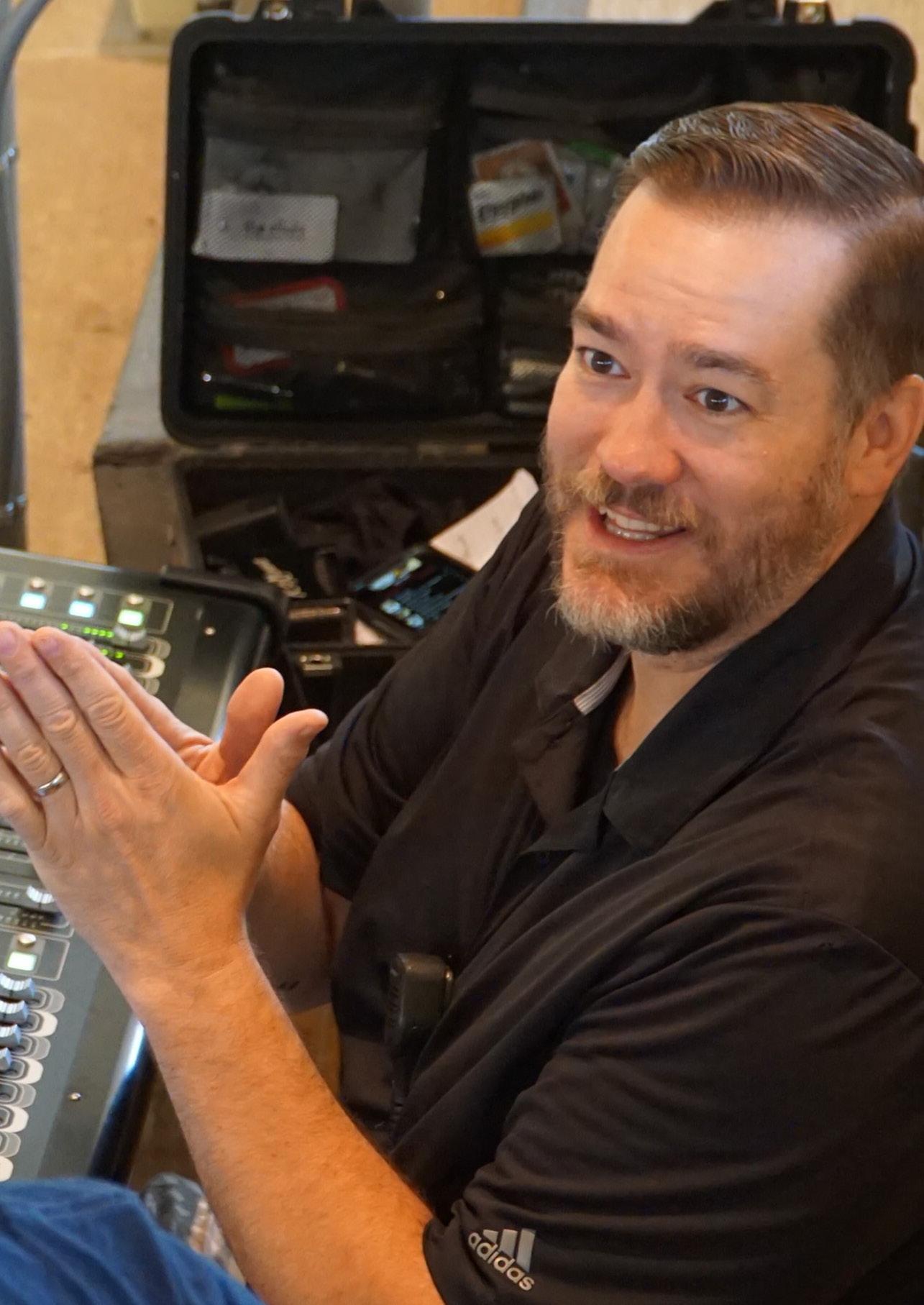
In his latest Headliner column, pro audio executive Mike Dias profiles Paul Klimson, a veteran sound engineer whose career spans everything from The Tonight Show Starring Jimmy Fallon to arena tours with Justin Timberlake, The Roots, and Kelly Clarkson. As co-founder of The Roadie Clinic and a longtime advocate for mental health in the touring world, Klimson offers more than just technical wisdom; he brings systems thinking, emotional intelligence, and operational precision to every stage he touches. Here, he shares what it really takes to build a great show, and how signal flow, reference, and ruthless self-assessment can elevate any performance, on or off the road.
There’s a moment right before the lights go down, before the illusion begins to shimmer, when Klimson sees it all at once. He sees the empty arena for what it is: a gymnasium. A concrete bowl. A structure with fluorescent lighting and scuff marks on the floor. Then, he flips the switch. Because he doesn’t just run sound, he builds universes.
For over two decades, Paul Klimson has been behind the curtain of some of the most high-stakes audio environments on the planet. From Broadway pits to arena tours, from Adele’s solo broadcast debut to the nightly precision of The Tonight Show Starring Jimmy Fallon, he’s seen it all. But what sets Klimson apart isn’t just his résumé. It’s his operating philosophy.
“You’ve got to build your cockpit,” he says. “Everything that surrounds you needs to serve you. You organize for control and comfort. That’s what creates the illusion.”
At the heart of Klimson’s system are three deceptively simple elements: Signal flow, reference, and selfassessment. Master these, he says, and you can craft anything, whether it’s a world-class monitor mix or a Twitch stream.
SIGNAL FLOW: KNOW WHERE THE WATER’S GOING
Klimson thinks about signal flow the way a systems engineer thinks about process integrity. Where’s the input? Where’s the leak? What happens between the source and the output? “It starts with your voice,” he says. “Then it gets converted, digitized, shaped. The question is: do you understand what happens next?”
Understanding signal flow isn’t just technical. It’s creative. It’s about eliminating friction, building systems anyone can walk into and use. Klimson calls it “decoding the
Master the signal before the flow
“IF YOU DON’T RESPECT THE SEQUENCE, THE WHOLE THING STALLS.”
software,” but it’s really about laying a foundation so the artistry can shine.
REFERENCE: WILL IT WORK IN THE REAL WORLD?
Once the signal is clean, it has to be translated. Klimson pushes creators, whether they’re engineers, streamers, or C-suite presenters, to ask the one question most skip: how does it land?
“You can’t just listen to your laptop,” he says. “You’ve got to know how your mix sounds on a phone. In a car. On a livestream. On someone else’s headphones. The ecosystem matters.”
To Klimson, reference isn’t just a loudness check. It’s emotional. “Would you listen to this? Would you care?” If the answer is no, the work isn’t done.
SELF-ASSESSMENT: THE DISCIPLINE TO REFINE
This is where Klimson gets honest.
“You’ve got to sneak up on perfection. That means running your game tape. Watching what works. Rehearsing until you know exactly what’s going to break, and planning for it.”
Whether it’s prepping a Fallon segment or tuning a room on tour, Klimson treats tech like a living thing. It mutates. Fails. Updates. But none of
that should throw the show. “You’ve got to log in 20 minutes early. You’ve got to build your tension, set the vibe, and then hit that intro like it matters. Because it does matter.”
For Klimson, the “pop” – those first 30 seconds when the audience leans in – is everything. Nail that, and you’ve earned the right to hold their attention. Blow it, and the illusion cracks.
TOURING IS JUST AGILE AT SCALE
Behind every sold-out arena is a choreography of gear, labor, and logistics that rivals the complexity of any Fortune 500 product launch. Klimson doesn’t just think like an audio engineer; he thinks like a systems architect. From sequencing load-ins based on rigging points to reverse-engineering outcomes from audience emotion, his entire method mirrors enterprise-level operations.
“Space and time are always at a premium. The first truck through the dock decides everything. You don’t lift lights before motors. There’s an order of things. If you don’t respect the sequence, the whole thing stalls.”
Every show is an org chart in motion. A logistics matrix. A team alignment exercise disguised as a soundcheck.

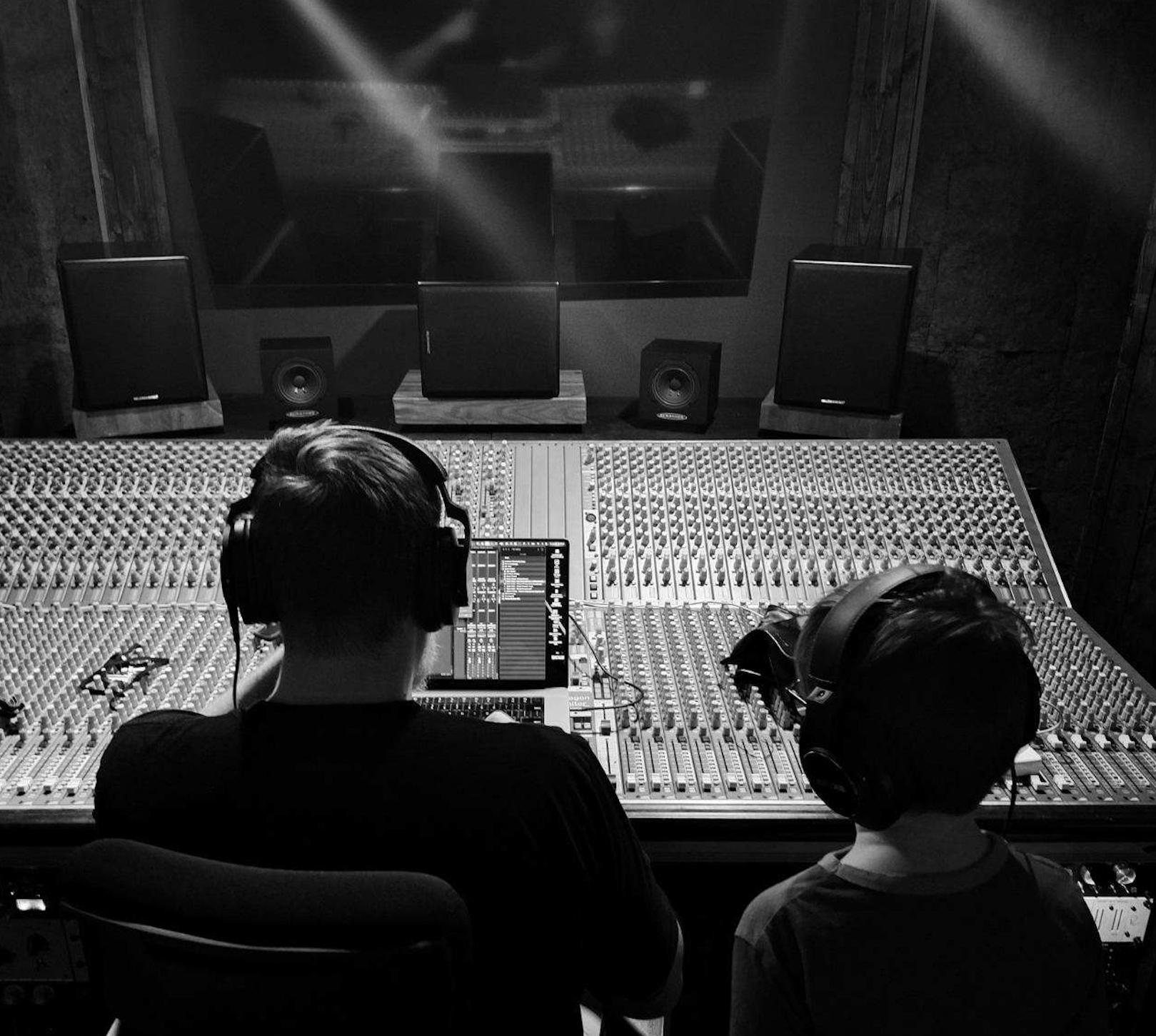
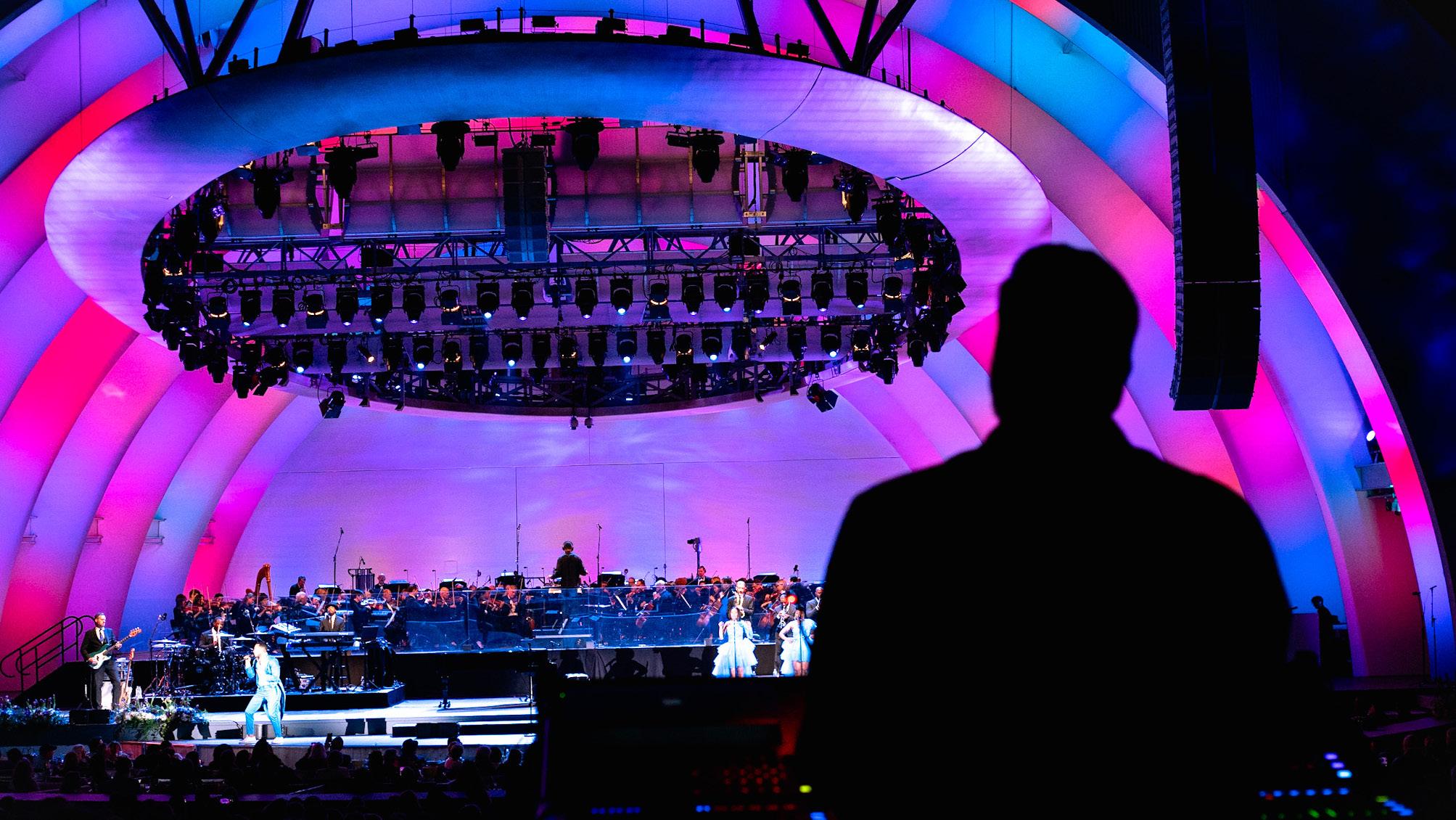
But Klimson’s story doesn’t end in the control room. In 2020, alongside his wife Courtney, he co-founded The Roadie Clinic, a nonprofit dedicated to supporting touring professionals and their families. It’s the work he now calls his next act.
“There’s this whole world behind the artist,” he says. “People who give everything to make magic happen, and often carry the cost.”
The Roadie Clinic provides resources, community, and real-world healing for the crew members who make the show go on. It’s not a side project, it’s a mission. And just like his audio work, it’s rooted in structure, care, and truth.
Klimson doesn’t chase applause. He chases the moment the lights go out, and the show begins. And for anyone willing to do the work, he says, the principles are the same: Decide what experience you want to create. Work backward. Build your cockpit. Run the tapes. Rehearse the chaos. Then hit that downbeat like it matters.
Because the audience is waiting. And they know when the show is real.
Klimson’s rules apply whether you’re mixing in-ears or managing earnings. Know your signal flow. Keep your reference honest. And have the guts to self-assess, before the audience does it for you. In other words, this isn’t just a framework for live events.
Founded by Klimson and his wife of Theory One Productions, The Roadie Clinic is a nonprofit dedicated to supporting the physical, emotional, and financial well-being of touring professionals and their families.
You might know Paul from The Tonight Show, The Roots, John Legend, or Drake, but the Klimsons’ most important work happens offstage. Their mission to care for the road crew behind the scenes has earned them national recognition, including features in Rolling Stone and Good Morning America. The Roadie Clinic exists to empower and heal the people who keep
your favorite shows running. If the magic of live music has ever meant something to you, consider donating to help keep the illusion alive.
Mike Dias writes and speaks about Why Nobody Likes Networking and What Entertainers Can Teach Executives. He is one of the few global leaders in Trade Show Networking, and he helps companies maximize their trade show spend by ensuring that their teams are prepared, ready, and able to create and close opportunities. This column will be an ongoing monthly feature because Mike loves talking shop and is honored to give back to the community. If this article was helpful and useful in any way, please reach out anytime at Mike Dias Speaks and let Mike know what you want to hear more about next time.



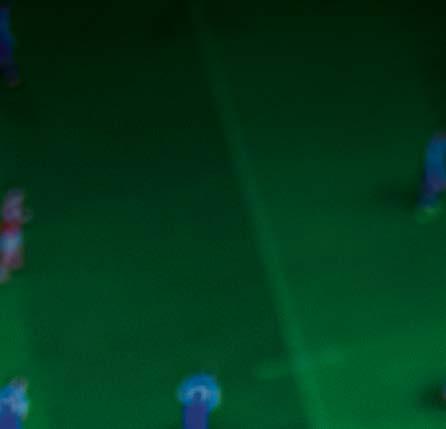

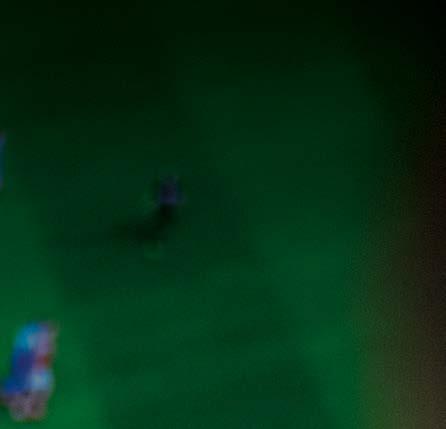





REPLAY FOR EVERYBODY, EVERYWHERE.
RiMotion is an easy-to-install replay solution that can be implemented almost instantly in broadcast environments of any scale. It streamlines traditional and modern workflows and provides real-time performance, even when working remotely.
• Intuitive touchscreen




